REU students went on an amazing tour of the Givaudan Citrus Variety Collection by Dr. Tracy Kahn on Friday June 27th
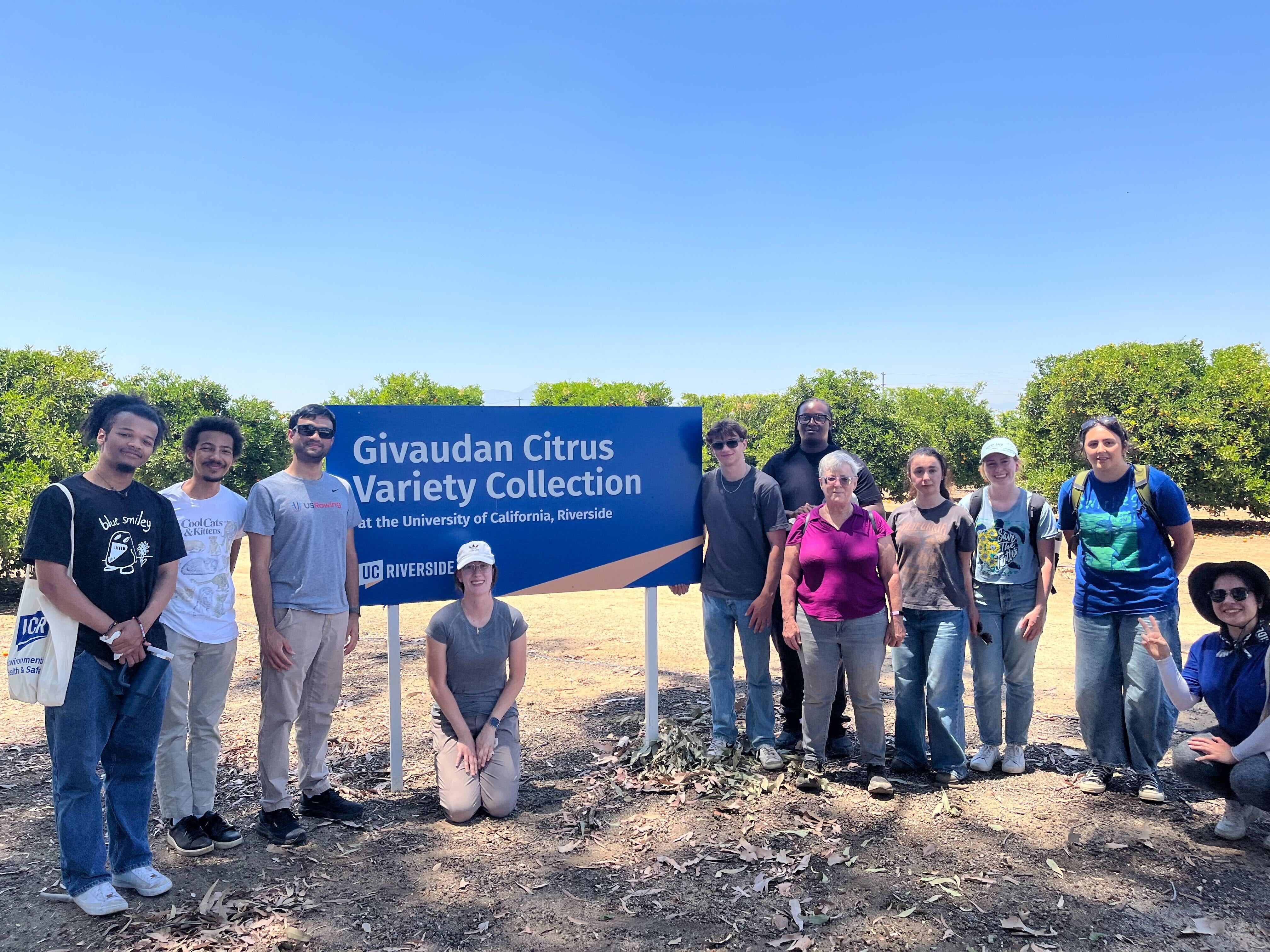
REU 2026
Isabel (Chaveli) Diaz
UCR Lab/PI:
Carolyn Rasmussen
Citrus College
Microtubules are responsible for cell development, elongation, organelle transport, and cell division. They play a crucial role in many cellular functions. However, microtubules require disassembly and reallocation once their purpose has been accomplished. In plants, the protein katanin is responsible for severing microtubules by accumulating at microtubule cross sections. In analyzing symmetric divisions in maize (Zea Mays), it was observed that a lack of katanin produced cells with defects in cell elongation, division positioning, and preprophase band (PPB) placement. Notably, the nucleus was quantifiably more offset (p < 0.0001) in katanin compared to the wild type during prophase, but not in interphase. Indicating that during prophase the nucleus of the katanin mutant cannot properly migrate toward the center of the cell. We sought to better understand the cause for the offset. Whether the offset was caused by the mutant’s nuclear positioning or the irregular PPBs. The functions of both rely on katanin’s ability to reallocate microtubules. Due to the deficiency in the microtubules, the katanin mutant presents with typical and atypical PPBs. In measuring the nuclear offset in reference to the differing PPB types, it was found that the nucleus was positioning itself closer to the PPB. This was expected, however, the uneven distribution of microtubules produced uneven PPBs. The nucleus was significantly (p< 0.001) more offset in mutant uneven PPBs compared to wild type uneven PPBs. Since the offset was greater in the mutant this causes us to speculate that this offset was measured in mutant exclusive PPBs such as 1-sided and misoriented. The nucleus appears to be going toward the highest accumulation of cortical microtubules. Suggesting that nuclei in katanin do rely on the PPB to orient themselves for division. Both nuclear positioning and the PPB affect each other’s final localization during prophase.
Austin Gordon
UCR Lab/PI:
Dawn Nagel
Southwestern University
Breeding plants for resilience against climate change is important to protect crop yield which is negatively impacted by heat stress. Heat stress response in plants is largely dependent on the circadian clock, but the mechanisms behind this regulation are poorly understood. One group of genes which have cyclic expression are the B-boxes (BBXs), a family of zinc finger transcriptional regulators in plants which are involved in photomorphogenesis, thermomorphogenesis, and response to abiotic stresses. In Arabidopsis, BBX18 is upregulated under heat stress, and overexpression of BBX18 results in decreased survival after prolonged heat exposure. In addition, two tomato BBXs have been shown to enhance thermotolerance, indicating the BBXs have a conserved role in heat stress response in plants. While the BBXs have been characterized in several species, their function in rice (Oryza sativa) in the context of heat stress and the circadian clock is not well understood. Rice contains 30 BBXs, and preliminary data suggests that some are differentially expressed under heat stress. Of these, OsBBX29, a homolog of AtBBX18, is upregulated during the day in response to heat. To understand the functional role of OsBBX29 in heat stress, we aim to characterize OsBBX29 using molecular confirmation and physical characterization of overexpression (OE) lines under control and heat stress conditions. Understanding the underlying mechanisms of OsBBX29 can allow us to understand how the circadian clock maintains timed stress response in plants and advance our efforts in generating resilient crop varieties.
Brennan Voss
UCR Lab/PI:
Robert Jinkerson
Simpson College
Plant cell cultures rely on sucrose as a carbon source, limiting sustainable and economic production of plant-derived compounds. Artificial photosynthesis-derived acetate is an alternative; however, plants cannot sustainably grow on potassium-buffered acetate alone, and concentrations above 2 mM negatively affect cell growth. Here, we explore factors associated with acetate feeding and their effects on cell growth and viability. Citrus paradisi (grapefruit) suspension cultures grown without sucrose experience dramatic pH fluctuations as acetate is fed and consumed, while sucrose-grown cultures self-regulate pH around 4.6 regardless of initial pH (2.8–8.2). Putative mutant C. paradisi were artificially selected using 8 mM acetate. Cell lines differed in their response to medium containing acetate in terms of growth and organic acid production. Formate and malate were found in specific C. paradisi culture media. Malate production was elicited by [K+] above 25 mM and not just by potassium acetate feeding in wild-type cells. Notably, the putative mutant does not produce malate in response to acetate, suggesting its improved tolerance arises from the K+ response rather than acetate alone. These results indicate that acetate limitations extend beyond acute toxicity to include pH instability and [K+], identifying key considerations for acetate-based artificial photosynthesis systems.
Keith Hudson
UCR Lab/PI:
Sean Cutler
Reinhardt College
Plant-microbe interactions are an important factor in plant growth, and engineering these interactions have broader potential for crop production and health. Specific soil microbes form positive relations with plants and can help them gain extra nutrients outside of the plant's rhizosphere. An example of this is called nitrogen fixing. This pathway is only active in microbes when they are in the presence of a plant due to the high fitness cost that comes with fixing nitrogen. In return, the plant offers the microbe an extra carbon source and a safe environment which allows the microbe to go through this exhaustive pathway. We want to engineer microbes with the ability to sense compounds to facilitate a synthetic pathway between plants and microbes. I aim to create a synthetic pathway that is only active in the presence of the plant due to a plant-produced compound. Here we report the findings of working biosensors transformed into soil microbes that respond to plant produced ligands. With these findings, we can move to engineer microbes that also respond to soil contaminants and activate a pathway that could let people know if their soil was contaminated.
Taran Kermani
UCR Lab/PI:
Katie Dehesh
University of Delaware
Senescence, a programmed process characterized by extensive metabolic, structural, and physiological reprogramming, is triggered by developmental and environmental cues. Prolonged darkness induces senescence, accompanied by increased accumulation of ubiquitinated proteins, the autophagy marker ATG8, and, unexpectedly, N-glycosylated proteins. This counterintuitive rise in glycosylation under carbon starvation suggests a potential regulatory role for glycosylation in the onset of dark-induced senescence. Transcriptomic analysis identified two putative glycosyltransferases, GT1 and GT2, with elevated expression during dark treatment. To investigate their functional relevance, we employed CRISPR/Cas9-mediated dual-gene editing to generate gt1gt2 knockout mutants. Restriction enzyme-based genotyping and Sanger sequencing confirmed multiple independent mutant alleles. Phenotyping of homozygous double mutants is underway to assess whether GT1 and GT2 knockout alters the timing of senescence, either accelerating, delaying, or maintaining the typical onset. This work establishes a genetic foundation for dissecting the role of GT1- and GT2-mediated glycosylation in the molecular control of dark-induced senescence.
Shahan Baker
UCR Lab/PI:
Sunil Kenchanmane-Raju
Delaware State University
Maize is one of the most important agricultural commodities in the world. The utility of this crop extends from food, feed, and forage purposes to the synthesis of renewable chemicals. With the increased frequency of extreme weather events, maize productivity is under threat. Among various abiotic stressors, water limitation poses a significant challenge to sustainable maize cultivation. Plant roots play a critical role in water and nutrient uptake, and understanding the molecular basis of root architecture traits could facilitate integration of drought resilience in commercial cultivars. To this end, we phenotyped root traits for maize seedlings under well-watered and water-limited conditions using the cigar rolls setup. We found that under water limitation, root traits including root length, shoot length, number of lateral roots, and the lateral root density were significantly reduced compared to the well-watered control. Highlighting the negative consequences of water limitation. Conversely, the ratio of root length to shoot length was significantly higher for water-limited samples. This suggested that the above-ground biomass was more severely affected by the treatment. To define the molecular basis of the observed difference, we worked on bulk RNA-seq data for maize primary roots and lateral roots from well-watered conditions. We also propose the extension of this approach to single-nuclei RNA-seq to reveal the cell-type level regulatory mechanisms shaping root morphology and response under water limitation.
Hanna Waite
UCR Lab/PI:
Meng Chen
California Polytechnic State University San Luis Obispo
Chloroplasts are photoenergic organelles in plants. Besides their essential role in photosynthesis, chloroplasts are also signaling organelles that communicate with the cell nucleus via nucleus-to-plastid (anterograde) and plastid-to-nucleus (retrograde) signaling. Our lab pioneered the discovery of an anterograde signaling pathway in which nuclear-localized phytochrome photoreceptors activate the bacterial-type plastid RNA polymerase, thereby initiating the transcription of plastid photosynthesis genes and the subsequent biogenesis of chloroplasts. Our recent work reveals a previously uncharacterized function of chloroplasts in sensing high temperatures. We demonstrated that high temperatures trigger starch degradation in chloroplasts, resulting in the production of sucrose that stimulates cell elongation. However, the mechanism by which chloroplasts sense temperature changes remain a mystery. I utilized state-of-the-art cell imaging analysis to investigate chloroplast dynamics in response to changes in environmental light and temperature cues.
Corinne Pagan
UCR Lab/PI:
Julia Bailey-Serres
Santa Monica College
Phosphorus is a necessary but finite element for plant growth. As crops are harvested, soil is further depleted of this nutrient. Phosphorus fertilizer delivers this nutrient, but at increasing mining costs and poses a risk to local waterways. To offset depletion, other methods of phosphorus acquisition and low phosphorus tolerance have been studied. One way that phosphorus is acquired by plants is through a symbiotic relationship with arbuscular mycorrhizal fungi (AMF). Previous studies have also shown that pre-colonized nurse plants promote higher colonization in target plants. OsPSTOL1, originally found in rice varieties, is a gene that induces early crown root growth in low phosphorus conditions in wheat. It is unknown if OsPSTOL1 lines experience different degrees of colonization in comparison to wild-type (WT) counterparts, and if nurse plants improve the colonization for the WT and transgenic lines. To begin answering this question, a time course was performed from four to six weeks post-germination in wheat. One WT line and two OsPSTOL1 wheat lines were planted with and without pre-colonized leek plants. Each week, three plants from each condition were harvested and half of the roots were stained with wheat germ agglutinin (WGA). Colonization was quantified based on the amount of AMF structures observed via microscopy. Additionally, qRT-PCR was used to measure the levels of TaPT10, a phosphate uptake transporter gene that is only expressed in arbuscules. Preliminary results indicate that wheat grown with a nurse plant trend toward increased colonization, but further testing is needed to know if there is a difference in colonization between the WT and transgenic lines.
Lin Alfandary
UCR Lab/PI:
Jason Stajich
Cornell University
Microorganisms inhabiting extreme environments demonstrate extraordinary adaptability, expanding the known boundaries of what is considered habitable. Among these microbes are endolithic fungi, fungi denoted by their ability to colonize rocks. Within these lithic environments are microhabitats made of pores and fissures inside the rock. These rock fissures are low nutrient environments, but buffer microbes from desiccation, temperature extremes, and intense solar radiation. While there are many different types of fungal communities that colonize the endolithic niche, one of the most interesting fungi within this group are those that are melanized. Melanized fungi, specifically melanized black yeasts, are known to exhibit morphological plasticity due to both their melanized cell wells as well as their yeast-like morphology. Black yeasts remain unique from other yeasts and may exhibit filamentous growth and meristematic development. Other fungi that are of interest in these extreme dryland environments include those within the genus Rhodotorula. Rhodotorula are pink or orange carotenoid producing yeasts known for high adaptability and tolerance of a multitude of conditions, making them of interest in studies of extremotolerant microbes. Despite the wide range of genera present in these lithic communities, the diversity and culturability of such fungi remain poorly characterized, particularly in the arid deserts in the southwestern United States. In this study, fungal communities that are inhabiting sandstone across multiple desert regions are cultured and studied. By isolating, culturing, and sequencing a variety of fungal strains, we assessed both fungal morphology and genetic diversity with an aim to understand the true phylogenetic breadth of Southwestern lithic communities. Our findings highlight both the resilience and diversity of desert endolithic fungi, providing new insights into their possible ecological roles in dryland systems and the true limits of life on Earth.
Piper Ewald
UCR Lab/PI:
Arthur Jia
University of Wisconsin Eau Claire
Molecular barcoding is a tool in molecular plant taxonomy that uses short, specific, and generally conserved sequences to identify plants. In Punica granatum, pomegranate, three genes have been used as barcodes to identify maternal and intraspecific inheritance: matK, trnH-psbA, and ITS2. For this particular study, we focused on the matK gene, which is approximately 1500 base pairs long and is essential for chloroplast function. There are a no studies using molecular barcoding to explore pomegranate evolution, inheritance, and variation within the Punica genus in the United States. This highlights the need to conduct these barcoding experiments, which could be valuable for future pomegranate breeding efforts. Specific study of the matK gene can provide insight into how pomegranates are maternally inherited and how cultivars are related. If successful, analyzing DNA sequences from this gene will provide a basis for validating variety assignments and identifying unknown pomegranates. The barcoding project presented here is an homage to the work done internationally by pomegranate genetics research groups, such as Shiva Shahsavari’s project in Iran, where they analyzed matK and trnH-psbA sequences for 77 pomegranate cultivars. After demonstrating that 14 pomegranate cultivars amplified a band for the entire matK gene, we constructed a phylogenetic tree illustrating their maternal relationships with one another. We also analyzed the chlorophyll content of the cultivars and compared it to the chlorophyll A and B adsorption spectra. Together, these data sets confirmed that there is variance in pomegranates concerning chlorophyll phenotypes that warrants further investigation, and that pomegranates, at least in this instance, grouped into four clades, reflecting the broader phylogenomic pattern of pomegranate inheritance.
REU Projects 2024
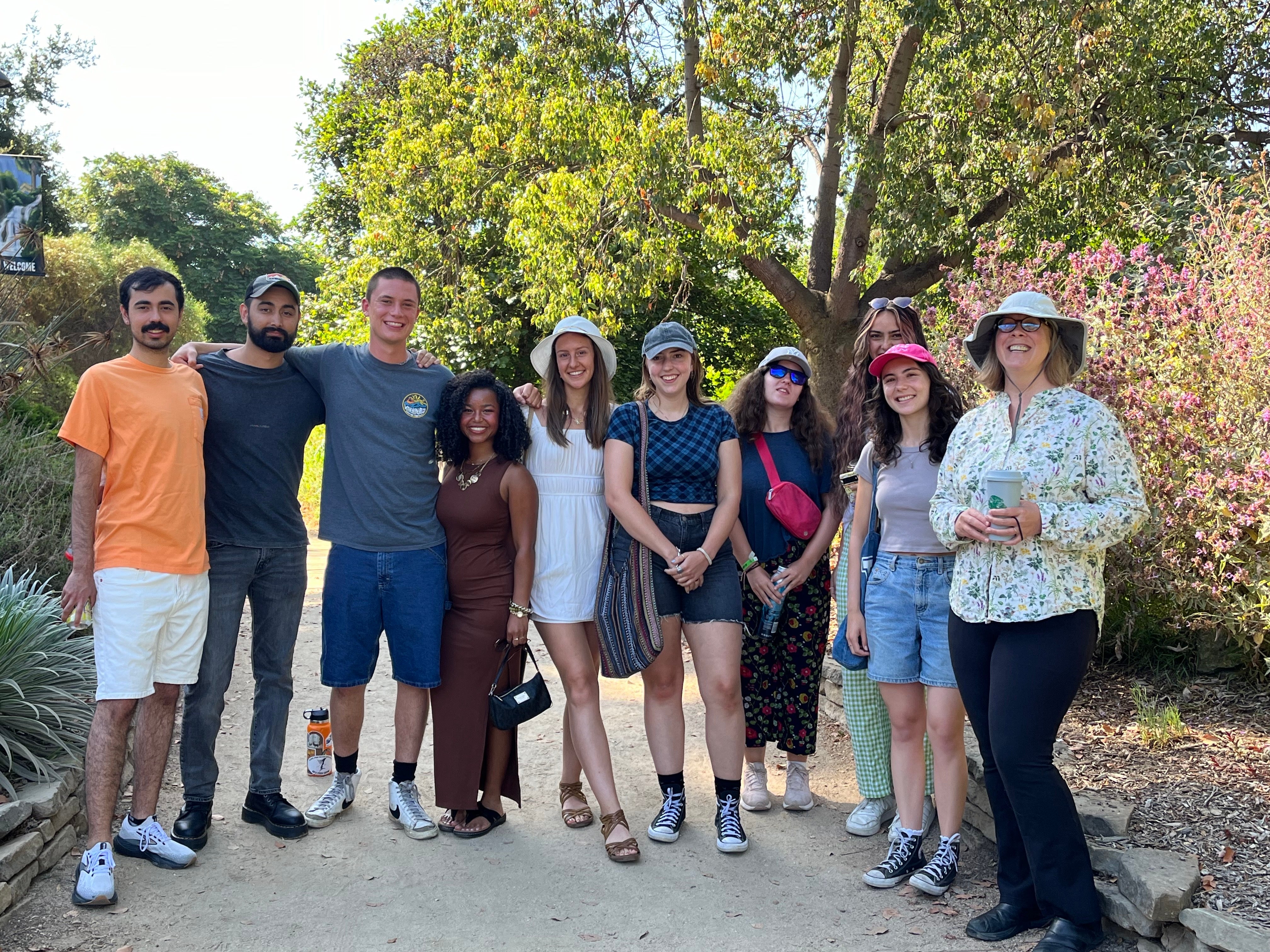
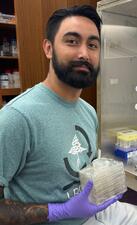
Roy Guice
UCR Lab/PI:
Sean Cutler
San Diego City College
Environmental contaminants affect the well-being of plants and animals alike. They come from many sources, such as heavy metals, animal waste, agricultural runoff, and chemical spills. Contamination can occur from a large-scale spill or build-up over time, so we must have good detection methods for both. Biosensors can be a quick, easy, and cost-effective way to detect contamination. Detecting contaminants usually involves an individual evaluating potentially contaminated soil by taking samples and running them through liquid chromatography-mass spectroscopy (LC-MS), which can be a lengthy and expensive process for wide areas of land. The long-term goal of the project I am working on is to create plant “sentinels” – biosensor plants that produce easily observed phenotypic changes in response to chemical contaminants, which could provide a more scalable sensing alternative for hazardous chemicals across wide areas. I am working to create a biosensor for the contaminant JP8, which is a commonly used jet fuel by the U.S. armed forces that contains a mix of many harmful chemicals. JP8 is known to cause damage to the liver, decreased immune response, impaired performance on neurological tests, impaired hearing, skin alterations and has some links to various cancers when absorbed by a person’s dermal tissue.1 To achieve this goal, we are modifying the natural reaction between the receptor to Abscisic acid (ABA) Pyrabactin Resistance 1 (PYR1) and the protein phosphatases two clade (PP2C) signal transducer Hypersensitive to ABA1 (HAB1). In nature when a plant responds to stress it upregulates ABA production, leading to ABA binding to its receptor, PYR1, and inducing a dimerization with the protein HAB1 to lead to downstream drought responses. I am working on modifying this natural sensor system to create a biosensor that responds to JP8-related molecules. [] If our experiments are successful, we could use plants with the new PYR1-JP8 sensor to be an easy detection source that anyone could monitor by producing a downstream change in its phenotype allowing large areas of land to quickly be surveyed for contamination over long periods of time. A JP8 biosensor has the ability to protect the health of service members that would have unknowingly contacted the chemical otherwise.
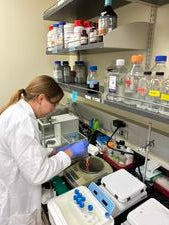
Olivia Thorgersen
UCR Lab/PI:
Niels Groen
College of Marin
Root-knot nematode (RKN) infections reduce crop productivity worldwide, costing farmers USD $173 billion in yield losses each year. The development of accurate and rapid methods to detect and quantify infection is needed in order to minimize crop losses and identify resistant crop varieties. Current diagnostic tests use PCR to determine RKN presence in soil, but without in planta counting, we lack information on RKN population size. The goal of this research is to develop primers for quantitative PCR (qPCR) to detect and quantify RKN infection in rice (Oryza sativa) and verify our results using traditional acid fuchsin staining methods. We began by designing primers for amplifying RKN mitochondrial genes. While further optimization of primers is needed, preliminary results suggest that RKN DNA can be extracted from infected rice root systems. Upon optimization of primer sequences, we will compare results from qPCR quantification of nematode DNA in infected root systems with results from acid fuchsin staining and counting of nematodes to evaluate whether qPCR can faithfully reflect differences in RKN population sizes within biological samples.
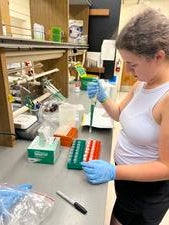
Katherine Schott
UCR Lab/PI:
Philippe Rolshausen
Allegheny College
Testing Bio Infuze as a bioinoculant in nursery vines
Fungal pathogens are known to be endemic in nursery vines. Common causes that contribute to infections in young grapevines involve improper irrigation, insufficient care of the soil, contamination, and infected mother vines. Nursery preparation stages like grafting and pruning can make grapevines vulnerable to infections, which leads to symptoms such as wilting, stunted growth, discoloration, and necrosis. Bioinoculants are one management strategy that can enhance growth and help control pathogenic microbes in vine nurseries. Their effectiveness depends on factors like interactions with existing microbes, the host genome, and the root structure. This project investigates the effectiveness of Bio Infuze as a commercial bioinoculant in young grapevine nurseries. This project evaluates the effectiveness of Bio Infuze, a commercial bioinoculant, in young grapevine nurseries. The study involved recording shoot growth and biomass from 20 nursery vine samples (10 per treatment) and measuring necrosis in vascular tissues using imaging software. Additionally, bacterial and fungal communities were profiled using ITS and 16S Illumina sequencing, and fungal pathogen isolates were cultured for identification. After three weeks, no significant difference in shoot growth was observed between treated and control vines. However, there was a significant reduction in necrosis in treated vines (p=0.008). These findings contribute to improving nursery practices for producing healthier grapevines.
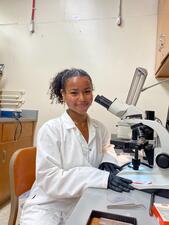
Etsub Gezahagne
UCR Lab/PI:
Arthur Jia
The College of New Jersey
A Genomic Approach to Investigating Chromosomal Variation in Pomegranate
There are many different pomegranate varieties at UCR, but only one variety is commercially available, with California producing over 90% of them. Punica granatum L. is known to have different ploidies, either 7, 8, or 9 bivalent chromosomes, which have varied impacts on pomegranate phenotypes. Our objective is to karyotype the pomegranate collection at UCR to identify the disparate cytotypes that will be characterized to lay the foundation for more precise genomic assisted breeding. Flow cytometry and cytology assays will be performed to first identify and validate the diverse pomegranate cytotypes, and then aneuploid individuals will be functionally annotated. We will also develop three barcode phylogenies which will be compared against the phylogenomic tree to validate evolutionary relationships between the varieties and to identify potential hybridization events. We expect the flow cytometry genome size quantification and cytology results to show consistent cytotypes within the varieties, as well as successful amplification of the barcode sequences. Our findings will be crucial for inferring the functional and evolutionary significance of the inheritance of these chromosomal variations, which will lay the foundation for our pomegranate breeding. Ultimately, our research aims to increase the diversity and consistency of commercially available pomegranates in the United States.
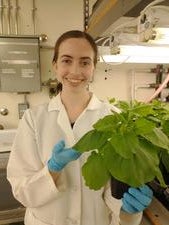
Emily Snyder
UCR Lab/PI:
Katie Dehesh
West Chester University
How stressed chloroplasts define mitochondrial morphology
The chloroplast and mitochondrion are critical organelles in plant cells, playing pivotal roles in energy metabolism and stress responses. The chloroplast serves as a metabolic hub for photosynthesis, while mitochondria, the "powerhouses" of the cell, produce ATP through cellular respiration. Their interaction is crucial for maintaining cellular homeostasis, especially under stress conditions.
Despite their importance, the link between mitochondrial form and function and chloroplast stress has been ambiguous. In our lab, we have demonstrated that mitochondria undergo significant morphological changes in response to chloroplast stress. Through proteomic analysis, we identified candidate proteins that may play a role in this process. To test their involvement, we transiently overexpressed these proteins in tobacco plants and observed changes in mitochondrial morphology. Specifically, preliminary results indicate that cells expressing these candidates display significant increases in mitochondrial length compared to controls, suggesting that these proteins are key in altering mitochondrial morphology under stress.
This dynamic interplay ensures efficient energy production, enabling plants to cope with environmental challenges. Understanding these mechanisms could lead to advancements in plant productivity. Identifying specific factors involved in mitochondrial responses to chloroplast stress can provide biotechnological tools to enhance plant resilience in the face of global warming and drought, supporting sustainable agriculture and bolstering the global food supply.
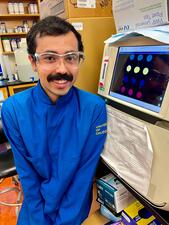
Daniel Mendoza
UCR Lab/PI:
Ian Wheeldon
Yale University
Developing Prokaryote-Plant Interkingdom Tools for Environmental Monitoring
Interkingdom signaling is a phenomenon that has been observed between plants and soil bacteria and manifests as a network of chemical communication. Previous research has demonstrated that interkingdom signaling can influence the gene expression of both plants and microbes and thus provides a promising avenue to engineer specified prokaryote-plant responses. This project describes a tools development approach to create interkingdom circuits to respond to trace amounts of environmental contaminants. This aim is considered in light of the necessity to monitor millions of acres of contaminated land in the United States to appropriately assess and respond to human and environmental risk. The task of generating bacterial biosensors, however, is complicated by the necessity for intentional control required of the biosensor to approach an appropriate input threshold and output without placing too great of a metabolic load on the bacterium. To this end, a combinational library of transcriptional units with varying promoters, ribosomal binding sites, and terminators will be constructed through 3G assembly. The performance of simple circuits constructed with validated parts will be assessed in soil-derived plant-associated (SDPA) bacteria using GFP as a universal reporter. Recent data collected with this approach has shown that two distinct organophosphates can be simultaneously and orthogonally detected in a single cell. We hope that this result will catalyze the development of synthetic gene circuits that can efficiently manage cellular resources and will ultimately facilitate the construction of complex, fine-tuned interkingdom-signaling circuits in several species of SDPA bacteria that can sense and respond to target contaminants.

Adriana Cox Gonzalez
UCR Lab/PI:
Daniel Koenig
Whittier College
Exploring the biochemical and physiological basis of adaptation to elevated temperature in cowpea cultivars at the seedling stage
Climate change is predicted to significantly increase global temperatures by the end of the century, increasing the severity of heat stress on plants, resulting in lower crop yields and increased food insecurity. To reduce these effects, heat tolerant crops, such as cowpea (Vigna unguiculata L.) have been selected to withstand adverse temperatures. Cowpea is a rustic crop that thrives in a wide range of temperatures, from 20°C to 40°C across various agro-ecological zones worldwide. While the impact of elevated temperatures on cowpea during the reproductive stages has been studied, little is known about its effect on seedlings. Additionally, the mechanisms underlying cowpea's adaptation to high temperatures are not well understood. This study aims to investigate the physiological mechanisms underlying cowpea's adaptation to high temperatures at the seedling stages. The cowpea cultivars TVu-4552 (heat-tolerant), California Blackeye No. 3 (CB3, moderately heat-tolerant), and California Blackeye No. 5 (CB5, heat-susceptible) were used in this study. These cultivars were grown to the seedling stage under controlled conditions before being transferred to growth chambers with temperature regimes of 44°C day/ 28°C night as well as an ambient temperature regime for control groups. The study focuses on parameters such as leaf temperature, stomatal aperture, and the effects of elevated temperatures on the accumulation of catalase, superoxide dismutase (SOD), and photosynthesis maintenance. Furthermore, the germination rates of these cowpea cultivars under elevated temperatures were assessed by recording the frequency of radicle and cotyledon emergence. Significant differences in response to elevated temperatures are anticipated among the cultivars. The findings of this research will provide valuable insights for selecting heat-tolerant cowpea varieties at the seedling stage, and enhancing crop management and breeding strategies in the face of changing environmental conditions.
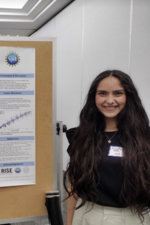
Cassetty Habib
UCR Lab/PI:
Carolyn Rasmussen
University of California, Riverside
Cell division is a fundamental process for plant growth and development. Since plant cells–unlike animal cells–can not migrate, division plane orientation is crucial for proper tissue and organ development. Plant cell division plane positioning is mediated by microtubule structures such as the preprophase band (PPB) and the phragmoplast, as well as several proteins which are responsible for maintaining proper construction and function of these structures. TANGLED1 (TAN1) and AUXIN-INDUCED-IN-ROOTS-9 (AIR9) are two redundantly functioning microtubule-binding proteins which localize to the division site. Although the loss of function of either TAN1 or AIR9 has a negligible effect on division plane orientation, tan1 air9 double mutants have misoriented divisions due to phragmoplast guidance defects as well as abnormal root cell file organization. Because of this synthetic phenotype, many functional analysis studies on the AIR9 protein have been hindered and little is known about AIR9’s functional domains. AIR9 is composed of a basic serine-rich MT-binding domain (MBD), a leucine-rich repeat domain (LRR), and a series of tandemly-repeated “A9” sequence blocks which function in protein-to-protein interactions (Buschmann et. al, 2006). Previous research revealed that constitutive overexpression of AIR9 using a 35S promoter rescues the double mutant phenotype (Hong Liang, unpublished). This project aims to understand the functional domains of AIR9 by expressing the full-length AIR9 coding sequence, as well as specific truncations of the AIR9 protein such as AIR9 Δ1 (only the MT-binding region and leucine-rich repeat region), and AIR9 Δ15 (only the leucine-rich repeat and A9 repeat regions) using both the AIR9 native promoter and KNOLLE promoter. Phenotypic rescue of the double mutants indicates that AIR9 is necessary for proper division plane orientation. This research plays an important role in understanding the mechanisms behind cell division plane positioning in plants and contributing to a significant knowledge gap in plant cell biology.
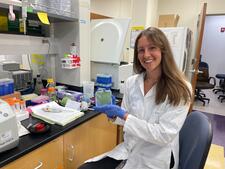
Aria Reynolds
UCR Lab/PI:
Meng Chen
Cal Poly University
Investigating the Dynamic Association of Subnuclear Organelles
A universal feature of cell nuclei are many distinct membraneless organelles collectively referred to as nuclear bodies. Nuclear bodies participate in diverse basic nuclear functions including processing RNA, regulating gene expression, and sequestering and modifying proteins. Some well studied nuclear bodies include nucleoli, Cajal bodies (CBs), and the plant-specific photobodies (PBs). Plant CBs play important roles in RNA metabolism and RNA silencing, and they are consistently associated with the nucleolus. PBs are light and temperature sensory subnuclear membraneless organelles defined molecularly by the presence of the photoreceptor and thermosensor phytochrome B (phyB). Our lab recently showed that PBs form at defined subnuclear locations based on specific centromere subnuclear landmarks. In particular, four PBs are localized at the periphery of the nucleolus. However, the dynamic association between CBs and PBs is still unknown. To explore the spatial relationship between CBs and PBs, we generated transgenic lines coexpressing the mRuby3-tagged CB component U2B (U2B-mRuby3) and CFP-tagged phyB (phyB-CFP). Using a confocal microscope, we took Z-stack images of U2B-mRuby3 labeled CBs and phyB-CFP labeled PBs to produce 3-D images of individual nuclei. We then orthogonally projected the images into 2-D images and quantified the PB-CB distance. Our preliminary data revealed a close association between CBs and PBs, which paves the way for further research into possible functional connections between the two nuclear bodies.
Eli Moloney
UCR Lab/PI:
Adam Jozwiak
Humboldt State University
20-hydroxyecdysone (20E) is a steroid found in both insects and in plants with promising medical properties. In insects, it acts as a major hormone behind major life cycle changes (ex. metamorphosis and molting). The compound is found in most arthropods but also in over 100 plant families where its function still remains unknown. Previous research done in spinach suggests 20E functions primarily as an anti-herbivory compound in plants by interrupting insect life cycles. This research aims to further interpret the biosynthesis and transport mechanisms of 20E in quinoa. The initial project is focused on varied developmental 20E levels in different tissues using liquid chromatography-mass spectrometry (LC-MS) for compound analysis. This should give insights into the active transport of 20E throughout development. If 20E acts as an anti-herbivory compound it is expected to see the highest levels of 20E during leaf emergence, the site of possible destructive herbivory. The second part of the study explores if 20E biosynthesis and transport are under circadian control. It has previously been shown that herbivore-related compounds and associated genes are mediated by the circadian clock in plants. This project will assess 20E distribution and transport in quinoa in relation to circadian rhythm, providing insight into its functional roles and biosynthetic dynamics. Combined, these projects will reveal the functional role of 20E synthesis and its transport mechanisms in quinoa. Developmentally, if we see an increased sequestration in leaf tissue during early development it further proves 20E’s biological application as a pesticide. The circadian focused experiment provides a springboard to pilot future work between insects and plant circadian clock coevolution in regards to anti-herbivory. Work done in quinoa can provide further knowledge into the functional role of characteristically similar compounds in all terrestrial plants.
REU Projects 2023

May Campbell
UCR Lab/PI:
Ian Wheeldon
West Virginia University
Enabling Environmental Biosensing with Endophytic Microorganisms
Methylobacterium is a noteworthy bacterial genus, playing a significant role as a plant symbiote. Methylobacterium, by metabolizing single carbon compounds, have uniquely adapted to living on the abaxial surface of leaves. Here they utilize methanol released from stomata, a resourceful adaptation that few other microorganisms can match. Due to its close association with plants, Methylobacterium has the potential to be used as a biosensor host to monitor plant health and other environmental conditions in natural environments. Pioneering studies have led to the creation of Chemically Induced RNA Polymerase (ChIRP) biosensor systems in E. coli using a split T7 RNAP architecture. Currently, efforts are being channeled toward repurposing this biosensor system for integration into genetic circuitry that would be viable for expression in Methylobacterium. We believe this would make a customizable sensor system with broad applications for agriculture and environmental monitoring.
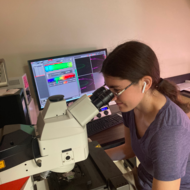
Megan Guoin
UCR Lab/PI:
Jamie Van Norman
University of Wisconsin Platteville
Understanding Cell Division Regulation Mechanisms in the Root
A primary goal in developmental biology is to understand the molecular mechanisms that regulate cell division in multicellular eukaryotes. In plants, division plane orientation during cell division helps determine the form and function of daughter cells. Directional signaling is thought to heavily influence the developmental processes of plant cells. As a lab, we focus on how polarized transmembrane receptor-like kinases (RLKs) modulate the timing and orientation of cell division in the root of the model organism Arabidopsis thaliana. I will specifically investigate if RRI3, a RLK related to INFLORESCENCE AND ROOT APICES KINASE (IRK), which represses cell division in the root, also functions to regulate root cell division. To link RRI3 to root cell division, I will examine promoter activity and protein localization using reporter genes and examine mutant combinations between related RLKs to assess functional redundancy. Like IRK, RRI3 is polarized to the outer polar domain of endodermal cells. If RRI3 is involved in cell division similar to IRK, I predict that the double mutant with irk will have a more extreme phenotype than either single mutant.
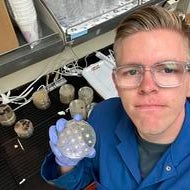
Jared Croyle
UCR Lab/PI:
Jason Stajich
Valley College
Hidden in the Sand: Microbial Diversity in Extreme Desert Environments
Microbes flourish in arid lands within a wide array of substrates including soils and biological soil crusts (biocrusts). Microbial communities that inhabit biocrusts provide essential ecosystem services such as nutrient circulation, water retention, carbon sequestration, preventing erosion, and acting as plant symbionts for desert flora. Due to their adaptation to dry environments, zygomycetous and basidiomycetous fungi are frequently found in biocrust. Samples of soil and biocrusts were gathered from Southwest US deserts including the Mojave Desert and the Colorado Desert. My goal is to isolate biotechnologically useful fungal species such as Mortierella sp. and Rhodotorula sp. from the soil and biocrust samples for genomic sequencing and use computational tools to further characterize their roles in desert environments. Using a culture independent approach, I will also process and analyze amplicon sequence data generated by the lab to further characterize the diversity of Mortierella sp. and Rhodotorula sp. within biocrusts. This research will aid our understanding of microbial community composition and function within extreme environments and may lead to the discovery of beneficial plant symbionts which may lead to promising applications in biotechnology, medicine, and ecosystem restoration.
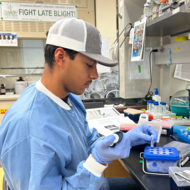
Jessie Garcia
UCR Lab/PI:
Howard Judelson
Merced College
Phytophthora infestans protein kinase functions revealed by CRISPR/Cas12a genome editing
Phytophthora infestans is a pernicious plant pathogen that has caused severe crop damage in many regions across the globe. The main crops that are affected by this fungus-like pathogen are potatoes and tomatoes, which, when infected, display mold-like growth on the inside and outside of the plant. Protein kinases are enzymes that are responsible for numerous functions in living organisms, which may potentially play a role in how this pathogen functions. Understanding the functions of these kinases may be a key to preventing this plant pathogen from causing any more harm. Cas12a is a gene editing tool that can provide insight on the functions of protein kinases in P. infestans. In this study, we will use the CRISPR/Cas12a tool to cut and mutate kinase genes of interest. We will then insert a gRNA-encoding cassette into a plasmid containing Cas12a and introduce the engineered plasmid into P. infestans via protoplast transformation. Following DNA treatment, the transformants will be screened for proof of editing. The type of editing we want to achieve is bi-allelic editing (editing both alleles of the gene of interest in this diploid species), although there is a chance mono-allelic editing may also occur. Thus far, mono-allelic editing has been confirmed, proving that editing can occur and paving the way for further tests to achieve bi-allelic editing.
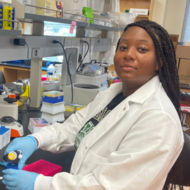
Talija Johnson
UCR Lab/PI:
Danelle Seymour
Mississippi Valley State University
Unveiling FERONIA's Versatility: A Cell Wall Sensor Orchestrating Immunity, and Salt-Response in Plants
Plant cell walls have several roles, encompassing structure, hydraulics, signaling, and immunity, underscoring its critical significance in plant vitality. A prominent candidate cell wall sensor, FERONIA, belonging to the Catharanthus roseus receptor-like kinase-1-like kinase (CrRLK1L) family, garners attention due to its extensive interactome and involvement in diverse biological pathways. Notably, FERONIA's pivotal role in growth and cell wall integrity post-salinity exposure. FERONIA mutants exhibit heightened cell rupture susceptibility attributed to compromised cell wall rigidity under salinity stress. Additionally, FERONIA's impact on Arabidopsis thaliana's resistance to Meloidogyne incognita, reveals its interaction with nematode-derived peptides that modulate parasitism-related immune responses. In our study, we employ CRISPR/Cas technology to substitute FERONIA's native promoter with a salt-inducible counterpart, ensuring predominant FERONIA activation and expression under saline conditions.
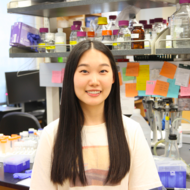
Tiffany Kim
UCR Lab/PI:
Meng Chen
Saddleback College
The Function of RCB in Chloroplast Development
When flowering plants are exposed to light, phytochromes, red/far-red light photoreceptors, perceive light signals and initiate a light-grown program called photomorphogenesis that turns plants green. During this process, activated phytochromes remove phytochrome interacting factors (PIFs), negative regulators of photomorphogenesis. In the nucleus, PIFs directly repress nucleus-encoded photosynthesis gene activation. Simultaneously, they indirectly repress the assembly of the plastid-encoded RNA-polymerase (PEP) complex in the plastid which activates plastid-encoded photosynthesis gene expression. Recently, our lab identified a central component of the phytochrome signaling pathway, the Regulator of Chloroplast Biogenesis (RCB). RCB is a dual-localized protein in the nucleus and plastid. rcb-10, a null mutant, is albino as it fails to degrade PIFs and develop chloroplasts under light. This suggests that RCB is required for the degradation of PIFs in the nucleus and is essential for chloroplast biogenesis. Because removing four PIFs is sufficient to restore greening in rcb-10, RCB appears to have a major role in the nucleus. However, its role in the plastid is unclear. In this project, we showed that svr4-1; an RCB mutant with a single amino acid change, has a yellow cotyledon. Surprisingly, svr4-1pifq cannot restore greening. This result suggests that RCB plays a role in regulating chloroplast biogenesis in the plastid. We will test how this occurs by testing the protein-to-protein interactions of RCB with the PEP complex components and see whether they are altered in SVR4-1 by using the Yeast-Two-Hybrid system and a protein-protein interaction prediction software to further study RCB’s role in the plastid.
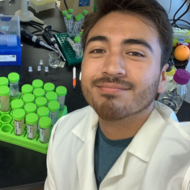
Eric Luera
UCR Lab/PI:
Julia Bailey-Serres
California Baptist University
Understanding the Relationship between Nutrient Availability and Exodermal Rice Suberization
As the effects of climate change continue to worsen, many crops are being subjected to more intense drought and nutrient stress. Under these conditions, some plants form a protective apoplastic barrier comprised of a long-chain fatty acid polymer called suberin between specific cell layers of their roots. In rice, the endodermis and the exodermis can be suberized. Apoplastic exodermal suberin provides a paper to diffusion and limits water loss during drought. The interaction between nutrient availability and suberin production has been studied in the model organism for vascular plants, Arabidopsis thaliana, which only deposits suberin in its outer endodermal cell wall. This project investigates the interaction between suberin production in the exodermis and nutrient uptake in rice. We subjected rice plants to varied levels of iron or nitrogen, both on plates in the lab and in pots in a greenhouse. We used fluorol yellow staining to analyze suberin produced in the exodermis of rice. Spatial evaluation with a flat-bed scanner determined that seedlings grown in an iron-deficient environment on plates significantly increase suberin production when compared to iron-sufficient roots. This result is opposite to that observed for endodermal suberin synthesis of Arabidopsis grown in low iron conditions(1). This could be for several possible reasons: iron deficiency could promote abscisic acid signaling in rice, a hormone that induces suberin in the endodermis of Arabidopsis and also the exodermis of rice. Alternatively, ethylene, the hormone triggered by iron deficiency in Arabidopsis that inhibits suberization, may induce exodermal suberization in rice. To test these two hypotheses, we will apply a precursor of ethylene to iron-sufficient seedlings and evaluate changes in suberin, and separately test if inhibition of abscisic acid signaling reduces suberization in iron-deficient environments. The impact these hormones have on suberization in these seedlings will further expand our understanding of the relationship between iron nutrition and suberization in rice, which could contribute to the development of climate-resistant crops.
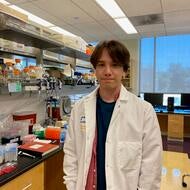
Matthew Part
UCR Lab/PI:
Katie Dehesh
Pierce College
Role of Chloroplasts in Mitochondrial Structure and Function
Mitochondrial dynamics are an important process in animals, plants, and yeasts for the maintenance of mitochondria functionality and cellular function as a whole. Part of mitochondrial dynamics is mitochondria fusion and fission which is a cyclical process by which mitochondria can change shape to maintain their functionality. Presently, the specific proteins in plants related to mitochondrial fusion have yet to be discovered. This is possibly due to the likelihood that defects in the mitochondria fusion and fission cycle are lethal because of the loss of mitochondria functionality. We have found that mitochondrial fusion can be induced under high-light stress, resulting in elongated mitochondria shapes. Since high light induces responses in chloroplasts which can then affect the mitochondria, there is likely some form of communication between the mitochondria and chloroplasts inducing mitochondria fusion or inhibiting fission. Furthermore, under high-light conditions, mitochondrial fumarate and malate levels have been observed to increase 2-fold and 1.5-fold respectively. Whether the increased intermediate levels are a cause or result of mitochondrial elongation is currently being explored. To understand this relationship, A. thaliana plants are treated with fumarate and malate during growth, and the transcript levels of genes encoding for the TCA cycle enzymes that produce and convert fumarate and malate are analyzed via Real-time qRT-PCR
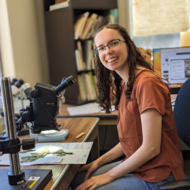
Anna Rothfusz
UCR Lab/PI:
Amy Litt
St Olaf College
Species Differentiation and Correlations between Genetic and Environmental Variation in Manzanitas
The genus Arctostaphylos is composed of woody shrubs with twisting branches, red bark, and bright green leaves, commonly known as Manzanitas. There are more than 60 species of Manzanitas located in California that have adapted to the chaparral biome characterized by hot and dry summers and mild winters, as well as frequent fires. Manzanitas are notable for their diversity and have several widespread species, but around 30 species are considered to be threatened or endangered. Additional work is needed to further differentiate between species and to understand genetic variation that may be correlated with environmental variation. Morphological and statistical analyses, geographic associations, and Genome-Wide Association Studies will be used to analyze environmental, genomic, and morphological data that may be correlated with significant traits. Initial analysis of stomatal distributions shows that Manzanita populations located at higher elevations are more likely to have leaves with stomata on both sides rather than the more common lower side only (p-value = 3.615e-05) and stomatal density on the abaxial side of leaves decreases as the CO2 concentration (from the January before sample collection) increases (p-value = 0.03291). Another finding was that the mean abaxial stomatal length of diploid Manzanitas was generally smaller than that of tetraploid Manzanitas, supporting the hypothesis that a smaller genome size allows for a smaller minimum cell size (p-value = 0.0123). More traits will be analyzed throughout the summer to determine if there are correlations between genetic variation and environmental variation as an important part of understanding species differentiation.
REU Projects 2022

Ebenezer Abban
UCR Lab/PI:
Dawn Nagel
Virginia State University
Circadian Clocks in Plants
The circadian clock is an intrinsic timekeeping mechanism that controls the physiological activities of many organisms including plants and animals over 24-hour cycle. The clock help organisms align their metabolism with environmental changes, which allows them to perform biological processes at relevant times of the day. In Arabidopsis and other crops such as soybean and barley, transcriptome experiments show that up to 50% of genes responsive to abiotic stress experience circadian rhythms. The effects of the biological clock on the plant transcriptome includes genes that control a variety of plant responses including defense against pathogen, leaf positioning, stomata opening and many others. Here, this research studies how the clock controls the response to pathogen exposure in Vitis vinifera (grapes). Specifically, grape plants were exposed to Daktulosphaira vitifoliae, to help understand how clock genes are expressed during pathogen exposure. RNA expression of three main clock genes (LUX, ELF4 and RVE 6) were measured at two different times of the day using RT-qPCR in samples from two grape varieties (Vitis vinifera and Vitis riparia) exposed to crawlers and eggs of D. vitifoliae. Clock genes responsible for plant defenses and growth (ELF4, LUX and RVE 6) are projected to be over-expressed in gall-infested grape plants during midday to evening, when pathogen activities are predicted to be high. Insight into this work will help in understanding the role of the clock in regulating plants' response to biotic stress.
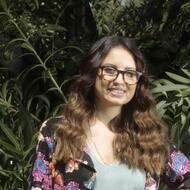
Carolina Buhler
UCR Lab/PI:
Julia Bailey-Serres
Norco College
Cellular Response to Hypoxia
Plants and animals require oxygen for mitochondrial respiration and energy production. In plants, a decline in oxygen availability (hypoxia), such as during submergence, triggers cellular responses. Within the cell, membraneless organelles, called biomolecular condensates, composed of biomolecules (i.e., nucleic acids, proteins), regulate molecular processes. Previous studies show that in response to stress such as hypoxia, RNA HELICASE 6 (RH6), forms biomolecular condensates named processing bodies (Chantarachot et al., 2020), where mRNAs are modified and degraded. Another protein that connects to hypoxia response is OLIGOURIDYLATE BINDING PROTEIN 1 (UBP1C), which forms biomolecular condensates called stress granules associated with the “storage” of mRNAs. However, observation methods have been lacking in plant cell biology to precisely monitor real-time cellular responses during hypoxia and reoxygenation. Using a high-end microscope and protoplast from transgenic lines expressing p35S-UBP1C-GFP (ubp1c-1) and pRH6-RH6-GFP (rh6-1) in the model plant Arabidopsis thaliana, we monitored the formation of biomolecular condensates in comparison to our control CCA1-GFP (cca1-1). We did this within an oxygen-level controlled chamber by time-lapse images of 3 different conditions (oxygenation, hypoxia, reoxygenation). For this process, we constructed a microscope-compatible chamber where living cells can be observed in real-time at different atmospheric and dissolved oxygen levels. Consistent with past studies, we found that both RH6-GFP and UBP1C-GFP do form biomolecular condensates. This project establishes the groundwork to understand further the role of biomolecular condensates within plant responses and adaptation to acute stresses.

Kiran Daulla
UCR Lab/PI:
Robert Jinkerson
The University of North Texas
Adapting Agricultural Systems during Climate Change
With the repercussions of global climate change only beginning to be felt and the global population projected to grow to 10 billion by 2070, we must urgently adapt our agricultural production systems to meet the challenges of the future. Greater incorporation of urban controlled environment agriculture (CEA) can offer more sustainable future food production and increased crop yields. However, currently only leafy greens are compact and fast-cycling enough to cost-competitively be grown in such a way as a result of high capital and operating costs for urban CEA. The incorporation of additional staple crops, such as tomatoes (Solanum lycopersicum), into urban CEA will require them to be re-engineered for compactness and FAST CYCLING. Here we show the construction of CRISPR/Cas9 multiplexing plasmids for direct plant transformation of S. lycopersicum. CRISPR/Cas9 multiplexed gene editing has previously been shown to result in transformed lines exhibiting different combinations of gene edits that produced a phenotypic spectrum of traits. We are taking this approach in tomato plants by targeting mutations in genes involved in tomato architecture and development (SELF PRUNING, SELF PRUNING 5G, ERECTA, SPACE, and DWARF). We constructed the multiplexing plasmids using golden gate cloning and then transformed the constructs into Escherichia coli and then Agrobacterium tumifacens. The future steps of this work will be link genotype and phenotype in transformed tomato plant lines to determine which produce phenotypes ideal for urban CEA. We hope that these plants will help improve the feasibility of urban CEA and ultimately help feed the future.

Marco de la Torre
UCR Lab/PI:
Katayoon Dehesh
University of California, Riverside
To sustain growth in response to unfavorable conditions, plants must constantly respond to developmental and environmental cues.
For example, plants must respond to the aging process (senescence) that can be accelerated by dark treatment. Understanding the underlying molecular mechanism of such a response will fill in the existing knowledge gap. The Dehesh lab has identified a cis-regulatory element found in the promoters of 30% of stress-response genes. This element was coined the Rapid Stress Response Element (RSRE). Transgenic plants were generated to express a tetramer of 4xRSRE fused to luciferase (LUC) as a reporter to examine plant stress responses. These plants were used in a mutagenesis screen to identify the regulatory components of RSRE. One such mutant with constitutive LUC activity proved to be the result of a single amino acid change from Glu to Lys in a conserved sequence of a member of the Conserved Oligomeric Golgi (COG) complex, COG7. cog7 mutant was shown to grow indistinguishable from that of the wild-type (WT) plants under standard conditions. However, under dark conditions, cog7 displays accelerated senescence. A second screening using the FOX-hunting system was performed to identify lines reverted in their accelerated senescence phenotype. The screening identified that overexpression of two genes, COG2 and COG5, reduced LUC activity, but only COG5 reverted the accelerated senescence phenotype. Additional analysis revealed dark-induced ubiquitination of proteins in the cog7 mutant background and reversion in COG5 overexpressing lines. Collectively these results indicate that overexpression of COG5 in cog7 background could recover the accelerated stress response as well as the associated ubiquitination, whereas overexpression of COG2 in cog7 background did not recover these phenotypes.

Makayla Drew
UCR Lab/PI:
Amy Litt
Virginia State University
N/A

Annika Findlay
UCR Lab/PI:
Howard Judelson
Knox College
The pathogenic oomycete Phytophthora infestans causes billions of dollars of losses annually in potato and tomato production worldwide.
Due to a lack of suitable resistant cultivars, disease management relies largely on chemical control. Gene editing technologies, such as CRISPR-Cas12a, can help identify potential targets for infection inhibitors, for example by testing the function of genes involved in development and pathogenicity. A temperature-tolerant variant of LbCas12a (ttLbCas12a) was found in plants to have an increased rate of editing at 22℃ (Schindele & Puchta 2020), the optimal growth temperature of P. infestans. Initial studies in one gene indicate that ttLbCas12a, as opposed to LbCas12a, has an increased editing rate in P. infestans (p≤0.05). More genes will be tested to further validate this result. ttLbCas12a was then used to edit three genes of the Tubby-like protein (TULP) family. TULPs were chosen due to their important functions across kingdoms as transcription factors, and their strong upregulation in P. infestans spore stages. Thus far, one Tubby-like gene has been edited and knockout transformants will be analyzed for phenotypes. Characterizing TULPs will provide more insight into regulatory pathways in P. infestans, and may allow for future development of chemical or plant-based strategies to improve protection against the pathogen.

Kyra Harvey
UCR Lab/PI:
Loralee Larios
Virginia State University
Climate change is a prominent global issue s climate change persists, it is imperative that we understand how this will affect plant species in their environments.
I explored the effects of climate change on three California plant species within the Riversidean alluvial fan sage scrub community (RAFSS). The three focal species are the abundant turkey Mullein(Croton setigerus), the sensitive Parry’s spineflower(Chorizanthe parryi), and the endangered slender-horned spineflower(Dodecahema leptoceras). In California, climate change is predicted to cause an increase in drought, but the RAFFS community has already adapted to dry environmental conditions so species may be less vulnerable to these changing conditions. Because of their drought tolerance, I hypothesized that all species would have an increase in available habitat suitability, with the abundant species retaining the highest proportion of suitable habitat under climate change.To conduct this research, I used species occurrences and current climatic and soil data to build species distribution models (SDMs) for each species. I then used those models to identify suitable habitat in geographic space under current climatic conditions (years 1980-2010) and future climate change under a warm, dry scenario (years 2040-2069). all species experienced an increase in habitat suitability. owever, urkey mullein experienced a decrease in available habitat suitability in the southwestern region of California, an area where the RAFSS community occurssuggesting a habitat shift meaning the currently suitable areas are not the same suitable areas in the future This approach shows that abundant species can be more vulnerable to habitat shift and that in the future, conservation efforts can focus on dispersal dynamics to ensure species have the mobility to move into more suitable habitats.

Matthew Gano
UCR Lab/PI:
Loralee Larios
Southern Adventist University
The symbiosis between plants and arbuscular mycorrhizal fungi (AMF) is emerging as key dynamic to successful plant establishment
Symbiosis between plants and AMF occurs in 70 to 90% of land plants with plants receiving water, nitrogen (N), and phosphorus (P) from the AMF in exchange for photosynthates. Naturally there is a fair amount of variation in this symbiosis with certain plants producing root resource acquisition structures including root hairs and roots with high specific root length (SRL) to extract water, N, and P from the soil. Because root resource acquisition structures and AMF provide plants with the same set of resources, we hypothesize that in response to AMF colonization plants will produce less root resource acquisition structures reducing the prevalence of high SRL and high root hair densities in their root systems and leading to an increase in biomass. To assess the variability in root resource acquisition traits in response to AMF colonization, we grew 14 species of native California grassland plants in a greenhouse in either field soil or an AMF inoculant with sterile controls for each soil type. After several weeks plants were harvested, and SRL, root hair density, root and shoot biomass, and percent AMF colonization were assayed. With the results from these assays, we will be able to determine how plants change their root structure in response to different levels of AMF colonization and inform land mangers whether the restoration of the 12 species examined will be aided by restoring AMF symbiosis via AMF inoculation.
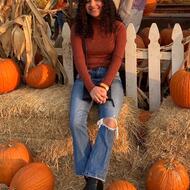
Lupe Hernandez
UCR Lab/PI:
Loralee Larios
California State University Sacramento
Natural products produced by plants, animals, and microorganisms have been shown to have beneficial health effects when combating illnesses in humans
Plants specifically continue to be used in traditional medicine practices by different cultures. In the pharmaceutical industry, plant bioactive small molecules (PBSMs) have been an important resource for drug discovery due to their diverse biological activities and drug-like properties (Sorokina and Steinbeck 2020). Recently, various PBSM databases have become available, such as the Collective Molecular Activities of Useful Plants (CMAUP), COlleCtion of Open Natural prodUcTs (COCONUT), and the Food Database (FooDB). These databases provide information about the structure, target sites, biological pathways and organismal sources of over hundred thousand PBSMs (Zeng et al. 2019). Using computational analysis, we aim to identify natural plant bioactive molecule alternatives to FDA-approved drugs based on their molecular structure, bioactivity, and target protein annotations. A combination of SQL queries, structural similarity searches, and queries of target protein and pathway annotations of PBSMs will be conducted using R and the Bioconductor packages ChemmineR and drugTargetInteractions (Backman et al. 2011; Cao et al. 2008; Huber et al. 2015). In addition, drug perturbation gene expression signature databases will be searched to identify putative mode of actions for the most interesting PBSMs (Duan et al. 2020). After identifying natural plant bioactive molecule alternatives, novel translational uses can be proposed such as plant-based therapies and food supplements. Further research will need to be conducted to ensure that the identified PBSM alternatives pass safety and nutritional value requirements.

Brandi Lofton
UCR Lab/PI:
Paul Nabity
Kennesaw State University
Exploring the Requirements for Grape phylloxera Infection in Native and Non-native Grape Species
Daktulosphaira vitifoliae, also known as Grape phylloxera, are aphid-like insects that can induce gall formation on its host plant. The formation of galls from G. phylloxera is largely controlled by the genes of this parasite, therefore it is considered an extended phenotype of the G. phylloxera. However, like many herbivores, Grape phylloxera must overcome plant defenses, an active plant immune system, and tissues and fluids with suboptimal nutrients. Fortunately, in the case of G. phylloxera on several species of grapevine plants they have successfully overcome all of these obstacles. Provided that G. phylloxera have successfully infested their host plant, the insect has caused three major changes to happen to the plant’s physiology, such as: the induction of plant stress signals, the introduction of an extended phenotype, and obtaining nutrients without negatively affecting the host plant. In this project the main objective is to study whether it is nutrient availability or hormone defense that affects the performance of Grape Phylloxera on native and non-native plants. Thus far, I expect reduced defenses and enhanced nutrient mobilization in co-evolved interactions and more manipulation at the cost of the plant in naive species interactions. In assessing nutrient mobilization relative to defense status and performance, it will correlate what nutrients may determine insect success if defenses are similar.
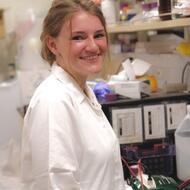
Sydney McCaulsin
UCR Lab/PI:
Meng Chen
Duquesne University
Flowering plants, such as the angiosperm Arabidopsis thaliana, require a light signal to initiate chloroplast biogenesis, the process which develops the photosystem of the plant allowing it to convert sunlight to energy
This process requires the activation of two sets of photosynthesis-associated genes, one encoded in the nucleus and the other in the plastids. Photoreceptors localized in the nucleus perceive the light signal and activate the photosynthesis-associated genes in the nucleus. At the same time, a signal is sent through the nucleus to the plastid signaling pathway, and the genes encoded in the plastid are also activated. However, the mechanism by which this signaling pathway works remains poorly understood. Our lab is working with Regulator of Chloroplast Biogenesis, (RCB); a dual localized protein, located in both the nucleus and plastids, recently identified as a central component of this signaling mechanism. An rcb null mutant fails to generate the nucleus-to-plastid signal, resulting in an albino phenotype. To further elucidate the function of RCB in nucleus-to-plastid signaling, we are performing a genetic screen for rcb suppressor mutants that restore the ability to undergo chloroplast biogenesis. The suppressor mutants are expected to define novel genes involved in chloroplast biogenesis in plants and allow us to gain a deeper understanding of the molecular events contributing to chloroplast biogenesis.

Lala Vargas
UCR Lab/PI:
Jaimie Van Norman
California Polytechnic University Pomona
Cell Division and Differentiation are essential for overall organ development and tissue patterning within plants
Cell division and differentiation are essential for overall organ development and tissue patterning within plants. These processes are oriented, though the mechanisms in which this orientation occurs remains unknown. In the model organism Arabidopsis thaliana, oriented cell divisions can be further investigated within the root ground tissue. In root cell types, polar localization is observed for thePLKs, POLAR LOCALIZED KINASEs, which are transmembrane receptor kinases . A specific PLK named INFLORESCENCE AND ROOT APICES KINASE (IRK) is polarized within the endodermis and functions to restrict stele area size and inhibiting longitudinal anticlinal divisions (LADs). A closely related protein is PXY/TDR CORRELATED 2 (PXC2), which polarized similar to IRK in the root and functions to repress stele area. To understand the function of these proteins and determine if increased stele area is a secondary or primary defect, we explored IRK and PXC2 function when misexpressed within the stele, using the SHORT ROOT promoter. I found that the stele area phenotype in irk pxc2 double mutant roots was rescued when IRK or PXC2 were expressed solely in the stele. Further, total root length and straightness phenotypes in the double mutant were rescued when IRK or PXC2 were expressed in the stele. Stele-specific expression of IRK and PXC2 is also expected to rescue the increased LAD phenotype in the double mutant. Overall, stele-specific expression of IRK and PXC2 rescues double mutants back to the wildtype in stele area, root length and straightness, and possibly endodermal cell divisions with IRK rescuing these phenotypes to a greater degree than PXC2. This suggests that enlargement of stele area in irk, pxc2, and the double mutant is a (primary or secondary) defect as related to cell proliferation in the endodermal layer.

Wayne Robinson
UCR Lab/PI:
Danelle Seymour
Florida Atlantic University
Genome-wide association mapping of field performance traits in a diverse collection of citrus germplasm
The citrus industry in California is valued at more than $1 billion annually and has potential to grow its percentage of the US market share. The growth of the California industry is dependent on developing desirable cultivars that aid in taste, appearance, and tree vigor. However, the breeding cycle of citrus ranges from 4-10 years, which is a major obstacle for crop improvement. To increase the efficiency of the UCR breeding program we have begun to use high-throughput phenotyping methods to rapidly measure many traits. We conduct aerial imaging of trees using drones to capture phenotypic traits such as size, shape, and overall health. Once we have measured these traits, we can investigate their genetic basis using genotype data for the entire UCR Citrus Variety Collection (CVC). Using genome-wide association, we can identify single nucleotide polymorphisms (SNPs) that are associated with our desired phenotype. In time, we will perform whole-genome sequencing for the entire CVC to enhance our use of marker assisted breeding. This will enable us to more accurately and confidently identify desirable genetic variants to produce the best tasting, quality, and visually appealing fruit.

Michelle Hoo
UCR Lab/PI:
Dr. Daniel Koenig
San Diego State University
Genetic Associations with Climatic Variables in Barley
Global climate change poses one of the greatest threats to agricultural and environmental sustainability. Understanding how plants adapt at the genetic level in response to environmental variation or change is essential in preserving our agricultural systems through the predicted and drastic effects of climate change. Barley (Hordeum vulgare) is the fourth most highly grown grain in the world and is remarkable for its ability to grow across hugely variable environments such as in regions of high altitude and extreme temperature. Therefore, its versatility and tolerance makes Barley an ideal system to study associations between genotypes and climatic variation to predict which parts of the genome are expected to adapt in response to global warming. In particular, we will analyze single nucleotide variants in the coding sequences of heat shock proteins of Barley varieties grown in harsh temperatures and compare them to those of Barley grown in more moderate temperatures. With this, we hope to find climatic ranges in which alternate heat shock protein variants are most predominant and fit a linear model to further express the association between climate and genotype. Our study will provide insight to the genetic differences most optimal for various environments and elucidate how organisms will adapt to Earth’s rapid climate change.

Josiah Garza
The University of Texas, Austin
UCR Lab/PI: Thomas Girke
Novel Applications of Plant Derived Small Molecules
Detailed information about plant bioactive small molecules (PBSMs) has become available in public small molecule databases in recent years. This includes molecular structure and target protein information of PBSMs in CMAUP (Zeng et al., 2019), COlleCtion of Open NatUral producTs (Sorokina and Steinbeck, 2020), and the natural compound collection division from ChEMBL (Gaulton et al., 2012). These resources provide novel opportunities for identifying natural product alternatives for FDA-approved synthetic drugs. Current analytical resources, such as the R packages ChemmineR (Huber et al., 2015 & Backman et al., 2011) and Drug-Target Interactions (Horan et al., 2021), allow for the FDA approved drugs within these databases to be found while also generating compound similarity analyses between novel PBSMs and FDA approved drugs. SQL queries of the results for these similarity searches will allow predictions of physico-chemical properties and bioactivities to be made and help determine how many FDA approved drugs possess natural product alternatives (Cao et al., 2008). Growth in the use of PBSMs as natural products is based on such phytochemical analysis being conducted, and such foundational research in plant-based medication is being conducted to help determine which of the PBSMs studied are safe for human consumption.
References cited:
- Backman TWH, Cao Y, Girke T (2011) ChemMine tools: an online service for analyzing and clustering small molecules. Nucleic Acids Res 39: W486–91
- Cao Y, Charisi A, Cheng L-C, Jiang T, Girke T (2008) ChemmineR: a compound mining framework for R. Bioinformatics 24: 1733–1734
- Gaulton A, Bellis LJ, Bento AP, Chambers J, Davies M, Hersey A, Light Y, McGlinchey S, Michalovich D, Al-Lazikani B, et al (2012) ChEMBL: a large-scale bioactivity database for drug discovery. Nucleic Acids Res 40: D1100–7
- Huber W, Carey VJ, Gentleman R, Anders S, Carlson M, Carvalho BS, Bravo HC, Davis S, Gatto L, Girke T, et al (2015) Orchestrating high-throughput genomic analysis with Bioconductor. Nat Methods 12: 115–121
- Sorokina M, Steinbeck C (2020) Review on natural products databases: where to find data in 2020. J Cheminform 12: 20
- Zeng X, Zhang P, Wang Y, Qin C, Chen S, He W, Tao L, Tan Y, Gao D, Wang B, et al (2019) CMAUP: a database of collective molecular activities of useful plants. Nucleic Acids Res 47: D1118–D1127

Tykera Moore
Home institution: Fort Valley State University
UCR Lab/PI: Jason Stajich
Viral Genomics and Discovery from Metagenomics
Viruses are likely the most abundant organisms on the planet, however limited work has studied viruses from environmental sampling, and they represent a largely unexplored genetic diversity, despite likely having an important role in the biology of their hosts. Previously, Dr Stajich’s lab has sequenced DNA from environmental samples to investigate the microorganisms that make up biocrusts. In these diverse datasets there are unanalyzed viral sequences. Web based tools will be utilized such as Cyverse and iVirus protocols to run bioinformatic analysis of the different samples. My goal is to analyze samples from two dominant crust types in drylands, light algal crusts (LAC) and cyano lichen crusts (CLC), which exhibit intrinsic differences in stability, community compositions, and successional age. Processing of biocrust samples through iVirus procedures will generate results to be documented in a digital lab notebook inputting raw outputs and then a summary table that has the information for only the viral contigs from VContact2. My hypothesis to be tested is that viruses found from metagenome data collected from Sheep-Hole Biocrust datasets will reflect distinct viruses unique to crust type and be possibly novel among all described viruses. These dryland associated viruses may hold additional diversity.
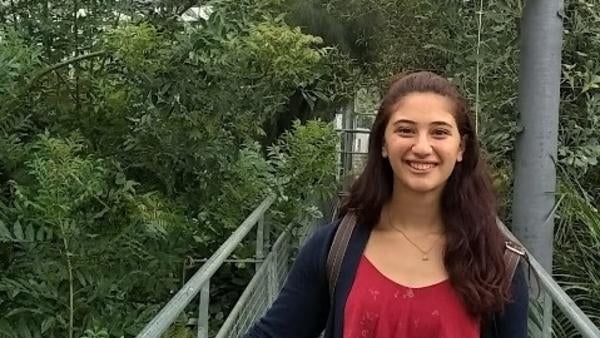
Jenny Kafas
The College of New Jersey
UCR Lab/PI: Ian Wheeldon
Sequence, structural and evolutionary analysis of polyendogalacturonase (PG) in Kluyveromyces. marxianus
More than 45 million tons of citrus waste is discarded annually by juicing operations. Pectin, which accounts for approximately 15-25% of the dry weight of citrus waste, is a potential economic carbon source for fermentation and is also used as raw material to produce oligogalacturonides (OG). An ideal method to break down this pectin is enzyme hydrolysis as energy costs are minimal and the process creates no pollution. Polyendogalacturonase (PG) expressed by non-conventional yeast, K. marxianus is a good candidate for pectin degradation. By comparing the structure of PG in K. marxianus to PG found in other microbes that have data on the activity of PG and the protein sequence, we are able to identify potential strengths and weaknesses of the structure of PG in K. marxianus. Using this information we aim to engineer PG in K. marxianus to create an optimal PG protein to be used on a large scale to break down pectin in citrus waste accumulated by juicing companies.

Ashley Brickl
Carthage College
UCR Lab/PI: Arthur Jia
IIIandMe: A High Efficient Algorithm for Haplotype Determination Using Genomic Data of Three Haploid Reproductive Cells
Chromosome-length haplotypes, which represent the entire set of chromosomal genetic variants inherited from parents, provide higher resolution of DNA for the discovery of disease-causing genes and loci when compared to the commonly used single nucleotide polymorphisms (SNPs) data. However, it is challenging to infer such chromosome-scale haplotypes for individuals based on diploid genomic data. Our lab has developed a novel and highly efficient algorithm, named Hapi, to infer chromosomal-length haplotypes based on haploid genomic data of several single gametes, with presence of missing or erroneous genotyping data. Given high-quality genomic data for gametes, the efficiency for inferring chromosome-length haplotypes may be further improved by analyzing only three gametes, pushing the boundary to its possible limit. Our lab is developing a new phasing algorithm, named IIIandMe, to fulfill this research goal. This summer IIIandMe will be demonstrated on simulated datasets as well as genomic data from citrus, maize, and humans. The completion of this project will further promote the use of chromosome-scale haplotype data in various genetics research.
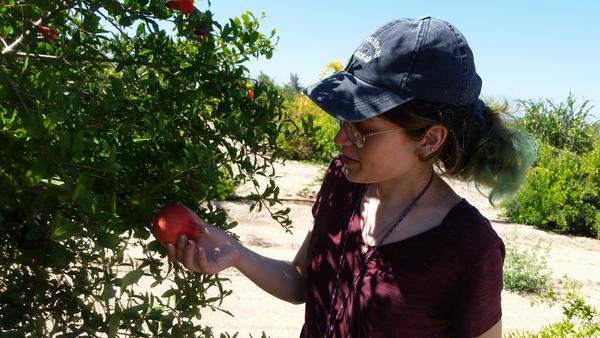
Christina Meyer
(Jia Lab)
Heat stress effects on the metabolome of California-grown ‘Wonderful’ pomegranate juice
Pomegranate (Punica granatum L.) is an ancient fruit tree crop that has cultural significance throughout much of Eurasia. Pomegranates have also been historically believed to have putative medicinal and pharmacological properties; in modern times, there has been a large effort to elucidate the biochemistry and metabolism of its fruit. Multiple studies indicate that pomegranates have many unique metabolic properties, including high antioxidant activity, which is implicated in preventing numerous diseases in humans, and significant amounts of poly-caryopsis, making pomegranate a candidate model system for ovule development in fruit. Although baseline studies for pomegranates exist, thorough studies of pomegranate metabolics are limited. Furthermore, pomegranates are susceptible to heat stress at temperatures above 35 C. Extreme heat events can lead to large losses in pomegranate crop yields, and these events are projected to become more common and unpredictable with changing climate patterns. It is also unknown how these extreme heat events significantly impact juice quality and metabolism of surviving pomegranate fruits.
The Jia Lab’s current metabolomics study both further refines the metabolome of California-grown Wonderful pomegranate juice, and compares polar metabolites in sunburnt and unburnt pomegranate juices to better understand the effects of extreme heat stress on the pomegranate juice metabolome. In this metabolomic dataset, 65 unique polar metabolites were detected, 10 of which were significantly different between unburnt and burnt juice samples. Individual metabolite and full pathway analyses are currently being conducted. This study will help characterize California-grown pomegranate cultivars, as well as the damage pomegranates face with extreme heat stress.

Esperanza Garcia
(Bailey-Serres Lab)
Mysteries of messages: discovery of mechanisms beyond synthesis and translation
Esperanza Garcia, Maureen Hummel and Julia Bailey-Serres
Gene regulation in eukaryotes occurs at multiple steps, from the initiation of gene transcription to the production of a functional protein. Once transcription begins, the nascent transcript undergoes co-transcriptional addition of a 5’ cap, splicing of introns, and addition of a 3’ poly(A) tail, prior to export from the nucleus to the cytoplasm where mRNAs are translated by ribosomes into polypeptides. These highly energy consuming cellular processes are vital for the growth, development, and stress survival of plants. In Arabidopsis thaliana, translation of mRNA is highly regulated in response to stresses such as low oxygen, to conserve energy. While mRNAs important for stress survival are preferentially translated, many cytoplasmic mRNAs become translationally inactive and are sequestered in stress granules. An RNA-binding protein (RBP) assists in sequestration of mRNAs, which is reversible upon return to normal conditions. This RBP is localized in the cytoplasm as well as in the nucleus. The goal of this project is to explore the nuclear function of this RBP under low oxygen stress and extended darkness, both energy limiting conditions. First, mRNA-seq, RBP-associated (obtained by RNA-binding protein immunopurification (RIP)) will be performed to identify putative targets of this RBP under extended darkness and control conditions, using existing datasets. Second, by combining the Isolation of Nuclei Tagged in specific Cell Types (INTACT) with RIP, we will compare mRNAs associated with this RBP in the nucleus. We will test the hypothesis that this RBP is important in controlling splicing during low energy stress. This project will shed light on the role of an RBP in post-transcriptional regulation within the nucleus and cytoplasm in response to low energy stress.
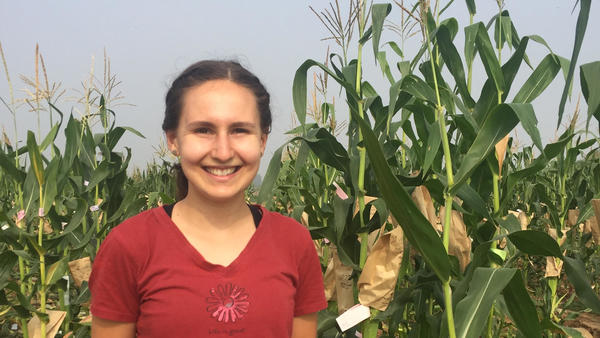
Sarah Gayer
(Rasmussen Lab)
Division plane orientation in plant cells
Cell division is crucial to proper development, and plants have mitotic structures delineating the division site to ensure this process is completed correctly. The preprophase band (PPB) is a microtubule and actin structure that forms during G2 and marks the future division site. Although it is disassembled before metaphase, the cell “remembers” the location of the division site by using proteins that remain at the former PPB throughout mitosis, such as TANGLED1 (TAN1) in maize ( Zea mays ). TAN1 is a microtubule-binding protein that assists in correct phragmoplast placement, a cytokinetic microtubule structure that indicates where the new cell wall will be formed.
This project aims to determine TAN1 behavior in cells that cannot form PPBs by observing its localization patterns in discordia1(dcd1) and alternative discordia1 (add1) double mutants. DCD1 and ADD1 encode B’’ regulatory subunits of the protein phosphatase type 2A, that direct the phosphatase to specific locations in the cell, and without which PPBs cannot form. In Arabidopsis , the DCD1 and ADD1 homolog, FASS , encodes a protein required for PPB establishment. FASS is also necessary for TAN recruitment to the division site during metaphase and telophase. Without these genes, Arabidopsis TAN did not accumulate at the division site; however, their role in maize TAN1 localization is less clear. In order to determine if TAN1 still localizes to the division site in cells without PPBs, we imaged wild type and double mutant embryos using spinning disk confocal microscopy. Further understanding how TAN1 is recruited to the division site provides more information regarding division plane orientation, an essential part of plant development.

Samantha Velasco
(Li Lab)
Investigating Abscisic Acid Catabolism through Yeast Two-Hybrid Screening of Plant cDNA Libraries
Abscisic acid (ABA) is a plant hormone involved in abiotic stress signaling, and initiates responses related to seed dormancy, germination, root architecture, leaf senescence, and stomatal closure. The rise of global temperatures due to climate change makes plants more susceptible to heat and drought stress, creating a need for novel methods of regulating ABA levels within plants. Controlling ABA catabolism may provide a way to control ABA-mediated responses in plants. The main objective of this study is to design a yeast based system to identify novel genes involved in ABA synthesis and catabolism from plant cDNA libraries. We will develop a Saccharomyces cerevisiae strain containing a yeast two-hybrid based ABA sensor and the genes responsible for ABA biosynthesis from Botrytis cinerea. Expression cassettes of the necessary genes will be constructed and assembled into a linear construct. The construct will be integrated into the genome of a MaV99-based strain containing the ABA sensor. After assembly we will use metabolic engineering to optimize ABA synthesis for best performance with the sensor. As a proof of concept, the system will be used to screen an Arabidopsis thaliana cDNA library and identify the known ABA-catabolizing genes CYP707As. We will use our platform to screen various plant cDNA libraries to facilitate the discovery of novel ABA catabolic enzymes. Our platform will serve as a tool to complement ongoing efforts to elucidate plant secondary metabolism.

Sarah Wilson
(Litt Lab)
Arctostaphylos glauca genome assembly and annotation
The genus Arctostaphylos (Ericaceae), commonly referred to as Manzanita are shrubs and small trees, with a high endemic diversity in California. Though they are ecologically significant and have received much attention from California botanists, the boundaries among Manzanita species and subspecies remain unclear. As part of a larger investigation using next-generation sequencing data to evaluate species diversity of Manzanitas, we are assembling a Manzanita genome sequence, specifically Arctostaphylos glauca. We used Oxford nanopore sequencing and short-read Illumina sequence data to produce an assembly of high contiguity with a low sequencing error rate. This is the first genome assembly for the genus Arctostaphylos and subfamily Arbutoideae. Here we perform a number of analyses on the genome assembly including masking repetitive elements and annotating likely gene function. We also compare our constructed genome assembly of A. glauca to other chromosome-level assemblies within the family Ericaceae and order Ericales. Specifically, we analyze synteny and estimate times of divergence between the subfamily Arbutoideae and other members of the Ericaceae and Ericales. Analyses of this assembly may shed light on genetic and evolutionary forces in the evolution of the genus and subfamily. This genome assembly helps us to improve detection of genetic differences and relationships among Manzanita species and enable future research.
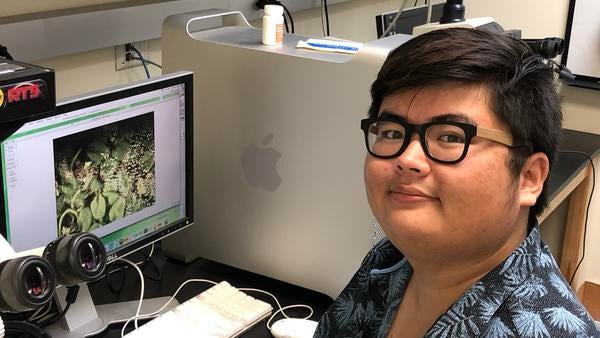
Kevin Tran
(Springer Lab)
Functional Characterization of Arabidopsis LOB-DOMAIN 42
In many plants, leaves are divided into two distinct regions. The adaxial side faces the meristem and becomes the “upper” side of the leaf; whereas the abaxial side faces away from the meristem and becomes the “lower” side of the leaf. In previous research, it has been shown that the ASYMMETRIC LEAVES2 (AS2) transcription factor contributes to leaf polarity by conferring adaxial cell fate in Arabidopsis thaliana. Overexpression of AS2 in the abaxial region changes cell fate, producing an entirely adaxialized leaf. However, in an as2 mutant, the leaf maintains polarity, suggesting that there may be another gene that contributes to the adaxial cell fate. LOB DOMAIN PROTEIN 42 (LBD42) has been identified as a candidate gene that may be redundant to AS2. The goal of this project is to characterize the expression pattern of LBD42 in Arabidopsis thaliana, and to determine the phenotype in lbd42 mutants and lbd42 as2 double mutants. In order to characterize the expression pattern of LBD42, transgenic plants containing a pLBD42:GUS construct will be stained for GUS activity at various developmental time points to determine the expression of LBD42. In order to determine the consequence of loss of LBD42 function, we will generate lbd42 mutants using CRISPR/Cas9 gene editing. I will screen for LBD42 mutations in wild-type and as2 backgrounds and examine the resulting plants for phenotypes. If the hypothesis that LBD42 has a function in adaxial-abaxial polarity if correct, we should see abaxialization of leaves in lbd42 single mutants or lbd42 as2 double mutant.
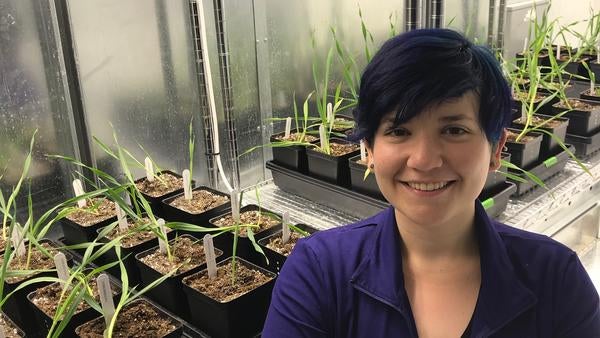
Kirsten Trimble
(Koenig Lab)
The Evolution of Plant Genome Content
Kirsten Trimble, Christopher Fiscus and Daniel Koenig
The information required for the development and function of an organism is encoded in its genome. Whole genome duplications, bursts of transposon activity, or rearrangements between chromosomes frequently drive substantial changes in genome content between species. Most molecular evolutionary studies compare species using single copy orthologous gene sequences. These types of sequences are the minority of eukaryotic genomes, leaving the process of evolution throughout much of the genome a complete mystery. To remedy this situation, we will model repeat evolution in the context of phylogeny. We will compare the abundance of K-mers, or short sequences of length K, in high-throughput sequencing reads generated from a wide diversity of species in the mustard and grass families. We anticipate that differences in K-mer profiles between species will be proportional to phylogenetic distance and therefore reflect the evolution of plant genome content. However, differences in life history, such as mating system shifts, are likely to distort this signal due to their effect on genome structure. Our study will provide insight into genome content evolution in two major plant families at a global level.
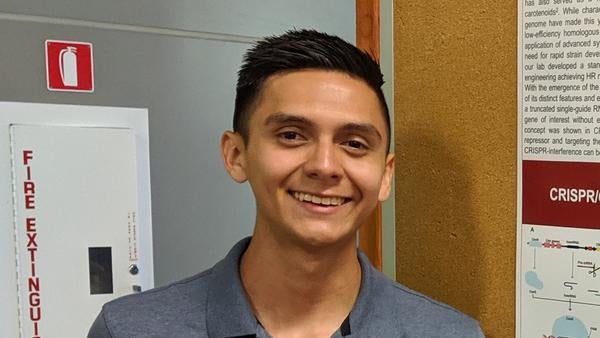
Alejandro Garcia
(Ian Wheeldon Lab)
The nonconventional yeast, Yarrowia Lipolytica has garnered much interest in the field of biotechnology primarily for its ability to synthesize, modify, and store intracellular lipids at a high capacity. A number of established gene-editing tools such as Cre/loxP system, the I-SceI endonuclease-mediated system, and a variety of CRISPR-Cas9 systems have been applied for both gene disruption and regulation. To facilitate the yeast’s survivability under rapid strain development conditions that are common in large-scale industrial manufacturing, we require an efficient genome-wide tool that can simultaneously disrupt and regulate gene expression. We propose the use of a novel CRISPR-Cpf1 system that meets both functions. As opposed to Cas9, Cpf1 can mature its own crRNA array and does not require a transactivating CRISPR RNA (tracrRNA), making it highly desirable for multiplexed genome editing. It was previously shown that by reducing the length of the sgRNA, catalytically active Cas9 could bind to the genomic target without effecting a double-stranded break and gene regulation was achieved when fused to a transcriptional repressor or activator. We will incorporate this strategy into a Cpf1 based system to achieve genome wide regulation of genes to better understand the expression of phenotypes and their genetic underpinning. A previous genome-wide mutational screen in Y. lipolytica has picked out genes crucial for response to various stress factors such as salinity, acidity, and temperature. With a genome-wide tool that can regulate gene expression, investigating the relationships between genetic architecture and phenotype will identify industrially relevant phenotypes in a more feasible manner.
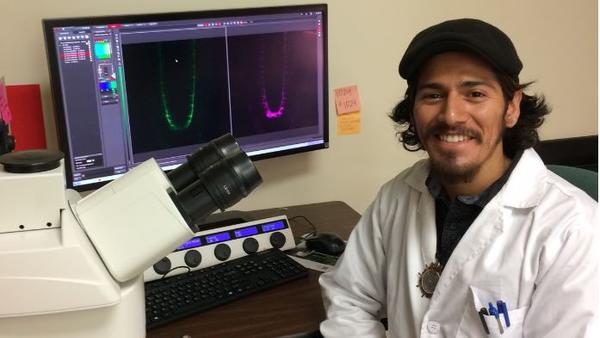
Faustino De La Cruz Jr.
(Jaimie Van Norman Lab)
Understanding Mechanisms of PLK1 and PLK4 Polarization
In plants transmembrane receptor kinases (RKs) have extracellular leucine-rich repeats (LRRs) and an intracellular kinase domains. LRR domains interaction with small molecules and peptides leads to the activation of signaling cascades that are important for plant growth, development, and stress responses. In the root of the model plant Arabidopsis, polarly localized proteins PLK1 and PLK4 are found in the outer and inner plasma membrane domains of endodermal cells, respectively. The specific mechanisms involved in the polar localization of PLK1 and PLK4 proteins are not well understood. To gain insight into these trafficking mechanisms we are taking a chemical genetic approach. Chemical genomics relies on low molecular mass molecules that act in a tunable, dose dependent and reversible manner to target specific pathways. Using fluorescently tagged PLK1 and PLK4 expressed in Arabidopsis roots, along with high content confocal image analysis we will perform a high throughput chemical screening to identify molecules that disrupt the localization of one or both of these proteins. The selected candidates will be subject to a secondary screening to further characterize the action of the molecules. Finally, and beyond the scope of this work, it will be possible to identify the molecular targets of the selected chemicals in order to discover new players in lateral protein polarization.

Raffee Wright
(Gonehal Lab)
Analysis of Downstream Targets and Effects of WUSCHEL
Homeodomain transcription factors responsible for maintaining and regulating stem cells within the shoot apical meristem (SAM) of Arabidopsis thaliana. One example, Wuschel (WUS), is primarily synthesized within the rib meristem and migrates into layer L3 of the SAM. From there it migrates into L2, and L1 of the SAM at progressively lower concentrations. One gene controlled by WUS is Clavata 3 (CLV3). It is a peptide hormone, which acts backwards to repress WUS’s expression. To explore interactions between different chromatin regions within and around CLV3, chromosome conformation capture (3C) will be used to quantify the interaction of the CLV3 transcriptional region with others. Using 3C protocol modified for Arabidopsis thaliana, plant tissue will be fixed and their nuclei extracted. The DNA within the nuclei will be digested by restriction enzymes and then ligated. Regions with higher interaction are more likely to be ligated together. Through the use of quantitative PCR it is expected that the DNA region of the CLV3 transcriptional start site will interact at a high level with other regions linked to WUS regulation such as the 970 region of clv3.
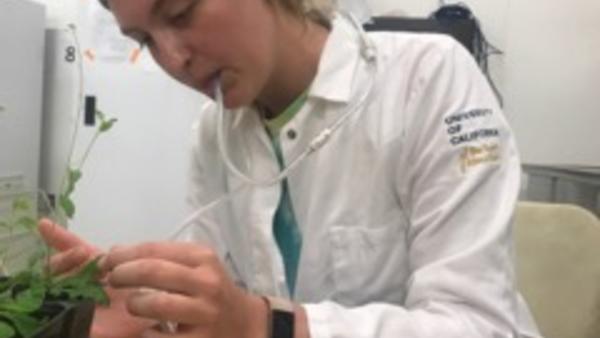
Kaitlyn Coburn
(Linda Walling Lab)
Identification of whitefly defense genes in Arabidopsis.
Decreasing crop yields worldwide, whiteflies are notable herbivorous pests and vectors of viruses. These depleted crops include cassava, an important subsistence crop and source of nutrients for small-scale African farmers and citizens. Developing resistance to pesticides quickly, there are few known, effective mechanisms for whitefly control. However, understanding the genetic basis of whitefly resistance in plants shows potential to address the control of these devastating pests. The Walling lab has gathered transcriptome data of whitefly-resistant and -susceptible cassava genotypes after response to whitefly herbivory, as well as two defense hormones: salicylic acid (SA) and jasmonic acid (JA). Using these data, the Walling lab identified an association between whitefly resistance and response to SA. Among genes showing this association, a known modulator of SA/JA responses, WRKY70, was strongly induced in the susceptible but not the resistant genotype. As a known susceptibility factor to certain pathogens in Arabidopsis, I hypothesize that WRKY70 may act as a whitefly susceptibility factor in cassava. As it is both difficult and expensive to test gene function in cassava, the Walling lab is testing the role of this gene in whitefly defense in the model plant Arabidopsis by using T-DNA knock-down mutants and assessing whitefly (Bemisia tabaci MEAM1) nymph development. I hypothesize that wrky-70.1 and wrky-70.3 mutants will hinder nymph development compared to naturally whitefly-susceptible wild-type Arabidopsis. Furthermore, I will utilize RT-PCR to assess effects of this transcription factor on pathways of defense signaling that may be important in whitefly-resistance. Lastly, I will be performing informatics analyses on time source RNA-seq data sets to define SA- and JA-responsive transcriptomes in Arabidopsis for later comparison to cassava.
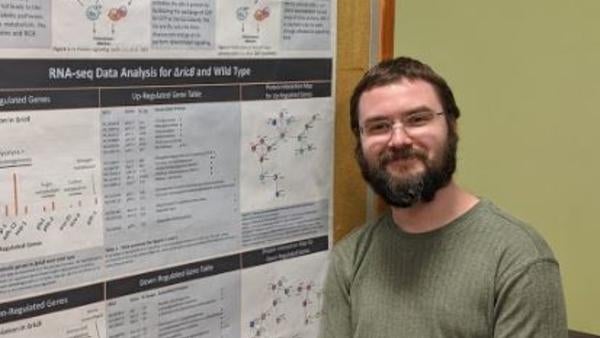
James Johnson
(Borkovich Lab)
Defining metabolic pathways regulated by G protein signaling through integration of transcriptomic and metabolomics data
The filamentous fungus Neurospora crassa is a model organism for the study of eukaryotic biochemistry and cell biology due to its ease of growth, haploid life cycle, and more recently its fully sequenced genome. N. crassa is used to study G protein signaling, an important regulator in many eukaryotic biochemical pathways such as signaling with hormones and neurotransmitters, as well as controlling aspects of growth and development. G protein signaling involves G-Protein-Coupled Receptors (GPCRs) and a heterotrimeric complex composed of α, β, and γ subunits. GPCRs activate the heterotrimeric (αβγ) G protein by facilitating the hydrolysis of GTP to GDP at the Gα subunit. The Gα and βγ subunits then disassociate and go on to perform downstream signaling, such as stimulation of the enzyme adenylate cyclase by the Gα subunit to produce cAMP. In N. crassa there are three Gα subunits, one β subunit, and one γ subunit. Previous work in N. crassa has indicated that the intracellular protein RIC8 is directly involved in the activation of two Gα subunits (GNA-1 and GNA-3) and contributes to maintaining normal levels of these proteins. Preliminary transcriptomic data has revealed that loss of ric8 leads to the mis-regulation of many genes involved in metabolic pathways. As there is no current data connecting RIC8 to metabolism, the present study seeks to determine how G proteins and RIC8 regulate metabolites in N. crassa. Profiling of polar metabolites will be obtained via mass spectrometry for wild type and five different mutant strains of N. crassa. These will include knockout mutants of gna-1, gna-3, ric-8, and cr-1 (the adenylyl cyclase gene), as well as a double knockout mutant lacking gna-1 and gna-3. Samples of wild type conidia, Δric8 conidia, peptone supplemented wild type, and peptone supplemented Δric8 will also be analyzed. Principal component analysis will be conducted to determine consistency between replicates and differences between strains. Additionally, comparisons will be made for presence of specific metabolites in all strains.
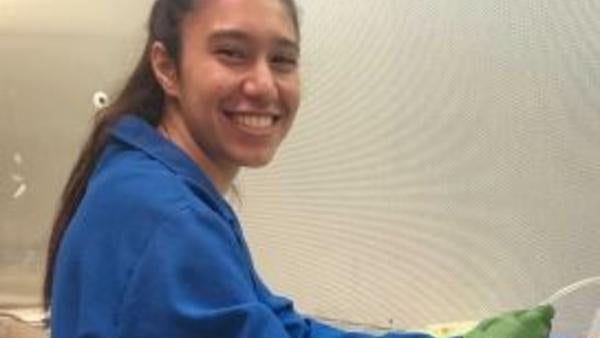
Dima Younes
(Dehesh Lab)
Unravelling Ca2+-dependent transcriptional machinery for induction of general stress responses in plants
Dima Younes, Jin-Zheng Wang, and Katayoon Dehesh
Plants have developed a myriad of sophisticated general adaptive/tolerance mechanisms in response to continuous biotic and abiotic stresses. To gain insight into the transcriptional regulation of general stress responses, we searched for and identified a cis element that we coined Rapid Stress Response Element (RSRE). RSRE is comprised of six G/C rich core elements with A/T rich flanking regions. Bioinformatics analyses found the element to be present in 30% of genes known to rapidly respond to biotic and/or abiotic signals. To investigate the transcriptional machinery responsible for stress-mediated induction of this transcriptional hub, we generated transgenic plants expressing 4XRSRE-Luciferase (RSRE:LUC). Detailed studies of these plants showed critical function of Ca2+ in induction of RSRE. To investigate the general and Ca2+-dependent component of transcriptional machinery, seeds of the RSRE:LUC plants were EMS mutagenized, and the resulting plants were screened for constitutive LUC activity. Among the mutants we focused on the one herein designated constitutively activated RSRE 16 (car16). Second generation sequencing and genetic analyses identified the mutant gene that codes the Golgi localized protein. To unravel the role of Ca2+ as a potential bridge between Golgi and nuclear transcription, several calcium markers are introduced into the RSRE:LUC wildtype background and car16. The resulting homozygous line will be employed to examine the site of Ca2+ release for activation of RSRE and the function of CAR16 in the process.

Saisuki Putumbaka
(Stajich Lab)
Bacteria inside fungi! Microbiome analyses to study bacteria associated with fruit rotting fungi
Symbiotic interactions between fungi and bacteria are evolutionarily and ecologically important. The mutualistic relationship between the fungus Rhizopus microsporus and bacterium Burkholderia is integral to the reproduction and proliferation of the fungal host. However, little is known about when and how these relationships are established, and how they change and whether they also occur among evolutionarily related Rhizopus species. To better understand the interactions between fungi and bacteria and their impact on fungal growth we hypothesized that the strawberry microbiome would change in the presence of R. stolonifer, and that the removal of symbiotic bacteria from R. stolonifer would alter the host asexual reproduction cycle. In order to test the first hypothesis, we chose to examine the effect of R. stolonifer on the strawberry microbiome over a time course of rotting. Comparing the strawberry microbiome at different time points, using next-generation sequencing tools, allows us to more clearly understand how they change over time in the presence of fungus and different postharvest rot preventative measures. In order to test our second hypothesis, we further explored bacteria interactions directly by growing R. stolonifer in the presence of antibiotics to test the effect of removing symbiotic bacteria on the fungi life cycle. Together these studies will further illuminate the importance of fungal-bacterial interactions in fungal biology and post-harvest disease.
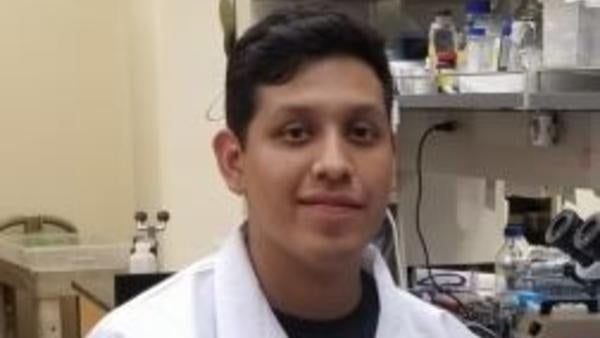
Luis Jaimes Santiago
CSU Northridge
(Kaloshian lab)
Enzymatic Activity of a Possible Cowpea Aphid Effector
The cowpea aphid, Aphis craccivora, is an insect pest that is found worldwide and is responsible for significant yield loss of legume plants, primarily the cowpea, Vigna unguiculata. Cowpea is an important crop that is cultivated in several developing countries due to its short growing period, drought tolerance, and high nutritional value. Cowpea aphids feed on plant phloem sap by inserting their stylets in plant tissues to reach the phloem where they feed on plant sap. In the stylet penetration path and during feeding they deposit saliva containing a cocktail of proteins and other molecules. Molecules found in the aphid saliva are speculated to interfere with plant defense biochemical pathways against aphids. Both plant monosaccharides and disaccharides have been found to play roles in regulation of defense gene expression and signaling in plants. One such disaccharide, trehalose, is involved in resistance to the aphid Myzus persicae in Arabidopsis thaliana. trehalase, an enzyme that breaks down trehalose into glucose, identified in aphid saliva, could be countering the effect of trehalose. The aim of this project is to clone the A. craccivora trehalase and express the recombinant protein in E. coli for functional characterization. The purified trehalase will be tested for in vitro trehalase activity.

Liberty Onia
UC Berkeley
(Walling lab)
Characterizing the Role of ERF72 in the Response of Arabidopsis to Whiteflies
Manihot esculenta, also known as cassava, is a tropical root crop that is the fourth highest source of calories in the world. In the past few decades, high densities of whiteflies have devastated cassava crops in Eastern and Central Africa. At high population densities, whiteflies are able to create physical damage to cassava through feeding alone as well as through their ability to vector cassava viruses. Previous RNA-sequencing studies from the Walling Lab identified candidate whitefly defense genes that are strongly induced in a whitefly-resistant cassava genotype, but not in whitefly susceptible cassava. One of these candidate genes is the ethylene response factor ERF72. We hypothesize that ERF72 plays an important role in whitefly resistance in cassava. We are also interested in understanding possible roles of this gene in regulating different defense hormone signaling pathways. As making transgenic cassava is time consuming, I will test the role of ERF72 in resistance to whiteflies using Arabidopsis ERF72 homozygous knock-out T-DNA lines (erf72-1 and erf72-2). I will infest erf72-1,erf72-2, and the wild-type with Bemisia tabaci B. As resistance to whiteflies is manifested as a slowing of whitefly development, the numbers and stages of nymphs (immature whiteflies) will be determined at day 21 after infestation. Additionally, I will use semi-quantitative RT-PCR to determine if transcript levels of defense sentinel genes in the erf72 lines and wild type change in response to whitefly infestation. These experiments will determine if ERF72 plays a role in the whitefly defense response of Arabidopsis. Future work can then confirm its role in resistance to whitefly in cassava. Possible findings will contribute to our understanding of the plant-whitefly interaction at the genetic level.

Karen Ayetiwa
UC Riverside
(Meng Chen lab)
Characterization and Localization of PAP1
Anthocyanin is a pigment that protects plants by absorbing high-energy UV light, in response to environmental stress, improving the survival of plants. Production of Anthocyanin Pigment-1 (PAP1) is a transcription factor that regulates the production of the pigment anthocyanin. PAP1 has both a DNA binding domain and an activation domain that regulate gene expression. Although we have a broad understanding of the PAP1 protein, the activation domain has yet to be characterized. The transcription activation domain (TAD) is a short sequence of amino acids that helps trigger the activation of a particular set of genes. To identify the TAD of PAP1, we will construct clones incorporating various truncations of PAP1, then transform these constructs into yeast. By utilizing theYeast- two Hybrid (Y2H) system, we expect to identify if a particular truncation we insert into the plasmid is a TAD. Previous studies have revealed that PAP1 translocates from the cytoplasm to the nucleus, but requires a certain amino acid sequence to instruct the transcription factor where to move. This amino acid sequence is a nuclear localization signal (NLS), which tags a protein for import into the cell nucleus by nuclear transport. To investigate the NLS, we will clone potential NLS candidates and transiently transform tobacco via Agrobacterium. By attaching a fluorescent protein, mClover3, to our PAP1 truncations, we will use confocal microscopy to identify the localization of the protein. Through the characterization of PAP1, we can further understand gene regulation of plants under environmental stress.

Chris Roland R. Valdez
San Bernardino Valley College
(Koenig lab)
Elucidating the Molecular Basis of Genome Size Variation in Asian Rice (Oryza sativa)
The genome size of flowering plants varies dramatically between and within species. Most of this variation is not due to changes in the amount of genic DNA sequence but is instead due to changes in the amount of repetitive sequences such as tandem satellite repeats, microsatellites, and transposable elements. Repetitive sequences make up the majority of eukaryotic genomes and can contribute to phenotypic variation, yet the processes by which repeat content rapidly changes remain obscure. Using approaches in cutting-edge bioinformatics, we will analyze variation in genome content of over 3000 resequenced accessions of Asian Rice (Oryza sativa), an important staple crop that feeds over half of the world. We will use a novel approach based on counting K-mers – DNA sequences of length K – in various Asian Rice accessions to evaluate genome content variation. We will then determine the genetic regulation of variable sequences in the genome using association studies. This project will provide insight into the significance of the variation of these repetitive sequences, the regulation of this variation, and the role of this variation in genome size.
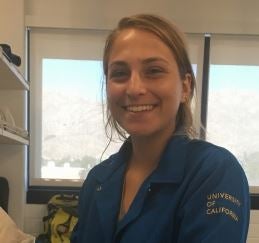
Elise Landsbergen
Denison University
(Nelson lab)
From Mutation to Mutant: identifying genes that may be involved in synthesizing a novel hormone
Wildfires are a common environmental stress that hinder plant growth. Fire following seeds have adapted to the stress of wildfires by sensing smoke. Wildfire smoke contains karrikins, a chemical that causes seeds to germinate and increases light sensitivity. Sensing karrikins requires the receptor KAI2, which is not fire follower specific; this suggests that KAI2 has an alternative purpose to karrikin sensing. Additionally, the KAI2 pathway shares many similarities with the D14 pathway. D14 mediates plant responses to strigolactones: endogenous plant hormones that share structural similarities with karrikins. Phylogeny suggests that D14 evolved from KAI2, yet KAI2 has not been observed to sense endogenous signals. Using the karrikin sensitive fire follower Whispering Bells, or Emmenanthe penduliflora, this study aims to gain a better understanding of the KAI2 pathway and KL, a hypothetical endogenous signal sensed by KAI2. We will extract the RNA of E. penduliflora seedsand use next generation sequencing to de novo assemble a transcriptome. This transcriptome will then be used to identify KAI2 genes within E. penduliflora, compare their protein sequences with other karrikin-recognizing plants, and locate related genes. Because of the similarities between KAI2 and D14, this study hypothesizes that KL is an endogenous signal recognized by KAI2, and transcription of KL genes will increase in tandem with KAI2 gene transcription.
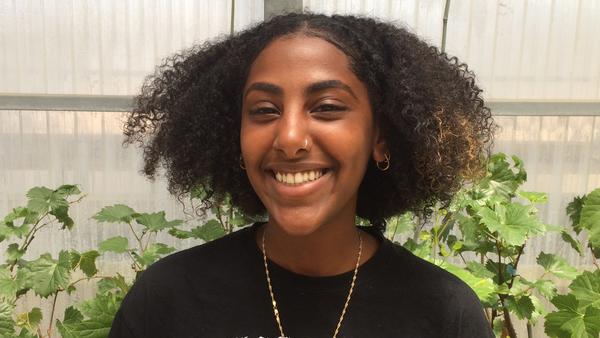
Marakee Teshome Tilahun
San Francisco State University
(Nabity lab)
Comparative phenomics at the plant-insect interface
Daktulosphaira vitifoliae (grape phylloxera) is a global pest of grapes, the world’s most culturally and economically significant fruit. When D. vitifoliae feeds on Vitis (species), proteins called effectors are released into the plant to manipulate the host plant systems. There are over two thousand predicted effectors determined by their secretory codes and expression in feeding life stages. To characterize the unknown function of candidate effectors we used bioinformatics to analyze gene expression in populations that differ in successful colonization of the same host plant. Several effector genes were differentially expressed and contained common protein structure motifs one of which being the EF Hand domain. The EF hand domains bind with calcium ions, suggesting a possible target in the Ca+ signaling pathways of the plant immune system. Our second step was taking the predicted effector genes containing EF hand domains and test them using yeast two hybrid (Y2H) experiments. Y2H experiments are used to identify the plant proteins that our effectors interact with in vitro. This process involved techniques in creating primers, conducting PCRs to amplify our effector genes, and cloning into yeast. I predict we will see a positive interaction in the yeast two hybrid that suggests our predicted effectors are true effectors that manipulate the calcium signaling pathways in grape.
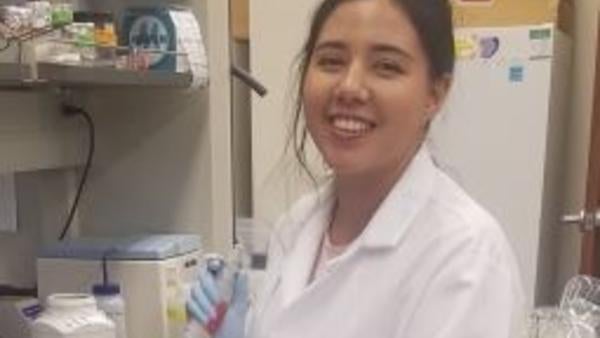
Veronica Batallones
CSU Fullerton
(Borkovich lab)
In Vivo Fluorescent Tagging to Determine Co-localization and Protein-Protein Interactions Between HeterotrimericGαSubunits and other Proteins in Neurospora crassa
Neurospora crassa is a filamentous, multicellular fungus with low nutrient requirements, a short-haploid life cycle, a sequenced genome and easy, tractable genetics, making it an ideal organism to study cell biology and signal transduction. In eukaryotes, G protein signaling regulates normal growth, development, and environmental sensing. The G protein is a heterotrimer consisting of an α, β, and γ subunit. When a signal is detected, the Gα dissociates from the heterotrimer, leaving the Gβ and Gγ as a dimer. Both the Gα and the Gβ-Gγ dimer go on to perform downstream signaling. In N. crassa, there are three Gα, two Gβ, and one Gγ subunits. A previous study in N.crassa found that two of the three Gα proteins interacted with RIC8, a type of guanine-nucleotide exchange factor. The aim of this study is to determine whether the three Gαs co-localize with other proteins, such as RIC8. The three Gα subunits will be tagged with mCherry (Red), while the other protein of interestwill be tagged with GFP (Green), all at the native chromosomal locus. The Gα-mCherry construct will insert mCherry into a conserved loop region of the Gα subunits. Assemblage of the Gα-mCherry construct will require the polymerase chain reaction, which will create specific DNA fragments. The fragments will be integrated into a plasmid via homologous recombination in yeast. The plasmid will be isolated and transformed into N. crassa. We will then utilize cellular fusion, a process in which different strains of N. crassa can grow as one, to bring together fluorescently tagged proteins together in the same cell. We will fuse a strain with the mCherry tag on the Gα protein and a strain with the GFP on the protein of interest and the resulting fused strain will produce both the mCherry tagged Gα protein and GFP-tagged target. These cells will then be analyzed using a fluorescent confocal microscope to determine whether the proteins co-localize.

William Sauers
Univ. of Scranton
(Dehesh lab)
Delineating plastidial metabolite MEcPP regulated interorganellar signaling cascade
Plants have evolved elaborate endogenous signaling pathways which allow them to respond to environmental stresses. Plastids play a key role in sensing and responding to stress partially through altering nuclear gene expression. However, the underlying mechanisms of this communication are still unknown. MEcPP, the plastidial produced intermediate of MEP pathway, identified as retrograde signaling molecule, conveys information from the chloroplast to the nucleus in response to environmental stimuli. Upon stress, elevated MEcPP levels increase the expression of the nuclear encoded plastidial localized ICS1, thereby raising the levels of the stress related hormone Salicylic Acid (SA). To delineate the signaling cascade regulated by MEcPP, the second-round genetic screen was performed to identify mutants that can suppress SA accumulation in mutant plants (ceh1) that accumulates high endogenous levels of MEcPP and SA. One of the mutant designated recovery of ceh1 (rceh1) was screened out. To demonstrate the function of RCEH1 in MEcPP mediated retrograde signaling, genetic, cellular imaging, and biochemical analysis were preformed to identify interacting proteins of RCEH1 in the signaling cascade. Two proteins were identified that regulate cellular redox status and which may play a role in this pathway. We will use a split luciferase construct to identify and locate interactions. Further work will confirm the RCEH1 interacting proteins to elucidate the specific mechanism of MEcPP regulating the RCEH1 function in intraorganellar communication.

Audrey Habron
Rockhurst University
(Rasmussen lab)
A Mutagenesis Approach to Identifying Division Plane Orientation Genes in Zea mays
Division plane orientation is an essential process in plant development and for relative cell alignment within the tissue. Symmetrical cell division is important for growth, while asymmetrical cell division allows for new cell type differentiation. Knowledge about genes involved is imperative to understanding the functionality of division plane orientation and its relationship with cell maintenance. However, a comprehensive identification of these genes and their respective roles is still incomplete. In a forward genetic screen approach, mutants were generated in maize (Zea mays), a model organism for plant biology research, with ethyl methanesulfonate (EMS). This produced mutants with defects in division plane orientation; next, a ranking and prioritization of defect mutants was conducted with light microscopy. Current research consists of a plant tissue screening for unknown mutant identification as well as the dismissal of known mutants. Screening techniques include leaf glue impressions of potential mutant specimens, imaging of dividing plant cells with a confocal microscope, and immunofluorescence techniques. Results will provide insight into cellular interactions related to division plane orientation. This may reveal additional proteins and genes involved in division plane orientation and promote deeper understanding of the division plane orientation.
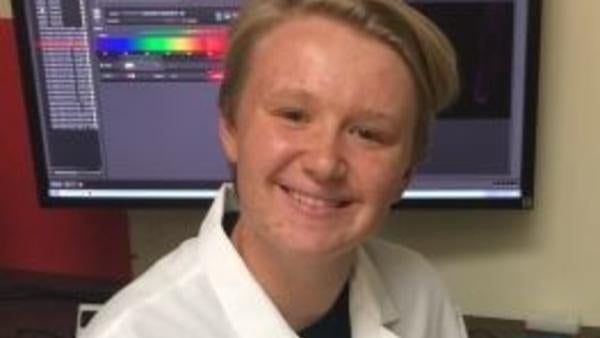
Henry Richmond-Boudewyns
Rochester Institute of Technology
(Van Norman lab)
Characterizing the Localization and Function of PLK4 in Root Development
Transmembrane receptor-like kinases (RLKs) are a large family of transmembrane receptor kinases that are important for cell-to-cell signalling in plants. Due to the fact that plant cells are surrounded by rigid cell walls, signaling at the plasma membrane is predicted to be critical for plant development. Despite this, many RLKs remain poorly understood. The Van Norman lab has identified a specific RLK named POLARLY LOCALIZED KINASE 4 (PLK4) that is expressed in the endodermis and the central stele with stronger expression as cells begin to differentiate. Preliminary work reveals that PLK4-GFP fusions are polarly localized to the inner polar domain of undifferentiated endodermal cells, suggesting that PLK4 perceives a signal originating from the stele. Additionally, PLK4 appears to be expressed only in a subset of endodermal cells and is only present in cells that will form the Casparian Strip – a selectively permeable, belt-like structure that wraps around differentiated endodermal cells. Using laser scanning confocal microscopy, we will conduct a detailed analysis of PLK4 expression and localization in space and time. We predict that PLK4 is important for differentiation of endodermal cells that will form a Casparian Strip. Two T-DNA insertion alleles of PLK4 have been obtained; one of which is likely a null allele. To test our hypothesis for PLK4 function, we will examine plk4 mutant roots.. Specifically, we will examine the timing and function of the Casparian Strip and passage cells in the plk4 mutants as compared to wild type.
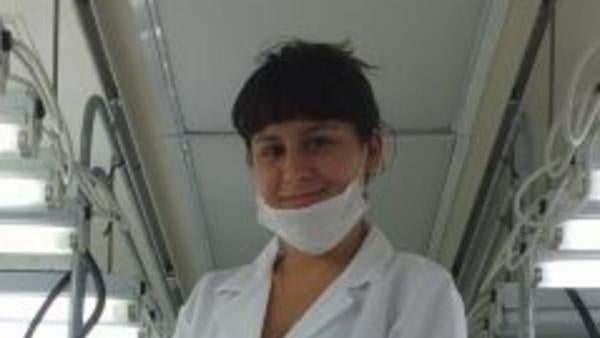
Hanah Chaudhry
New College of Florida
(Eulgem lab)
Using Arabidopsis to determine defense devices against the deadly and devastating fungal pathogen Macrophomina phaseolina
Plants have evolved sophisticated immune systems that allow them to recognize and respond to pathogens. A particularly devastating pathogen, Macrophomina phaseolina, is a necrotrophic fungus causing diseases like charcoal rot and stem blight on its broad range of over 500 hosts. As global temperatures rise M. phaseolina will have increased habitat availability. Although this pathogen causes significant economic losses globally, defense mechanisms against it are not well studied. We have established agar plate-based assays using Arabidopsis thaliana to study genes important in defense against M. phaseolina. Using mRNA sequencing, genes upregulated in infected plants were identified. I am using A. thaliana T-DNA mutant lines, which have a loss of function in one or more of these genes to analyze their role in host immunity. The mutants are grown and infected with M. phaseolina to determine if the gene contributes to disease resistance. By the end of this project, I expect to identify many key players in the defense system of A. thaliana to M. phaseolina, especially those controlled by plant stress hormones like ethylene, jasmonic acid and salicylic acid. With this information, I hope crop varieties that are more resistant to M. phaseolina will be developed.

Jessica Adams
Univ. of Connecticut
(Wheeldon lab)
Increasing the Versatility of Genome Editing in Yarrowia lipolytica through the Application of Type 5, Class 2 Nucleases in CRISPR-mediated Systems
The costly and detrimental nature of modern fuel sources necessitates the study of alternative methods to produce oil. Oleaginous microorganisms capable of accumulating a large amount of lipids are thus sought and studied with the objective of amplifying their lipid production. The yeast Yarrowia lipolytica demonstrates a capacity to generate a high degree of metabolic precursors for lipid biogenesis and a lipid mass amounting to 90% of its dry cell weight. As a nonconventional yeast with a complete reference genome amenable to new gene integration, Y. lipolytica is a model candidate for studies involving the use of CRISPR-mediated genome editing technologies to enhance the productivity of lipid biogenesis pathways. A CRISPR-Cas9 system effective in driving new gene integration in Y. lipolytica was developed in 2016, however, the capability of Type V, Class 2 CRISPR nucleases such as Cms1 and Cpf1 with Y. lipolytica has yet to be demonstrated. Cms1 and Cpf1 nucleases do not require a trans-activating crRNA, or tracrRNA, and are therefore shorter and easier to synthesize than Cas9 nuclease systems. Additionally, Cms1 and Cpf1 complexes provide versatility in cut-site sequence composition by cleaving target DNA located near T-rich protospacer-adjacent motif (PAM) sequences, while Cas9 requires a G-rich PAM sequence. These qualities, in conjunction with the capacity of Cpf1 nuclease to generate overhangs in cleaved DNA that aid new gene integration, illustrate the potential of Cms1 and Cpf1 nucleases to increase the versatility of genome-editing technology in model organisms. Here, four CRISPR-Cms1 and Cpf1 systems were proven functional in Y. lipolytica, allowing for their use in future investigations of lipid biogenesis in this key oleaginous organism.
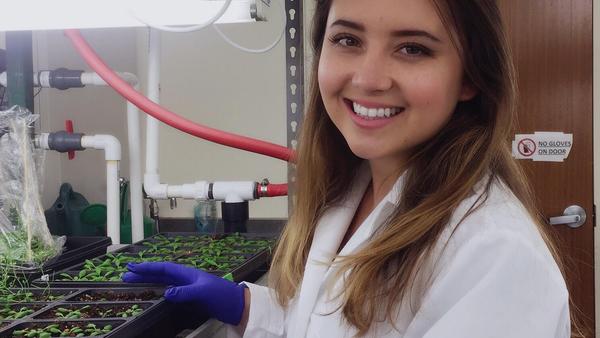
Vanessa Peterson
Cal Poly San Luis Obispo
(Yang lab)
Functional Role of Membrane Microdomains in Auxin-mediated Pavement Cell Formation
Membrane microdomains enriched in sphingolipids and sterols have been implicated in the functioning of a plethora of cellular signaling processes. The overarching goal of this project is to explore the functional role of membrane microdomains in the formation of Arabidopsis leaf epidermal pavement cells. The central hypothesis to be tested is that auxin regulates the dynamics of membrane microdomains at the plasma membrane, leading to the establishment of the lobe-indentation asymmetry. To test our hypothesis, we propose two main aims. Aim 1 will test whether the integrity of lipid microdomains is required for PC formation. The sterol-and-sphingolipid-deficient Arabidopsis mutants will be used for this part of the work. PC phenotype in these mutants will be visualized using confocal laser scanning microscopy. If our hypothesis is correct, we should observe defected PC formation in these mutants. Aim 2 will investigate how auxin regulates the specific recruitment of proteins into membrane microdomains. It has long been suggested that proteins involved in signal transduction can be selectively induced or excluded from the lipid microdomains during intracellular signaling. Biochemical approaches will be used for this part of the work. We anticipate an altered protein composition of membrane microdomains after auxin treatment. Uncovering the link between auxin signaling and membrane dynamics in PC formation will be an important advancement in plant developmental biology and cell signaling.

Selena Burke
Frostburg State University
(Koenig lab)
Local Adaptation of Barley to Climatic and Competitive Environments
Rapid, global climate change is one of the most urgent threats to our natural and agricultural systems. It is imperative that we understand how organisms can survive in vastly different environments to combat the negative consequences of climate change. Beginning in 1927, Harlan and Martini initiated a series of evolutionary experiments to explore the genetic basis of local adaptation in an agricultural context. They intercrossed barley lines collected from diverse environments and competed the progeny of these crosses against each for nearly half a century in two vastly different climatic environments (Bozeman, MT and Davis, CA). We will compare material from each of these conditions to search for the genetic and phenotypic basis of adaptation to climate. We will first compare the performance of barley landraces, as measured by seedling growth rate, under conditions mimicking the climates found at both sites in 14 day trials. Subsequent experiments will compete early and late generations of Bozeman and Davis adapted populations under greenhouse conditions in a six week trial. In parallel, we will use molecular techniques to explore the genetic changes in each population over time to search for alleles that may have contributed to local adaptation. These experiments will provide insight into the genetic basis of adaptation to local environments, and will elucidate how standing genetic variation in a composite cross population impacts overall plant growth.
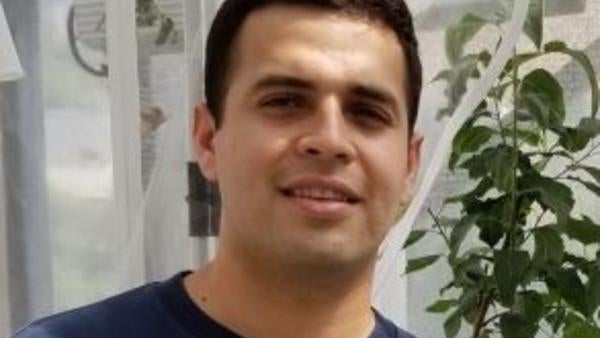
Emmanuel Cuevas
CSU Long Beach
(Nabity lab)
Woolly Apple Aphid resistance in a variety in apple plants
The Woolly Apple Aphid (WAA) is an insect that is native to Eastern North America but has been able to spread world-wide. Apple trees are its main source of food and it mainly feeds on wounds, cuts and axils of the tree. When the Woolly Apple Aphid feeds on apple trees it reduces the quality and amount of the apples by reducing the nutrient movement in the tree. In this study, we tried to find out the fecundity and death rate of the Woolly Apple Aphid in various types of apple plants. The plants vary in resistance to the WAA and the experiments will be held in a greenhouse in Riverside California. After assessing the WAA, the data will be analyzed using R a statistical programming language. Another form to understand the plant defenses when they are exposed to the WAA is Callose staining which will be performed to see the differences in the resistance response of various types of apple plants. The plants 02-O3R5-001, 02-O3R5-099, Geneva 935 and Geneva-16 will most likely be the most susceptible to aphid attack and will show the greater aphid colony growth. It is important to understand how the WAA infests various apple trees because it is a great source of food around the world. By understand why the WAA attacks the plants and how we can stop it we can increase our food production going into the future.

Cora Bright
Univ. of North Carolina at Pembroke
(Reddy lab)
Genome Wide Quantification and Analysis of Master Plant Regulator WUSCHEL/DNA Interaction
Plant growth above ground is regulated by a structure called the Shoot Apical Meristem (SAM) which contains a group of undifferentiated cells that must be constantly maintained to ensure a balance is kept between their undifferentiated identity and fully differentiated organs. The WUSCHEL (WUS) protein is essential in meristem activity in Arabidopsis thaliana as it works by regulating several key components of the SAM molecular network. In previous studies, when WUS is mutated to an inactive form, no meristem is formed at all. WUS upregulates and is in turn negatively regulated by CLAVATA3 (CLV3) forming a feedback loop that is a critical component of meristem growth. While WUS activity relating to individual targets has been investigated, a more comprehensive inquiry into its full range of targets would be helpful to characterize the nature and role of this factor. The first focus of this study is on large-scale patterns of DNA binding interaction with WUS in Arabidopsis. This will be done through gathering and analysis of ChIP-Seq data from Arabidopsis inducible LER p35S:WUS-GR ap1-1 cal-1 plants and pure ap1 cal-1 control plants, allowing for an accurate comprehensive in vivo snapshot of WUS activity throughout the genome. The second scope of this study will be looking at the transcriptional regulation events surrounding a WUS forced dimer that will be introduced in plants in a variety of different conditions. This will open different avenues for tracking the forced dimer itself and the different phenotypes produced by the WUS dimeric protein over time.
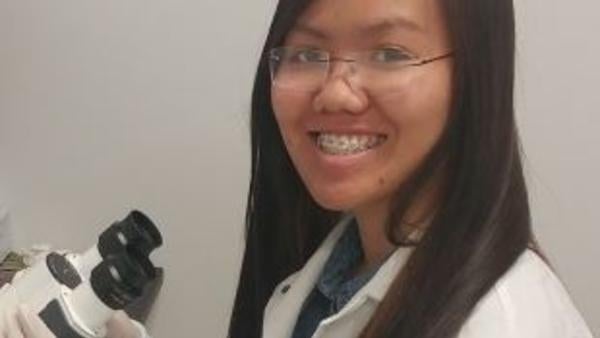
Ngoc (Iris) Thai Hieu Tran
Riverside City College
(M. Chen lab)
Translocating mechanism of HEMERA from plastids to nucleus
For cells to survive and grow in different environments, communication between subcellular organelles is the key. Notably, various studies showed that there are many dual-localized proteins with multiple functions in plants, and a number of those enact the retrograde pathway from plastids to the nucleus. HEMERA (HMR) in Arabidopsis thaliana plays important roles in chloroplast biogenesis as well as light signaling in nucleus regarding hypocotyl growth. Although previous studies showed that HMR first goes to plastids via a transit peptide at the N-terminus, due to the predicted nuclear localization signals of HMR does not function as expected, the sorting mechanism of this protein from plastids to the nucleus is still poorly understood. Besides, the discovery of the protein RCB (Regulator for Chloroplast Biogenesis) suggested that this protein could interact directly with HMR, and together they affect the processes of light signaling in nucleus and chloroplast biogenesis. Therefore, to test the hypothesis that the interaction between HMR and RCB enhances the translocation of HMR into the nucleus, I will use Agrobacterium containing genes which encode for various versions of HMR fused with YFP and RCB fused with CFP, then expressing them separately and together in tobacco by infiltration. The result of each transformation will be observed under Fluorescent Microscope. The outcome of this experiment is expected to provide new insight into how HMR translocates from chloroplast to nucleus specifically, and the communication between plastids and nucleus in general.

Joshua Johnson
Central College
(Borkovich lab)
Fluorescent Tagging of a Family of G-Protein Coupled Receptors Involved in Plant Cell Wall Degradation
G-protein coupled receptors (GPCRs) are membrane associated proteins that are important for regulating growth and sensing environmental stimuli in many organisms, including, fungi, plants, and humans. The PTH11-like GPCRs are of interest because little is known about this class outside of the organism Magnaporthe oryzae, which is a pathogen of rice (Oryza sativa). The GPCR PTH-11 is necessary for host surface recognition and pathogenicity in M. oryzae. Better understanding of this protein can lead to advances in agriculture. In particular, greater knowledge of PTH11-like GPCRs could help increase yields of rice by targeting the pathogenicity of M. oryzae. The model filamentous fungus Neurospora crassa has 27 putative genes for PTH11-like GPCRs, which is of interest because N. crassa is responsible for the turnover of cellulose in the environment, rather than functioning as a plant pathogen. In addition, N. crassa has a fully sequenced genome and a full library of gene deletion mutants for each gene. These qualities make it an ideal model organism for study of the PTH11-like gene family. In this study, a green fluorescent protein tag was added to each of the putative genes, as well as a V5 tag, which is a small epitope with an easily accessible antibody. The vectors with the genes coding for tagged proteins were transformed into N. crassa, creating tagged versions of each PTH-11 like GPCR. The fluorescent GPCRs were used to study localization of the GPCR when growing on different carbon sources as well as co-localization with red fluorescent protein-tagged heterotrimeric Galpha proteins.

Nicholas Curtis
Univ. of Texas at Austin
(Wheeldon lab)
Engineering gene expression in Yarrowia lipolytica using synthetic activators
Yarrowia lipolytica is an industrially relevant oleaginous yeast known for its ability to produce and accumulate large quantities of lipids. Understanding mechanisms of gene activation allows a greater utilization of Y. lipolytica as a host for production of diverse oleochemicals. To engineer and tightly control gene expression for pathway engineering, we will study the impact that different activation domains have on gene transcription. The selected activation domains will be fused to a DNA-binding domain to create a synthetic transcription factor, and its impact on the expression of hrGFP will be tested. The effect of changing the number of binding motifs in the synthetic promoter will also be investigated. Once an effective activation domain has been identified, a CRISPR-dCas9 activator system will be employed to study the impact of different activation regions on the expression of downstream proteins. By choosing different sgRNA targets, we will use a dCas9-activation domain fusion to activate fluorescence in a synthetic and using several native promoters. Using this developed CRISPRa system, production of industrially-relevant products will be engineered and optimized in Y. lipolytica.

Zachariah Jaramillo
Brigham Young University
(Wheeldon lab)
Engineering gene expression in Yarrowia lipolytica using synthetic activators
Yarrowia lipolytica is an industrially relevant oleaginous yeast known for its ability to produce and accumulate large quantities of lipids. Understanding mechanisms of gene activation allows a greater utilization of Y. lipolytica as a host for production of diverse oleochemicals. To engineer and tightly control gene expression for pathway engineering, we will study the impact that different activation domains have on gene transcription. The selected activation domains will be fused to a DNA-binding domain to create a synthetic transcription factor, and its impact on the expression of hrGFP will be tested. The effect of changing the number of binding motifs in the synthetic promoter will also be investigated. Once an effective activation domain has been identified, a CRISPR-dCas9 activator system will be employed to study the impact of different activation regions on the expression of downstream proteins. By choosing different sgRNA targets, we will use a dCas9-activation domain fusion to activate fluorescence in a synthetic and using several native promoters. Using this developed CRISPRa system, production of industrially-relevant products will be engineered and optimized in Y. lipolytica.
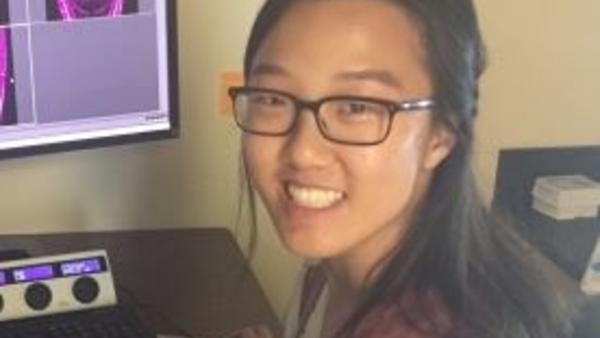
Hannah Hall
Middle Tennessee State University
(Van Norman lab)
Identification of PLK1 protein domains important for polar localization
Polarly Localized Kinase 1 (PLK1) is a transmembrane receptor-like kinase (RLK) with a known developmental tissue patterning in roots, unlike other RLKs that play roles in developmental patterning that remain uncharacterized. PLK1 fused with green fluorescent protein (GFP) shows lateral polarity in root tissue, but protein directionality differs based on cell type. The conditions under which this directionality is maintained disrupts other transmembrane proteins’ localization, even disrupting PLK1 localization to plasma membrane regions in mutant Arabidopsis roots. This suggests that PLK1 localization to specific regions depends on cell-to-cell communication, but not negating the importance of specific domains of PLK1 protein for localization to the correct regions. For the experiment sets of truncated PLK1 proteins with missing domains at the C-terminal end were used. Using the laser scanning confocal microscopy (Leica SP8) the localization of these truncated version of PLK1 fuse to GFP were examined and compared to the full-length PLK1:GFP fusion in mutant and non-mutant roots. Plants were also treated with pharmacological inhibitors of protein trafficking or cytoskeletal elements to determine if localization could be disrupted. These data will provide insight on how PLK1 is directed to specific plasma membrane regions and allow for comparisons with existing membrane protein localization paradigms.
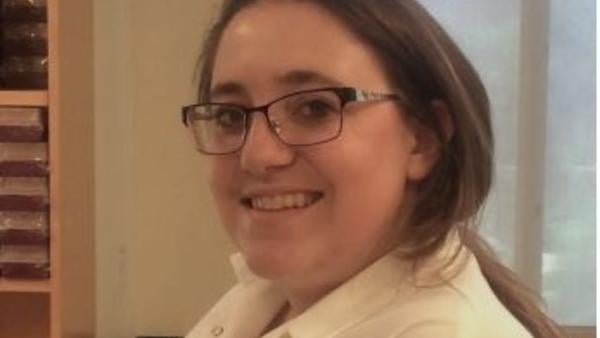
Aeriel Vanluesauls
Riverside City College
(Dehesh lab)
PhosphoChloroplast Retrograde Signaling in Response to High Light Stress in Arabidopsis thaliana
The metabolite 2-C-methyl-D-ethyritol 2,4-cyclodiphosphate (MEcPP) is produced in the MEP pathway and accumulates in plants in response to external stress. Generally speaking, when a plant is exposed to a stress, it first senses the stress, activates a signaling pathway, and then initiates a response. Our experiment focuses on high light stress, which is sensed by the chloroplast. When high light is sensed, MEcPP accumulates triggering a signaling pathway from the chloroplast to the nucleus, ultimately regulating gene expression. How this signal localizes to the nucleus is still unknown. Our hypothesis is that the accumulation of phosphoinositides in the nucleus regulates gene expression in response to high light. This response can be observed using a phosphoinositide sensor molecule and observing the sample by confocal microscopy. Additionally, we will compare the capabilities of triggering the retrograde response to high light conditions or MEcPP treatments in Col-0 wild type plants and various knockout mutants impaired in PI production. To isolate the homozygous mutants we will use PCR. Then, we will use quantitative RT-PCR to determine which plants are knockouts. Once we have selected the homozygous knockout mutants, we will expose them to the high light or MEcPP and use quantitative RT-PCR to determine if specific genes are activated by the retrograde response. If our hypothesis is correct we should find HPL and bzip60.

James Jen Yen
UC Riverside
(Nothnagel lab)
Solubilization and renaturation of plant cell wall methyltransferases expressed in E. coli
Research on plant cell walls has value towards increasing knowledge about plant structure and function and towards providing environmentally friendly energy for society. While combustion of petroleum deposits directly releases climate-changing carbon dioxide into the environment, production and combustion of biofuels derived from plant cell walls is nearly carbon neutral and thus environmentally advantageous. This project focuses on methyltransferases that add O-methyl ethers to sugars in plant cell walls. Two methyltransferases, MT1 and MT6, encoded by Physcomitrella patens genes cause synthesis of 3-O-methylgalactosyl residues when transgenically expressed in tobacco. This result is curious because the moss cell wall contains many 3-O-methylrhamnosyl residues but few, if any, 3-O-methylgalactosyl residues. The hypothesis is that the MT1 and MT6 methyltransferases can methylate either rhamnosyl or galactosyl residues, depending on substrate conditions. The approach is to separately express the methyltransferases in E. coli, purify the tagged proteins, and biochemically assay their enzymatic activities under controlled conditions. Physcomitrella cDNAs corresponding to MT1 and MT6 were modified to remove the transmembrane domain and to add a short N-terminal peptide that binds to modified streptavidin to enable affinity purification. This modified cDNA was cloned into the pASK-IBA16 plasmid under the control of the tetA promoter so expression is induced by anhydrotetracycline. The plasmid also adds a signal sequence targeting the periplasmic space, promising easier downstream purification. Protein gel electrophoresis indicates, however, that the transgenic polypeptides probably accumulate in inclusion bodies. Solubilization and renaturation of polypeptides from inclusion bodies are currently under investigation.
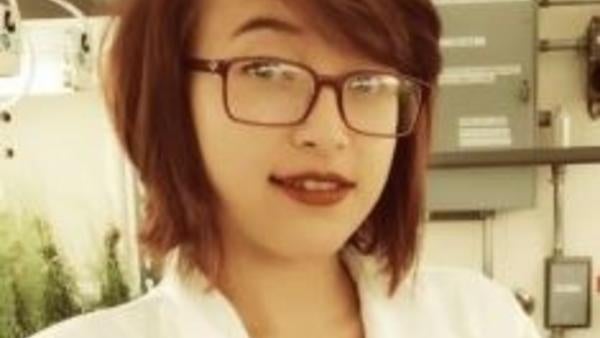
Tamera Taylor
Chaffey Community College
(X. Chen lab)
Exploration of D-Body Formation in Arabidopsis
MicroRNAs (miRNA) are a type of small RNA, consisting of 20 to 40 nucleotides, associated with gene silencing in eukaryotes. They play an essential role in development and physiological regulation by RNA degradation or translation inhibition. In Arabidopsis, primary transcripts are processed into miRNA/miRNA duplexes by Dicer-like 1 (DCL1) in the nucleus. DCL1 is colocalized with partner proteins HYL1 and SE in membraneless organelles called dicing bodies (d-bodies). It has been proposed in mammalian cells that membraneless organelles, like stress granules, are formed through a process of liquid-liquid phase separation (LLPS) that can be promoted by proteins containing intrinsically disordered regions (IDR). In Arabidopsis, HYL1 contains an IDR at its C-terminus, suggesting the possibility for it to undergo LLPS and form d-bodies in a comparable manner. To uncover the mechanism of d-body formation in Arabidopsis, we recombinantly express HYL1 fused with SNAP tag, then coupled with SNAP-Surface 488, to monitor the dynamic behavior of HYL1 in vitro and test its ability to undergo LLPS. We will characterize the roles of previously identified genes required in d-body formation in vitro by recombinantly expressing them and checking their influence on HYL1 and its phase separated droplet. These experiments will use techniques in PCR, agarose gel electrophoresis, DNA extraction, ligation and microscopy.
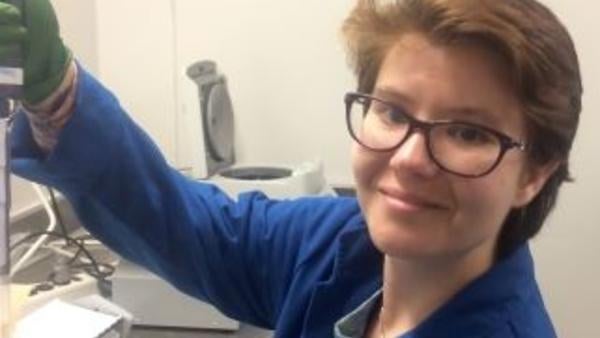
Sabrina Bimson
Ursinus College
(Bailey-Serres lab)
Translatome Analysis of the Phosphate Starvation Response of Oryza sativa
The human population is predicted to reach ten billion over the next three decades. This estimate coupled with climate change will demand greater and more effective agricultural output as changes in arable land occur. In order to sustain crop yield, food production requires application of fertilizers containing phosphorus on agricultural fields. Modern agriculture largely depends on phosphorus derived from phosphite rocks. Phosphorus current global reserves may be depleted in 50-100 years. This rapid decline is predicted to produce a significant rise in prices that may make this fertilizer unaffordable to poor farmer’s communities. Consequently, farmers who cannot afford phosphorous fertilizer will struggle to grow rice in low phosphate conditions. This project aims to find genes critical to the low phosphate survival, a signaling network that reorganizes root and shoot development to maximized phosphate absorption and utilization. Specifically, rice (Oryza sativa cv. Nipponbare) will be grown with or without a phosphate source, and the root/shoot tissue will be harvested for mRNA and phosphate level analysis. Techniques used for mRNA analysis include Real-Time Polymerase Chain Reaction (qPCR), Translating Ribosome Affinity Purification (TRAP), RNA-Sequencing, and confocal microscopy. By use of these tools we will decipher the regulation of genes at different levels of gene expression, between transcription and translation, as well as within specific cell-types of roots and shoots. The effective long-term goal is to grow sustainable rice in low-phosphate conditions to the same level of rice grown with an exogenous phosphate source enhancing low input production of the major source of carbohydrates for half the world.
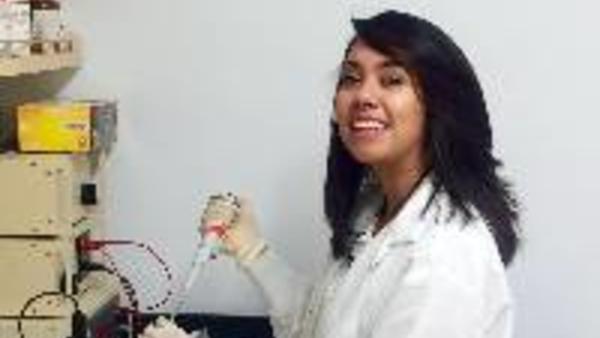
Brooke Gomez
San Bernardino Valley College
(M. Chen lab)
Mechanism of Sorting Dual-Localized Proteins in the Plant Cell
In the eukaryotic cell thousands of proteins need to be transported from the cytoplasm, in which they are synthesized, to their respective organelles. Each protein consists of one or more individual signals that target proteins to specific organelles. However, the sorting mechanisms of proteins localized to more than one organelle are still poorly understood. HEMERA (HMR) in Arabidopsis thaliana is a dual-localized protein necessary for light signaling in the nucleus and transcriptional regulation in the chloroplasts. HMR contains both a putative nuclear localization signal and a transit peptide for nuclear and plastidial import, respectively. To investigate the subcellular partitioning of dual-localized proteins to the nucleus and plastids, I will utilize HMR as the model to investigate the subcellular localization of proteins with dual localization signals in tobacco. This project will allow us to gain novel insight into the sorting mechanism of dual-localized proteins in plants.

Joel A. Velasco
Boise State University
(Bailey-Serres lab)
Profiling the nuclear transcriptome and translatome of discrete cell populations in Oryza sativa exposed to waterlogging and water deficit conditions
Plants are multicellular organisms composed of distinct cell types, each cell with a unique composition of RNA populations. Technologies such as INTACT (Isolation of Nuclei TAgged in specific Cell Types) and TRAP (Translating Ribosome Affinity Purification) facilitate access to nuclear mRNA (nuclear transcriptome) or translating mRNA (translatome) populations from specific cell types. Here we examine next-generation sequencing data obtained through the use of these technologies in transgenic Oryza sativa lines. These lines were developed and selected for the examination of cell types from the meristematic and differentiated zones in roots and meristematic region in shoots. We also examine data generated from lines for root barrier cells such as exodermis and endodermis, to evaluate their plasticity in production of suberin in roots subjected to waterlogging and water deficit conditions. The purpose of this project is to use bioinformatic tools to analyze the RNA populations of specific cell types of O. sativain order to answer the following three questions: How do RNA populations differ between cell types in the context of their biological functions? How do nuclear RNA populations differ from those involved in translation? How do RNA populations in exodermal and endodermal cells differ between control, waterlogged, and water deficit treatments? We aim to identify genes with enriched expression in these cell types and under these conditions. This will aid understanding of how genes and gene networks specify cell functions, as these networks are dynamically modified in response to water stress in this important crop species.

Timothy Jang
Univ. of Illinois
(Van Norman lab)
Exploring Unique Cellular Features of the Middle Cortex Using Fluorescent Reporters and Confocal Microscopy
In the root of Arabidopsis thaliana, the outer cell layers are concentric around the central vasculature. From the outermost layer toward the vascular there are: epidermis, cortex, endodermis, and pericycle layers. The endodermis and the cortex make up the ground tissue and are derived from a single stem cell. The middle cortex is a ground tissue cell type that comes from a later periclinal division of the endodermis, and the middle cortex has been thought to simply be another, second cortex layer. However, the middle cortex seems to have properties that are distinct from the endodermis and cortex. We have identified a protein that shows unique localization in the middle cortex, suggesting that it is a distinctly different cell type and may have different functions than cortex cells. For my project, I am examining the spatial and temporal expression of PLK1 and CO2 in middle cortex cells. We predict this information could show how long it takes for the middle cortex to gain its own identity. To analyze changes in polar localized proteins during middle cortex formation, I am also exploring different methods to increase the number of middle cortex cells and decrease the time of initial formation. Among other treatments, I will be using paclobutrazol, a gibberellic acid biosynthesis inhibitor, to accelerate middle cortex formation. If the paclobutrazol successfully increases middle cortex formation by at least 50%, we can use fluorescence-activated cell sorting to isolate the middle cortex cells. Through my project, we hope to provide evidence that middle cortex is indeed a unique cell type and use its formation to further our understanding of the basic processes of development and how cell fate is specified during root growth.

Thomas Sokolich
Cal Poly Pomona
(Manosalva lab)
Physical interaction between MORC1 proteins and putative targets of MORC1-regulated miRNA
Robust immune systems protect plants from various pathogens, but immune activity also competes for finite resources required for growth and development. Thus, immune responses are often highly controlled to balance defense with other physiological needs. Microchidia (MORC) proteins, members of the GHKL ATPase superfamily, have recently been described as players in RNA-directed DNA methylation (RdDM) and heterochromatin silencing. MORC1 and its closest homologs regulate multiple layers of plant immunity in Arabidopsis thaliana (Arabidopsis) and Solanaceous plants (tomato, potato and tobacco). Interestingly, the effect of MORC1 is species specific, positively regulating immunity in Arabidopsis and potato and negatively regulating immunity in tomato and tobacco. While MORC1 proteins have highly conserved N-termini amongst the four species, their C-terminal regions, comprised of a linker (disordered region) and a coil coil (CC) domain, harbor key amino acid differences. These CC domains are known to mediate protein-protein interactions, and recombinant protein analysis has attributed the species specificity of MORC1 to this region. In addition, MORC proteins have been shown to physically interact with some RdDM factors and Resistance (R) proteins. Small RNA deep sequencing conducted at Dr. Manosalva’s laboratory identified several microRNAs (miRNAs) targeting additional regulators of the RdDM pathway and plant immunity. By tracing these miRNAs to their predicted target genes, four MORC1 candidate binding partners were selected to test for MORC1 interactions. Three of them correspond to proteins involved in the RdDM pathway, and the fourth target is a tomato R protein. Yeast-two-hybrid (Y2H) screens will be implemented to test for physical interaction between tomato/potato MORC1 proteins and the aforementioned candidate proteins. Various Y2H pairings of full-length and truncated proteins also aim to identify particular domains responsible for binding activity. Characterization of MORC1’s molecular interactions will help elucidate its role in epigenetic regulation and plant immunity.

Zoe Yeoh
Gettysburg College
(Springer lab)
LOF1 and Interacting Transcription Factors in Plant Development
Transcription factors (TFs) help ensure proper gene expression in developing tissues, and thus play a role in plant development and plant architecture. LATERAL ORGAN FUSION1, or LOF1, is a TF expressed in the organ boundaries of Arabidopsis thaliana. lof1 mutants have fused axillary branches and cauline leaves, which indicates importance in boundary development. Because transcription factors are known to act in complexes, we wanted to discover what other proteins interact with LOF1. We executed a yeast-2-hybrid (Y2H) screen that identified several TFs as potential interactors: WHIRLY 3 (WHY3), MYB DOMAIN PROTEIN32 (MYB32), HOMEOBOX-LEUCINE ZIPPER PROTEIN4 (HB4), and LIGHT RESPONSE BTB2 (LRB2). WHIRLY1 (WHY1) and HOMEOBOX ARABIDOPSIS THALIANA3 (HAT3) are thought to be redundant with WHY3 and HB4, respectively, and are included in our study. To gain evidence that the interactions between the potential protein interactors and LOF1 is biologically relevant in planta, we will characterize T-DNA insertion lines in which the genes that encode these interactors are disrupted. Our goal is three-fold: genotype the T-DNA lines to identify homozygous mutants; characterize the phenotypes of these mutants and compare to known phenotypes; and create double- and triple-mutants between lof1 and the other TFs. Because the boundary region is involved in determining leaf angle and leaf angle affects planting density, changes in leaf angle have the potential to impact crop yield. In the future, we may be able to apply the knowledge we obtain in the model plant Arabidopsis thaliana to crop species in order to improve crop yield.
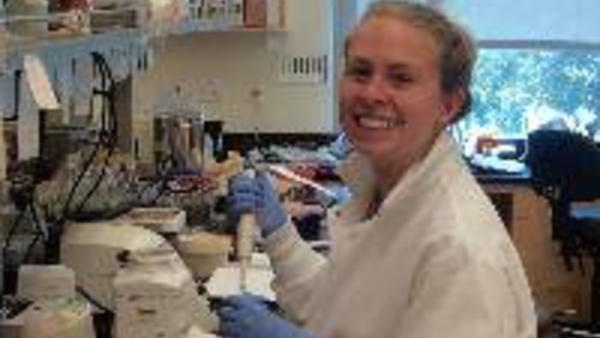
Emily Bossard
Western Washington University
(Borkovich lab)
Neurospora crassa
G-protein signaling is essential to normal growth, sensing, and development in eukaryotes. G-Protein Coupled Receptors (GPCRs) are Guanine-Nucleotide Exchange Factors (GEFs) for Ga subunits that interact with Ga, Gb, and Gg proteins. Guanine Nucleotide Exchange Factors (GEFS) activate the signaling pathway of Ga subunits by instigating the release of GDP and subsequent binding of GTP. RIC8 is a non-GPCR GEF found in animals and filamentous fungi that is essential for the regulation of Ga subunits. Previous research has found that RIC8 interacts with Ga proteins GNA-1 and GNA-3 in Neurospora crassa. RIC8 knockout mutants (Dric8) possess significant defects in sexual and asexual development and growth. Dric8 mutants were also shown to have decreased levels of Ga (GNA-1, GNA-2, GNA-3) and Gb (GNB-1) subunit proteins and shown to regulate GEF activity of GNA-1 and GNA-3. Alignment of N. crassa RIC8 with proteins from animals identified numerous conserved amino acids. Mutation of these residues showed that several were essential for normal interaction with GNA-1 and/or GNA-3 and GEF activity. We are studying the phenotypic effects of 5 ric8 point-mutations in N. crassa. We will quantitate hyphal growth rate, aerial hyphae height and conidiation. We will also assess colony morphology and the development of sexual structures. The effect of ric8 point-mutations on GNA-1 and GNB-1 production will be determined. RIC8 protein levels will be measured using Western blots and the quantity of mRNA will be assessed using Northern blots. This research will help us to further understand the role of RIC8 in Ga regulation in eukaryotic organisms.

McKenzie Pickle
UC Riverside
(Rasmussen lab)
Role of Microtubule Dynamics in Cell Division using Maize tangled-1 Mutant
In maize, tangled1 (tan1) mutants exhibit shorter stature compared to wild-type, rougher leaves, and misplaced cell walls. Timelapse analysis shows that the tan1 mutant has slower division times in metaphase and telophase compared to wild-type. There is no correlation between longer metaphase division times and misoriented divisions, suggesting that mitotic progression does not affect placement of cell wall. Phragmoplast expansion and disassembly is slower in the tan1 mutant, suggesting a role for TANGLED in regulating microtubule disassembly. We are interested in testing if the TANGLED protein alters microtubule dynamics. Another undergraduate in the lab and I will be growing wild-type and mutant plants that express YFP-TUBULIN in taxol (a microtubule stabilizing drug) and propyzamide (a microtubule depolymerizing drug) and assessing growth by measuring root length. My hypothesis is that tan1 mutants have hyperstabilized microtubules so when grown in taxol media the mutant will have proportionally smaller roots compared to wild-type. tan1 mutants grown in low concentrations of propyzamide may have partially complemented root growth. Using live-cell imaging, we will assess phragmoplast dynamics in the tan1 mutant with and without taxol by measuring phragmoplast expansion and disassembly rates. We expect the mutant to be more sensitive to taxol so expansion and disassembly rates will be proportionally slower compared to wild-type at the same drug concentrations. These experiments will help us understand the role of the TANGLED protein in regulating microtubule dynamics in vivo.
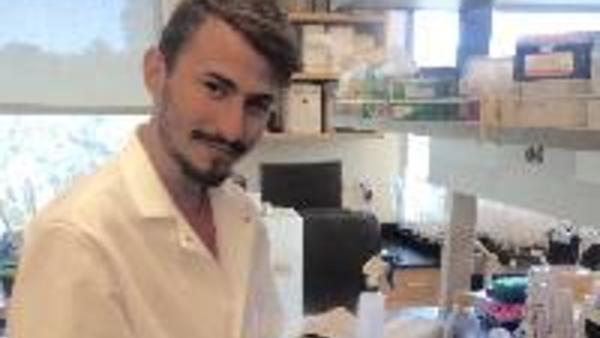
Guillermo David-Valero
Univ. of Puerto Rico-Mayagüez
(Eulgem lab)
“super synthetic elicitor” and a better understanding of the plant immune system
Plants are exposed to different environmental factors that they must cope with to be able to survive in their respective agro/ecosystems. To be able to defend themselves from one of the major threats, phytopathogens, plants have evolved a complex inducible immune system. Phytopathogens typically produce elicitors that can be recognized by plant immune receptors. Elicitors are small molecules or fragments of macromolecules that are specific to certain pathogens or microorganisms. Some of the genes and pathways required for plant immune responses have been studied, but are still poorly understood. Synthetic elicitors are drug-like compounds that can induce plant immune response, but are distinct from natural defense elicitors. Previously, our lab had performed a high-throughput screening of 60,000 diverse organic compounds for defense inducers and identified 114 new synthetic elicitors. This project is focused on the analysis of possible synergistic effects triggered by co-application of some of these compounds. Combinations of different synthetic elicitors applied at varying concentrations will be tested for their efficiency in protecting susceptible wild type Arabidopsis thaliana (Col-0) plants against virulent strains of Hyaloperonospora arabidopsidis (Hpa). Synergism can result from interactions between two or more agents that results in quantitatively greater effects than the sum of the individual effects of each agent. Such synergistic effects may allow for the design of new super synthetic elicitor cocktails containing ultra low doses of bioactive chemicals. In order to gain a better understanding of the genes involved in synthetic elicitor triggered immune response, I am testing different Arabidopsis T-DNA mutants bearing mutations in genes previously found by our lab to be highly expressed after synthetic elicitor treatment. I will test if any of these mutants exhibit enhanced susceptibility against Hpa and possibly other phytopathogens. Taken together, this study can lead us to a super synthetic elicitor that may serve as prototype for new pesticide alternatives avoiding excessive use of toxic pesticides. In addition, we may identify new components of the plant immune system that are important for the bio-activity of synthetic elicitors.

Olenka Graham
Chaffey College
(Kaloshian lab)
Immunity against root-knot nematodes in Arabidopsis thliana and tomato
Plant parasitic nematodes are responsible for $US157 billion in crop losses annually. The Kaloshian lab studies immunity to the root-knot nematodes (RKN, Meloidogyne spp.) which infect a vast number of plant species. Plant immunity to pathogens relies on a two-tiered process: pattern-triggered immunity (PTI) and effector-triggered immunity (ETI). In the past, research on plant immunity against RKN has been centered mainly on ETI. To characterize PTI responses, the Kaloshian lab used mutants of the model plant Arabidopsis thaliana and identified a well-known co-receptor, BAK1, that is required for early RKN perception. To identify the RKN recognition receptor, they performed gene expression analysis with RNAseq in wild-type and mutant bak1 plants, RKN-infected and control, and identified 11 candidate genes. Screening mutants of a subset of these with RKN identified a negative regulator of immunity. This project aims to further investigate these PTI mutants and identify the tomato homolog of this negative regulator to evaluate conservation of its role in immunity. This negative regulator belongs to G-type lectin receptor kinase family with limited information. Therefore, as a first step, we identified the Arabidopsis members of this family. We are now currently investigating their tomato homologs and will use this information to develop constructs for virus-induced gene silencing (VIGS) in tomato to evaluate with RKN. With this research we aim to use negative regulators of immunity to develop broad-spectrum resistance in crops against RKN.
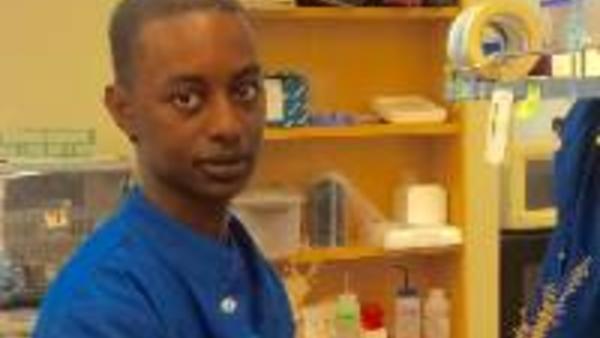
Yonathan Mewail
San Diego Community College
(Reddy lab)
The effect of drought stress on gene expression of the Arabidopsis shoot apical meristem
Water scarcity is a severe environmental problem that affects plant productivity. In 2015, California lost $1.8 billion and over 10,000 jobs due to years of severe drought impacting its agricultural productivity. With losses expected to increase due to climate change, it is important to understand how plants have adapted strategies to tolerate drought stress. While studies have characterized how drought impacts the development of the root, leaf, and plant, how shoot development is affected by drought is still not well understood. The development of the shoot system arises from a set of stem cells located at the center of the shoot apical meristem (SAM) of plants. As these stem cells undergo cell division and get pushed outwards, they begin to undergo differentiation to develop into the leaves, flowers, fruits, and buds. Genetic analysis has revealed a set of pathways involved in stem-cell maintenance, organ differentiation, and flowering, however there is limited information regarding how drought stress affects these pathways in the SAM. We will investigate how drought stress impacts growth patterns and gene expression in specific cell-types from the SAM using next-generation sequencing techniques. By monitoring how gene expression patterns change at a single-cell type resolution in Arabidopsis SAMs upon drought-induced stress, we can identify stress response genes for further characterization, focusing on how these genes are implicated in shoot development during stressful conditions.

Emilie-Katherine Tavernier
Coastal Carolina University
(Nothnagel lab)
Analysis of singly methylated sugars and their biosynthesis in wild type and transgenic tobacco cell walls
This project is focused on the occurrence and biosynthesis of methylated sugars in plant cell walls. Methylated sugars have one or more of the ring hydroxyl groups modified by attachment of an O-methyl ether substituent. Some methylated sugars appear in pectic polysaccharides nearly throughout the plant kingdom, while other methylated sugars are much more common in relictual than in derived plants. This mixed occurrence of methylated sugars presents questions regarding their function and evolutionary significance. Research into methylated sugars is also motivated by their potential importance towards efficiency of biofuel production from cell wall biomass. While several methylated sugars occur in plant cell walls, the 4-O-methyl-glucuronosyl residue is the only such sugar for which the gene encoding the methyltransferase that adds the O-methyl ether is known. Physcomitrella patens, a moss which produces abundant 3-O-methyl-rhamnosyl residues in its arabinogalactan proteins, and Nicotiana tabacum, which is a facile system for transgenic expression of candidate moss methyl transferase genes, are the two model systems in this project. The specific goal is to identify all possible singly methylated sugars within cell walls of the wild type and transgenic tobaccos. Cell wall fractions prepared from leaves have been cleaved by acid catalysis and the resulting monosaccharides derivatized for analysis by gas chromatography-mass spectrometry. Thus far, three methylated sugars have been found in wild type tobacco, with the transgenic tobacco additionally expressing 3-O-methyl-galactosyl residues. The project is being continued with alternative cell wall preparations and alternative derivatization chemistries to assure comprehensive analysis.

Cody Jacobs
Bennington College
(Wheeldon lab)
Enhancing ER membrane production in the yeast Yarrowia lipolytica to increase P450 function and expression for use in biocatalysis
Y. lipolytica is an oleaginous yeast capable of producing vast amounts of intracellular lipids, which is useful as lipids serve as precursors to a number of valuable molecules, such as biofuels, steroids, and dicarboxylic acids. The cytochrome P450 family is a large, highly conserved family of membrane proteins that play a role in the catalysis of a wide variety of compounds, many of which require modification of lipids. The aim of this project is to genetically engineer a strain which is capable of enhanced production of ER-localized proteins; this first requires increasing the size of the endoplasmic reticulum, which can be done by exploiting Y. lipolytica’s natural lipid metabolism capabilities. This should in turn allow for the increased expression of the membrane bound P450s, which can then be used for biocatalysis of many useful molecules. To create a strain capable of increased P450 expression, we will knockout phosphatidic acid phosphatase, PAH1, which has previously been demonstrated to result in increased ER membrane production. We will also induce a constitutive unfolded protein response (UPR) to enhance the ER protein quality control, which is known to improve protein function. The UPR is regulated by the non-canonical splicing of HAC1 mRNA. We will introduce a modified HAC1, which has had this intron removed, under a TEF promoter, which induces constitutive expression, and thus will induce a constitutive UPR. Knockouts and insertions will be produced through use of the CRISPR-Cas9 genome editing tool. ALK2 is a member of the P450 family which is native to Y. lipolytica, and will be used to measure P450 expression in our genetically modified strain. We expect to see enhanced ALK2 and Alk2p expression, as well as Alk2p function as a result of this genome modification. This will be measured by analysis of ALK2 mRNA levels by qtPCR, western blot analysis of Alk2p levels, and assaying activity of Alk2p using a protocol developed by Guengerich et al.
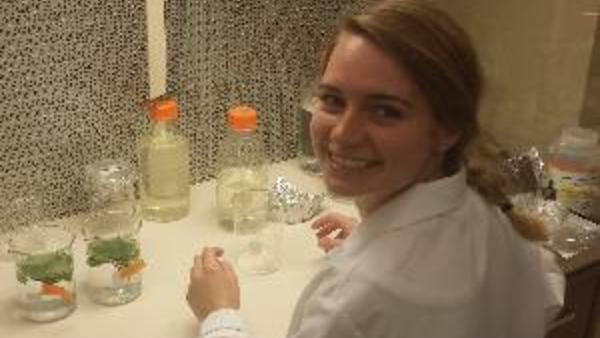
Ashley Henry
Truman State University
(Litt Lab)
Role of FUL1 in desert tobacco and tomato fruit development
The nightshade family contains members that produce both dry fruits, such as the capsules of desert tobacco, and fleshy fruits, such as the edible tomato. The gene FRUITFULL has been discovered in Arabidopsis plants to be involved in the development of their dry fruits. Over time, the FRUITFULL gene underwent a gene duplication to produce 4 derivative genes, FUL1, FUL2, MBP10, and MBP20. FUL1 is the first to be studied in this lab, but eventually we will understand the importance of all four of these genes. The main goal is to knock out FUL1 through CRISPR technology, but first we need to know where FUL1 is expressed. We have sectioned and stained desert tobacco ovaries at multiple developing stages to discover the timing of anthesis, cell division triggered by fertilization, the lignification of cells, and when the cells dry to make a dry fruit. Next, we will extract RNA and sequence the transcriptome on the samples from each of the four developmental stages. Likewise, a fluorescent transcriptional reporter construct will be built to examine FUL1 transcription in tomato through confocal microscopy. Once the construct proves to be successful in the tomato plant, this method will be repeated in the lesser-known desert tobacco. Knowledge of the expression of the FUL1 gene in both tomato and desert tobacco could lead to an understanding of the evolution of dry and fleshy fruit development in the nightshade family.
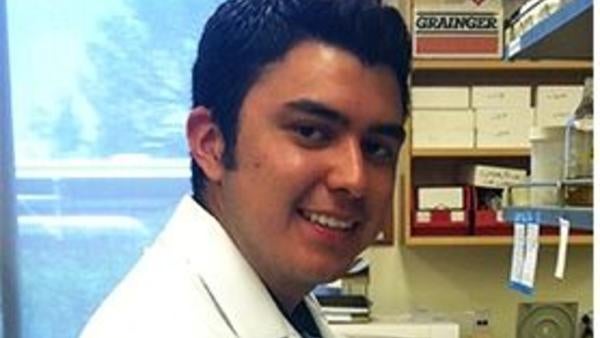
Robert Jimenez
Berkeley City College
(Howard Judelson Lab)
Transporter Localization in Phytophthora infestans
Phytophthora infestans is the pathogen responsible for the Irish potato famine in 1845 (late blight disease). The pathogen has been around since the 1800’s and is still poorly understood. P. infestans affects potato and tomato foliage, causing hundreds of thousands of dollars of crop loss per year. Like some fungi, Phytophthora also make a structure called haustoria. In fungi these structures are used to take nutrients from their host through transmembrane transporters. While this function has never been proven in oomycetes, we hypothesize that P. infestans also targets transmembrane transporters to its haustoria to obtain amino acids from the host. Our main interest is in two specific amino acid transporter genes that are up-regulated highly at the early stages of infection. We are interested in seeing if these transporters localize to haustoria. To study the localization of these transporters we will be looking at where these up-regulated transporter proteins are within the pathogen. Through cloning we will generate plasmids which tag transporter genes with the fluorescent tag tdTomato. We will transform P. infestans zoospores with our plasmids by using electroporation. These transformants will then be examined by confocal microscopy to see where the transporters are localized within the organism. By studying the localization of these transporters, we will gain new knowledge on P. infestans haustoria. Knowing where the amino acid transporters are localized may provide insight into whether they play a role in nutrient uptake. A better understanding of the transporters may lead to more reliable pathogen prevention methods.

Emile Cora Barnes
New College of Florida
(Jaimie Van Norman lab)
Isolation and characterization of the root middle cortex
The middle cortex is a layer of ground tissue found in many angiosperm roots. It is derived from asymmetric cell division of the root endodermis, and by fluorescence microscopy has been shown to express cortex cell-specific reporter transgenes shortly after formation. Therefore, the middle cortex is generally described as another layer of cortex cells, and has received relatively little attention. The Van Norman lab has identified POLARLY LOCALIZED KINASE 1 (PLK1), a transmembrane protein which shows unique localization patterns in the endodermis, middle cortex, and cortex, suggesting that the middle cortex has unique traits which are able to influence localization of PLK1. This project aims to track the formation of the middle cortex of Arabidopsis thaliana roots through the creation of transgenic lines of plants in which each layer of ground tissue is visualized by fluorescent reporter genes. We will also use fluorescence-activated cell sorting (FACS) to isolate middle cortex cells based on dual expression of PLK1 marker genes and cortex cell marker genes. Isolation of middle cortex by FACS will allow RNA sequencing on a large number of cells, giving extensive, and currently unknown, information necessary to form a detailed transcriptional profile and begin to characterize the middle cortex. This molecular-level resolution of the middle cortex will help to elucidate the identity and function of this tissue, as well as identify genes of interest for further research in intercellular signaling and asymmetric cell division and how these processes work to influence cell fate specification through developmental time.

Harry Wedel
Vassar College
(Thomas Eulgem lab)
Hormetic effects triggered by synthetic elicitor BHTC in Arabidopsis thaliana
In a hormetic response, a physical or chemical stimulus that is usually harmful to an organism at high doses produces positive effects at low doses. Through a high-throughput screening, our lab previously identified 114 drug-like compounds that activate plant immune responses. Many of these synthetic elicitors were also found to stimulate hormetic effects in Arabidopsis thaliana (Arabidopsis). The synthetic elicitor BHTC is a particularly strong inducer of hormesis as it triggers robustly enhanced growth of roots at low doses, while suppressing root growth at high doses. Surprisingly, there has not been much work performed regarding the study of hormesis in Arabidopsis, the most effective model system in plants. To further study this effect, wild-type (Col-0) Arabidopsis seedlings will be grown on plates with varying doses of BHTC and the rate of their root growth will be measured. Moreover, this assay will be repeated with known mutants for the purpose of identifying genes required for the hormetic response seen in Arabidopsis. These mutants will include, among others, arx1-3 and slr-1, which are deficient in known auxin-signaling genes. Our lab previously found that the genes responsive to a high dose of BHTC are linked to immunity and differ from those responsive to a low dose of BHTC, which are linked to auxin-related signaling. This suggests a connection between immune responses and auxin signaling in controlling hormesis-associated developmental processes.
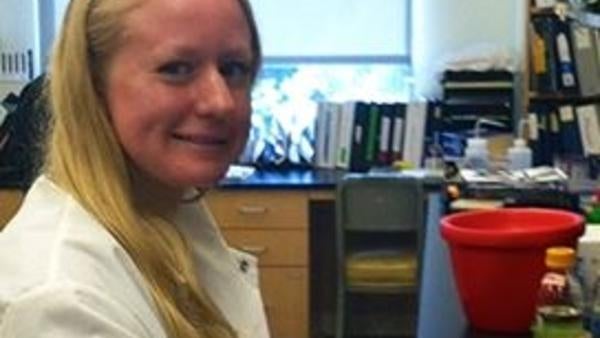
Shannon Ferry
Univ. of Rochester
(Katherine Borkovich lab)
Interaction Studies of GNA-1 with the Arp2/3 Complex Using a Novel Microscopic Method
Neurospora crassa is a non-pathogenic filamentous fungus, used as a model organism in genetic research. N.crassa is an ideal organism for genetic research because of its simple haploid life cycle. These features allows scientists to manipulate and observe all the genotypic combinations that occur when two strains of fungi are crossed. N. crassa has two alternate lifecycles, an asexual “Macro-condiation” and a sexual cycle, connected by the formation of restrictive, multi-nuclear tube structures, called hyphae. Hyphae grows through polar extension. Hyphae can also produce branches that fuse.
The ability of branches of hyphae to fuse to form a heterokaryon will be used in order to determine the interactions and co-localization of the proteins Arp 2/3 and GNA-1. GNA-1 is a Gα subunit, which plays an important role in the G protein-signaling pathway. G proteins are made up of three subunits, Gα, Gβ, and Gɣ. The Gα subunit can activate important pathways in N.crassa. The protein complex Arp2/3 is responsible for the formation of actin branches. Past research, using yeast two hybrid analysis, has shown an interaction between GNA-1 and Arp2/3. This project seeks to confirm this finding with co-immunoprecipitation and microscopic approaches. GNA-1 and Arp2/3 will be tagged with either GFP (green) or RFP (red) in different strains and the strains will then be fused to form a heterokaryon expressing a GFP and RFP-tagged protein. Co-localization of the proteins can be determined by fluorescent microscopy of the cells during growth and development.

Riyan Bittar
UC Riverside
(Hailing Jin lab)
Development of efficient disease management of citrus HLB disease with Small RNAs regulation
Huanglongbing (HLB) is a bacterial pathogen that lives in the phloem of citrus trees and is spread with the assistance of the Asian citrus psyllid. HLB destroys the economic value of citrus trees by rendering the fruits inedible, because of their bitter taste, and causes a serious reduction in fruit yield. Removing infected trees is the major method to stop further spreading of the bacteria and this will rely on early diagnosis of infected trees. HLB is hard to diagnose by symptoms. Small RNAs (sRNA) specifically induced by HLB infection can be used as a more efficient and early diagnosis tool for HLB. Currently miR399 is used to do early diagnosis of infected trees, and lead to the discovery of phosphorus deficiency symptoms seen in HLB infected trees. To identify specific sRNAs response to HLB, and/or other citrus disease pathogens, we constructed sRNA libraries and performed next generation deep sequencing. We characterize a panel of sRNAs that are induced by HLB, from sRNA libraries, to develop a more accurate method for early diagnosis. These specific sRNAs that respond to HLB will give us clues to identify HLB pathogenesis and the master regulator of defense response.

Marie Schmidt
Vassar College
(Linda Walling lab)
The Role of Tomato WHIRLY Proteins in Retrograde Signaling and Plant Defense
Leucyl aminopeptidase-A (LAP-A) is a stress-induced protein found in the Solanaceae, and is involved in late-wound response signaling. It is located in the plastid, however is able to regulate nuclear gene expression through an unknown mechanism. In Arabidopsis thaliana it has been shown that the transcription factor WHY1 is involved in defense response signaling and is capable of localizing in both the chloroplast and the nucleus, indicating that it is a potential retrograde signal in tomato. In this project all WHY genes in tomato will be identified using BLAST-N. WHY1 proteins from tomato will be tagged with CFP and the WHY1-CFP fusions will be transiently expressed in Nicotiana benthamiana. LAP-A-YFP protein fusions will be used as a positive control. The localization of WHY1 proteins pre and post defense hormone treatments, using jasmonic acid and salicylic acid, will be monitored by visualizing fluorescent protein light emissions. This will determine if tomato WHY1 protein is dual-localizing and induced by stress signals. To determine if WHY1 localization is LAP-A dependent, the WHY1-CFP fusion will then be transiently expressed in tomato lines that are LAP-A silenced, LAP-A overexpressed, and wild type. This procedure will be repeated with tomato WHY2 proteins. These experiments will provide a better understanding of LAP-A defense signaling, and this data may be useful in developing tomato lines with increased insect resistance.

Joel A. Velasco
Boise State University
(Julia Bailey-Serres lab)
A Toolkit for Study of Cell-type Specific Gene Expression in Rice
Plant development is exquisitely orchestrated by genetically determined processes that are fine-tuned by environmental cues. This action entails the precise regulation of networks of genes in individual cells over the course of the plant life cycle. To decipher this complex regulation of gene expression we are taking advantage of the TRAP (Translating Ribosome Affinity Purification) technology. This methodology, which was developed in the Bailey-Serres lab for the model plant Arabidopsis thaliana, enables the isolation of ribosomes loaded with mRNA (“the translatome”) within specific cells of a leaf, root or other organs. TRAP facilitates the identification of genes that are dynamically turned on and off as the plant responds to stress or other cues. To move the technology to an important crop species, transgenic rice (Oryza sativa) lines have been produced to express a FLAG-epitope-tagged version of ribosomal protein L18 in specific cell types to allow TRAP. My project aims to determine precisely the genomic location of transgenic DNA in each of these lines. This process involves the use of Next-Gen sequencing of transgene-enriched DNA libraries, obtained with a specialized DNA capture technique. The transgene insertion site information and the expression pattern visualized by microscopy for each line will facilitate the selection of the best transgenic lines for future evaluation of gene expression in specific cell types. These genetic resources will be used to study how development is perturbed by two major environmental threats to US agriculture: droughts and floods.
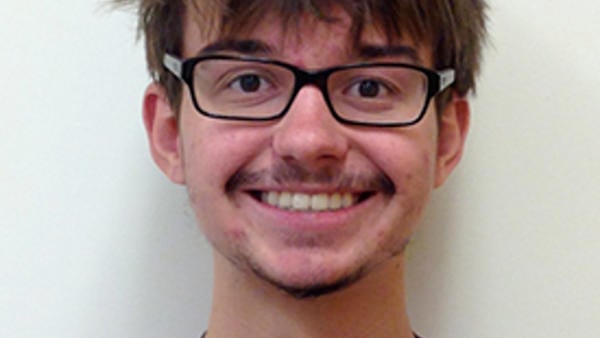
Christopher Hoyt
Harvey Mudd College
(Carolyn Rasmussen lab)
Division Plane Modeling in Maize Cells
TANGLED is a microtubule binding protein that is required for proper division plane orientation. Before cellular division, plants assemble a ring around the cell known as the preprophase band. In properly functioning cells, TANGLED guides the developing cell plate during cytokinesis to the location of the preprophase band. Prior studies with plants demonstrate that these new cell wall has the minimum surface area required to divide the cell given that the two new cells will have equal volumes. However, in tangled mutants, the developing cell wall does not return to the location of the preprophase band, and instead will develop irregular divisions that have neither a minimum surface area nor necessarily equal division of the cell’s volume. This project uses micrographs of tangled mutant cells to create a three dimensional (3-D) model of the cell. Then, using the rules of division, a computer program will identify the minimum surface area required to divide the cell so that the two new cells have an equal volume. Finally, the ideal cell wall placement determined by the computer program will be compared to the actual division site. If they align, it would imply that the tangled phenotype is not caused by a malfunctioning preprophase band and that TANGLED’s function occurs later than preprophase band development in the cellular division cycle. If they do not align, it may suggest that TANGLED directly affects the creation and placement of the preprophase band, indicating that TANGLED leads multiple roles within the cell.

Patrick Gallagher
The College of New Jersey
(Nothnagel Lab)
Plant cell walls and plasma membranes contain arabinogalactan-proteins (AGPs), a class of glycoproteins which are thought to function in cell division, growth, and other aspects of plant development. The AGPs of the moss Physcomitrella patens contain the unusual 3-O-methyl-L-rhamnosyl (3-O-Me-Rha) residue, which occurs in cell walls of relictual plants up to and including the four phyla of gymnosperms but does not occur in angiosperms, the most derived plants. These methylated sugar residues are of interest because their extra carbon atom could be relevant toward more efficient production of biofuels from cell wall biomass. This project has the goal of identifying which gene in Physcomitrella patens encodes the methyltransferase enzyme that generates 3-O-Me-Rha. Using bioinformatics, five likely gene candidates in moss have been selected, and these genes are being transformed into transgenic tobacco plants. The immediate aim for this summer is to test the transgenic tobacco tissue for the presence of 3-O-Me-Rha. Wild-type tobacco produces AGPs containing Rha residues but no 3-O-Me-Rha residues. The hypothesis is that if one of the five candidate genes does encode the rhamnosyl-3-O-methyltransferase in the moss, then the transgenic tobacco expressing this moss gene will be able to synthesize AGPs containing 3-O-Me-Rha.

Thomas Bekman
New College of Florida
(Borkovich Lab)
Neurospora crassa is an ideal model organism for studying eukaryotic cellular processes: it is non-pathogenic, multinucleate and easily cultured. It shares many homologous genes with yeast, plants, and humans. Previously, more than 200 knockout mutants for transcription factor genes were created in a high throughput project. Our goal is to identify the role of these transcription factors by studying the phenotypic effects due to their absence. The knockouts were produced by replacing the transcription factor gene with a hygomycin resistance cassette. The mutant was then cultured on media with hygomycin. Assuming that the proper mutant was generated, proper growth would have occurred; otherwise the antibiotic (hygomycin) would have inhibited growth. We observed defects in the sexual and asexual cycle to determine their correlation with the absence of a transcription factor. The phenotypes characterized included linear growth rate of basal hyphae, height of aerial hyphae, asexual sporulation (conidiation), female fertility and general morphology. Furthermore, we are now testing various progeny of mutants that were previously only available as heterokaryons with both mutant and wild type nuclei. Heterokaryons were purified to homokaryons by crossing with wild type N. crassa and then culturing the progeny on hygomycin medium. If the knockout strain could not be purified as a homokaryon, it is defined as an inviable mutant, and thus the gene removed is essential to survival. Cataloguing of and correlation of these assays on the above phenotypic categories will help elucidate the role transcription factors play in growth and development.
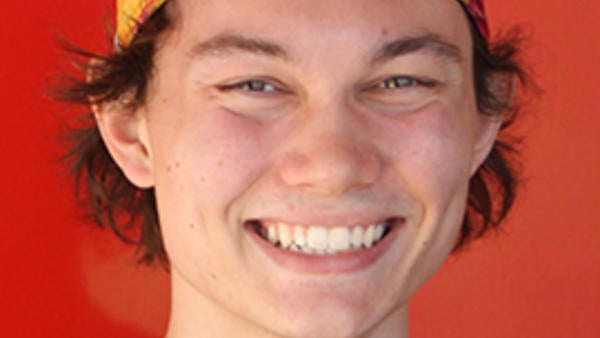
Spencer Swansen
Seattle Pacific University
(Stajich Lab)
A common method of competing for resources involves inhibiting the growth of closely located competitors. This study is a continued exploration of inhibitory growth interactions between fungi. The chytrid fungus Homolaphlyctis polyrhiza has been shown to inhibit growth in the filamentous fungi and model organism Neurospora crassa. This interaction has not been observed between N. crassa
H. polyrhiza has been previously explored along with traits of resistance to cold, heat and protease existing in the compound exuded by H. polyrhiza. The genome of H. polyrhiza was previously sequenced and this information was used to identify potential gene products involved in the production of this unique secondary metabolite. Our work this summer involves further research on the range of fungi inhibited by H. polyrhiza and the properties of the exudate, in addition to continued sequence analysis. I personally maintained different fungal cultures, which I examined with different microscopes to detail inhibition, and performed web based sequence analysis to help in the process of searching for genetic secondary metabolite information.

Katie Orban
Loyola Marymount University
(Springer Lab)
One of the challenges humanity currently faces is an exponentially increasing population and a projected food shortage. One mechanism to increase crop yields in order to feed this growing population may be to develop crops that can be grown at high density. This may be achieved by manipulating crops to have a more vertical architecture, by decreasing leaf angle. LATERAL ORGAN BOUNDARIES (LOB) is a plant-specific transcription factor in Arabidopsis thaliana that functions to define organ boundaries (areas between organs) by limiting the accumulation of brassinosteroids (BR), a growth-promoting hormone. LOB also regulates phototropic responses to blue light (the main wavelength used for photosynthesis). Pisum sativum (pea) is an important agronomic plant and is closely related to many other agronomically important legume crops. In pea, the LOB ortholog Apulvinic (Apu) functions to specify the pulvinus, a motor organ located at the base of the leaf that controls nighttime folding of leaves. Because LOB defines organ boundaries by affecting BR levels, it is possible that Apu functions in the same way. Similarly, if the blue light response function of LOB is conserved in pea, then altered Apu expression may result in peas that have altered phototropism and possibly leaf angle, which could allow for planting at an increased density. This function may also be conserved in related legumes such as soybean. To test the hypothesis that Apu regulates pulvinus formation and leaf angle by affecting BR levels, wild-type and apu-1 mutant peas will be grown under two conditions: treated with the BR biosynthesis inhibitor propiconazole and a control treatment. The pulvinus region will be examined across genotypes and growth conditions via microscopy, and phenotypes will be documented. Analysis of the resulting data may determine the specific role of BR in pulvinus development in pea.
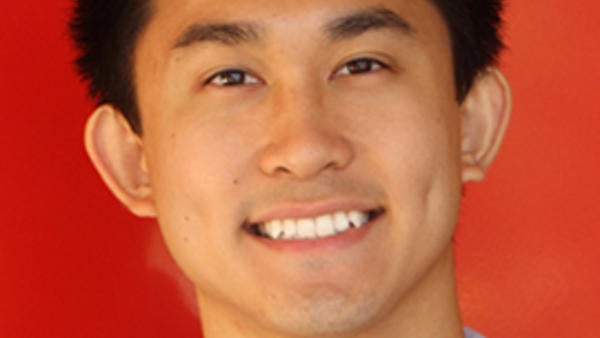
Roland Truong
East Los Angeles College
(Larsen Lab)
Aluminum (Al) has been shown to trigger a DNA damage detection pathway involving ATR, ALT2 and SOG1. These factors have been found to shut down plant growth in the presence of Al and promote repair of the plant. The loss of function of any of these factors results in Altolerance, which means that even though Al is being internalized, plant growth fails to arrest. While more investigation is necessary to understand what is the true nature of the Al-dependent DNA damage, the detection mechanisms for the apparent damage will continue to be defined by research done in the Larsen Lab. I will investigate how plant cells are programmed to repair the perceived Al-dependent DNA damage. Preliminary evidence suggests that Al inhibits repair by homologous recombination (HR). By utilizing transgenic Arabidopsis containing a GUS reporter construct, visualization of HR can be assessed. Experimentation includes determining the proper concentration of bleocin to grow Arabidopsis in, treating those seeds with increasing Al concentration, and histochemical staining with X-gluc. We hypothesize that bleocin induced damage normally repaired through HR, should show a reduction in GUS accumulation in step with increasing concentrations of Al, indicating an Al-dependent inhibition of repair via HR.
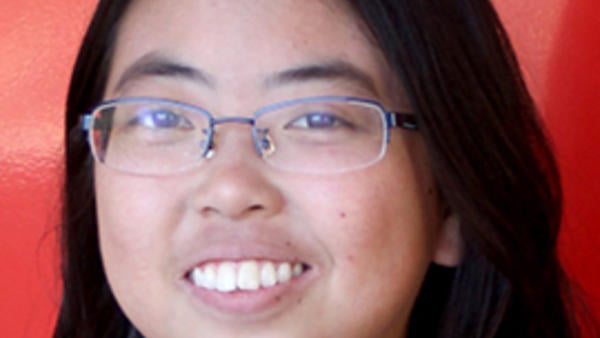
Stephanie Cheng
Mt. San Antonio College
(Chen Lab)
MicroRNAs (miRNAs) are short RNAs of 20-24 nucleotides found in all plants and animals, which have emerged as sequence-specific regulators of gene expression. Although miRNAs impact numerous biological processes in eukaryotes, many key players in miRNA pathways are still unknown. Therefore, to find new components work in miRNA pathways, my project in Chen lab is to identify additional factors involved in miRNA biogenesis or activity, using a forward genetics approach. We utilize a transgenic line of artificial microRNA, amiR-CTR1, as the background to screen potential candidates that work in miRNA pathways. Because the amiR-CTR1 was designed to target the CTR1 gene and employ the endogenous miRNA machinery for its biogenesis and activity, the amiR-CTR1 line mimics the ctr1 mutant. When the machinery for miRNA biogenesis or activity is disrupted, the amiR-CTR1 line cannot mimic ctr1 mutant, but exhibits the wild type phenotype. After using EMS mutagenesis to create random mutations, only plants with a wild-type phenotype are chosen, as they would most likely have the mutation in microRNA biogenesis or activity. Besides screening for potential miRNA pathway mutants, I will also characterize the existing mutants by Northern Blot, q-PCR, and Western Blot in order to understand the mutations in miRNA biogenesis or activity in the selected mutants.
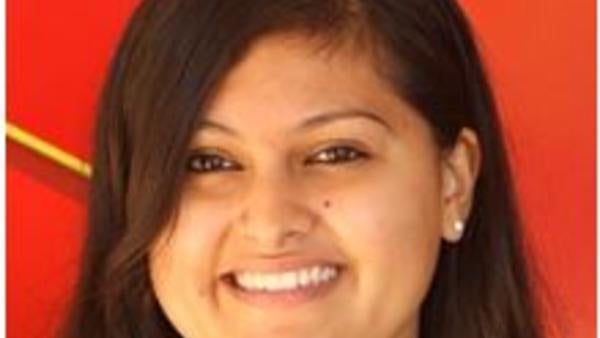
Jenniffer Flores
Univ. of Texas at San Antonio
(Bailey-Serres Lab)
To regulate growth and development, in addition to biotic and abiotic stress, plants monitor and integrate environmental signals to regulate metabolism and energy homeostasis. Flooding and complete submergence of plants is an environmental stress that contributes to large agricultural losses. During flooding events, decrease in cellular oxygen (hypoxia) and reduce light levels affect energy production within the plants. To survive flooding or submergence stress, some plants, like Arabidopsis thaliana enter a quiescent state in which their growth is inhibited to restrict energy usage and allow for the plant to survive until the flooding events subsides. In this research project, TARGET OF RAPAMYCIN (TOR) signaling, a process that positively regulates growth, will be investigated in various Arabidopsis Thaliana mutant lines with various T-DNA insertions that lead to over and under-expression of TOR. These lines will be investigated using techniques such as qPCR and Western immunoblot to determine if TOR will also be performed to evaluate the downstream processes related to TOR. It is important to fully understand the functionality TOR expression and TOR signaling is affected. Hypoxia and submergence tolerance assays will also be performed to determine if survival is affected in the TOR mutant lines, and if TOR signaling contributes to low oxygen responses. Gaining a greater understanding of the role of TOR in low oxygen stress can aid in the production of more tolerant crops, which can lead to increased crop yield and prevent crop shortages due to environmental variation.

Kebba Mbye
Univ. of North Carolina
(Girke Lab)
Next-generation sequencing technologies allow present high-throughput genome profiling approaches to generate massive amounts of data that are frequently difficult and time-consuming to decode. Gene sets are groups of genes that share common chromosomal location, biological function(s), or regulation processes. Gene set enrichment tests are used to determine over- and/or under-representented pathways and biological processes in a gene set of interest. These processes help facilitate the interpretation of gene sets and enrichment of genes, however, it is often problematic and time inefficient to combine the results from multiple enrichment tests. Through the development of a R-based analysis environment for performing multiple enrichment tests across any number of genes, this project aims to develop a single program that will execute these functions in an efficient, reproducible, and user-friendly manner.

Andy Chen
Hamilton College
(Gonehal Lab)
The model plant Arabidopsis thaliana expresses transcription factor (TF)-WUSCHEL (WUS) differentially throughout its shoot apical meristem (SAM), where the transcription factor migrates through multiple cell layers and regulates the expression of other stem-cell differentiation promoting transcription factors. Furthermore, WUS regulates the expression of the Clavata3 (CLV3) gene, its own negative regulatory peptide, which is thought to trigger a signal cascade that represses WUS expression through a poorly understood mechanism. Finally, new data suggests that WUS can be both a CLV3 repressor and activator; WUS concentration determines which function of regulation occurs. To further explore this interactive system, a novel approach will be employed combining a ubiquitously expressed RNA-binding protein and an inserted RNA binding sequence in the CLV3 gene, resulting in a powerful reporter system capable of visualizing the mRNA transcript in vivo. This technique employs the MS2 bacteriophage coat protein (MS2 CP) system, which exhibits high affinity for specific RNA stem-loop sequences (MS2 SL). GFP-labeling and NLS-tagging of the binding protein and selective insertion of the stem-loop sequence into the CLV3 gene allows for fluorescence- and confocal-microscopy visualization of the transcript and its intracellular interactions. Quantification of transcript dynamics further our understanding of the WUS-CLV3 cyclical feedback system and elucidate plant transcriptional control mechanisms. Insight into the interactions of the Arabidopsis WUS-CLV3 system may yield important information about as yet unknown processes of transcriptional regulation in Arabidopsis with possible implications in other organisms.

Max Baymiller
New Mexico Institute of Mining & Technology
(Judelson Lab)
The oomycetes are an evolutionarily distinct group of organisms often confused with fungi because of their filamentous growth habits and frequent saprophytic tendencies. The most well-studied oomycete is the potato and tomato pathogen Phytophthora infestans, which is more commonly known as late blight. A prolific and highly destructive pathogen, P. infestans is known to have caused the infamous Irish Potato Famine and today is responsible for billions of dollars of crop losses each year. We are studying the infection strategies of P. infestans and other oomycete pathogens such as Pythium with the long-term goal of mitigating disease through a better understanding of their fundamental biology. In this summer’s project, we will investigate how oomycete pathogens obtain the energy and nutrients required for growth and infection. To answer this, the expression of metabolic genes from species of Phytophthora and Pythium that infect potato will be compared. Total RNA will be extracted from infected tubers at several stages of disease, and quantitative reverse transcription-PCR used to assess the relative abundance of various metabolic gene transcripts. These data will provide insights into the differences between the metabolic strategies of the pathogens. With this improved knowledge of pathogen metabolism will come the ability to formulate more effective mitigation strategies for devastating diseases such as late blight.

Alyssa Carpenter
East Stroudsburg University
(Ng Lab)
Bemisia tabaci, more commonly known as whiteflies, are a common invasive insect species. The pests act as a vector passing detrimental viruses to plants through their mouthparts. The focus of this experiment was on whitefly transmission in the genus Crinivirus. Lettuce infectious yellow virus (LIYV) is a common plant pathogen and is transmitted by B. tabaci. The virions are retained in the whitefly’s anterior foregut, and are able to be transmitted for days after the initial attainment. Retaining the virion in the anterior foregut showed reason for causation in the transmission of LIYV from vector to plant. Virions are attained through whitefly ingestion, are retained in the vector’s anterior foregut at specific binding sites, and then spread to another plant. Through further analysis, it was discovered that a minor coat protein (CPm) of lettuce infectious yellow virus facilitated virion preservation and transmission. Therefore, there must be a factor which mediates the switch from virion retaining to virion transmission. For this experiment, pH was examined to be the mediating factor. The pH of phloem sap is typically around 8; the mouthparts of a whitefly have a typical pH of 9. Through artificial membrane feeding cages, virion retention was tested at pH 4, pH 7.4, and pH 9. In previous experiments, LIYV was retained in all but pH 7.4 through examination by reverse transcription PCR analysis. Throughout this program, I will be further investigating pH’s effect on virion retention, as well as protein factors which aid in virion retention and transmission.

Katherine Guthrie
Northwest Missouri State University
(Walling Lab)
Leucine aminopeptidase A (Lap A) accumulates in the chloroplast stroma. It creates a signal that moves to the nucleus to up-regulate the production of proteinase inhibitors and polyphenol oxidases and down-regulate another set of genes. This mode of regulation (chloroplast to nucleus) is called retrograde signaling. Recently, transcription factors were found to move from the chloroplast to the nucleus to control defense genes. These proteins have nuclear localization signals (NLS) and transit peptides suggesting dual localization. This project will identify transcription factors that may be involved in LAP-A’s retrograde signaling. In tomato, WRKY transcription factor 5 (WRKY5) has a NLS and transit peptide and its residence in the plastid stroma was confirmed by proteomics. Given the role of the Arabidopsis homolog of SIWRKY5 in defense signaling, SIWRKY5 is likely a mobile signal. The goal is to monitor the movement of both LAP-A and WRKY5 after wounding. To this end, the Lap A and WRKY5 cDNAs will be amplified using gene specific primers and PCR and inserted into Gateway vectors, pEarleyGate 101 and 102 to make yellow and cyan fluorescent fusion proteins, respectively. These vectors will be delivered into leaves using agroinfiltration. The location of the fusion proteins after wounding will be determined using confocal microscopy. If the protein moves, its role in retrograde signaling of these proteins will be further investigated. This knowledge will be important in the creation of insect resistant tomato crops and prevention of crop loss.

Quinton Brail
Cleveland State University
(Bailey-Serres Lab)
RNA binding proteins (RBPs) are involved in complex post transcriptional regulation pathways, such as pre-mRNA processing and mRNA translation. RBPs are classified in different families based on their RNA binding domains. In Arabidopsis the function of the majority of RBPs in not known or is under characterized. The Julia Bailey-Serres lab showed for two RBPs these RBPs function in stress survival to hypoxia and drought. This study is focused on a Puf family protein (APUM), namely APUM4. Knowledge about APUM4 and its potential role in stress resistance could shed a light on how plants adapt their post-transcriptional gene regulation mechanisms in response to stress. This information could be used to design ways to better prepare crops to withstand challenging growth conditions.
Two mutant alleles in APUM4 will be screened for stress resistance compared to wild type using growth mediums with various stressors such as high salt and sugar concentrations, exogenous hormone application, or hypoxia treatment. In addition, several double mutants in APUM4 with close APUM4 homologs (APUM1 to 3, 5 and 6) tested under the same conditions as the APUM4 single mutant alleles. APUM4 expression levels will be analyzed in at least the single mutants using qRT-PCR to determine whether the stress resistance is due to APUM4 down or up regulation in the mutants. APUM4 localization will be studied through confocal microscopy in the 35S:APUM4-mCherry-HA lines. APUM4 abundance will be analyzed in T2 transgenic 35S:APUM4-FLAG and 35S:APUM4-mCherry-HA lines through western blotting. APUM4-mRNA complexes will be isolated using an immunopurification approach.

Lauren Kivlen
Riverside Community College
(Nothnagel Lab)
Arabinogalactan-proteins (AGPs) are a class of heavily glycosylated macromolecules found within the plant cell wall and plasma membrane. These proteins function in several aspects of plant growth and development such as the control of cell proliferation, expansion and programmed cell death. AGPs produced by the moss Physcomitrella patens structurally resemble those found in higher plants, however, they contain unusual, methylated, 3-O-methyl-L- rhamnosyl (3-O-Me-Rha) residues. While the production of 3-O-Me-Rha is conserved in mosses, lycophytes, pteridophytes and gymnosperms, it is not found in angiosperm AGPs or polysaccharides. Moreover, the presence of an additional oxidizable carbon in methylated sugars such as 3-O-Me-Rha makes it relevant to the production of biofuels. The current goal of the Nothnagel lab is to identify the gene that encodes the methyltransferase responsible for the generation of 3-O-Me-Rha. Identification of this gene may lead to the characterization of other methyltransferases and their possible utility towards the production of biofuels. Currently, the assessment of tissues gathered from tobacco plants that have been engineered to express the Physcomitrella KO9 candidate methyltransferase gene is underway. Young leaves from these plants were previously examined and appeared to exhibit a low abundance of 3-O-Me-Rha. The focus of my research is to measure the expression of 3-O-Me-Rha in the older leaves, stems, flowers and roots of these plants using gas chromatography-mass spectrometry. My objectives are to confirm the presence of 3-O-Me-Rha in these transgenic plants and determine its abundance in these tissues as compared to young leaves.

Galen Rask
Swarthmore College
(Springer Lab)
The human population is expected to reach 9 billion individuals by the year 2050. In order to feed the increasing population, the amount of food produced by crops such as rice (Oryza sativa) must increase. In rice, the plant hormone brassinosteroid (BR), controls plant height and leaf angle. BR-deficient rice plants have a dwarfed phenotype with decreased fertility, but also have a more upright stature than wild type. Prior research has noted that more upright leaf growth enables sunlight to penetrate to the lower leaves, increasing photosynthetic efficiency, as well as enabling crops to be planted more densely, increasing yield from a given area (Divi et al., 2009). The Springer lab has created a transgenic rice line by using an Arabidopsis promoter (pATLOB) that has been found to drive expression in the lamina joint of the rice leaf, fused to the Arabidopsis BAS1, a gene that inactivates BRs. This is expected to result in plants with more erect leaves and no other changes in plant architecture. Currently, we are in the process of creating true breeding lines. I will be working to characterize the severity of leaf angle alterations and will document other possible phenotypic effects in the transgenic plants. I am taking measurements of plants and performing DNA extraction and PCR in order to determine if the DNA insertion has become homozygous and a true breeding line has been created. I will also compare the measurements of each lineage to ensure that the T-DNA insertion has not had a negative impact upon plant growth.
References:
Divi, Uday K., and Priti Krishna. “Brassinosteroid: a biotechnological target for enhancing crop yield and stress tolerance.” New Biotechnology (2009), 26: 131-136.

Seth Flanders
Whitworth University
(Roper Lab)
Pantoea stewartii subsp. stewartii. P.stewartii causes wilting and death of its corn host by primarily colonizing and obstructing the xylem tissue. As the bacteria become established in the plant they produce large amounts of an exopolysaccharide matrix called stewartan. The bacteria form biofilms and it is these matrix-encased biofilms that allow successful colonization of the plant. Plants have many defense mechanisms to ward off and kill pathogens, including production of reactive oxygen species (ROS), such as hydrogen peroxide. ROS are also present in plant tissue as byproducts of normal plant development, such as xylem lignification. We hypothesize that one mechanism that P.stewartii utilizes to protect itself from these deleterious ROS is through the production of a protective EPS layer. Furthermore, we have evidence that EPS production is regulated, in part, by OxyR. OxyR is a transcription factor that regulates gene expression in response to hydrogen peroxide. We hypothesize that P. stewartii regulates expression of stewartan EPS production, in part, through sensing external oxidative stress via OxyR. We are testing this through the use of a fluorescent reporter (GFP) construct to monitor expression of EPS biosynthetic genes in response to ROS in the presence or absence of OxyR. We are also creating a knockout mutant in a known regulator of EPS production to determine the hierarchy of regulation that leads to the production of the protective EPS matrix and biofilm formation. This will aid future scientific endeavors in understanding bacterial survival mechanisms and gene regulation during plant-pathogen interactions.

Matthew Holmes
Haverford College
(Reddy Lab)
The stability of cell identity within the plant stem cell niche is a result of hormone and protein interactions within the shoot apical meristem. WUSCHEL, a symplastic transcription factor protein, forms a gradient within this region that may play a significant role in establishing cell identities. WUSCHEL is synthesized within the rib meristem – a region consisting of the shoot apical meristem’s central corpus. An interesting feature of WUSCHEL is its feedback loop with another protein, CLAVATA3. These two proteins play a role in meristem structure regulation. WUSCHEL also forms a gradient that tapers off towards the SAM epidermis. This gradient may, in part, determine cell identity within the meristem. Why does WUSCHEL form this gradient, though? Previous research has indicated that, in Arabdopsis thaliana, WUSCHEL is modified and regulated by the signaling pathway of cytokinin – a hormone produced in the central zone of the apical meristem. I am seeking to understand how the cytokinin pathway interacts and alters WUSCHEL protein stability, and affects the gradient. I will be using an array of biochemical techniques (such as using dexamethasone induced two component systems to change cytokinin distribution) within the context of genetic approaches to study various Arabidopsis thaliana constructs. Primarily, I will be observing these constructs with fluorescent confocal microscopy to observe cytokinin level impacts on WUSCHEL movement.

Sarah (Luna) Dietrich
Warren Wilson College
(Borkovich Lab)
Neurospora crassa is an ideal model organism for studying human biology and cellular processes. It is a non-pathogenic eukaryote that is easy to culture and is more closely related to mammals than plants or yeasts. We are studying roughly 200 transcription factor mutants previously generated by a high throughput knockout project. In this study, we are specifically looking for defects in the sexual cycle and major asexual cycle. We are performing phenotypic characterizations of all uncharacterized transcription factor mutants available, testing for defects in linear growth of hyphae, aerial growth of hyphae, conidiation, female fertility and general morphology. Additionally, we are picking and testing homokaryon progeny of mutants which were previously only available as heterokaryons. For these strains we will phenotype newly obtained homokaryons and report those which are unable to be purified to homokaryons as inviable mutants, indicating the knocked out transcription factor is an essential gene. In this way we can determine the roles of every transcription factor within Neurospora’sgenome.

Mikayla Kravetz
Wells College
(Ma Lab)
A bacterial effector is a protein that a pathogenic bacterium injects into a host cell in order to cause disease. The HopZ1 effectors are important virulence factors for the plant pathogenic bacterium Pseudomonas syringae, which has a variety of plant hosts. HopZ1 effectors are hypothesized to be acetyl-transferases, disrupting the activity of various targets in the host cell via a “ping-pong” mechanism of picking up an acetyl group through autoacetylation and then transferring it to a target molecule. HopZ1 has two functional forms. The co-evolutionary arms race between pathogen and host has resulted in plants recognizing the more ancestral HopZ1a effector, leading to an immune response called hyperactive resistance (HR) wherein cell death occurs in the infected tissue. However, the HopZ1b effector, form of HopZ1 that appears to have evolved more recently, does not trigger this response. The researchers in Dr. Ma’s lab are trying to determine which of the differences between the sequences of the two proteins are most significant to the biological functions of the effectors in causing disease and suppressing plant immune response.
For this project, I will be generating single-point mutations in different potential autoacetylation sites of HopZ1a gene, changing lysine, serine and threonine to their corresponding amino acid in HopZ1b. These single point mutants will be used together with other chimeric constructs, combinations of intact regions of each protein, to test the potential biological function of these amino acids and sequences to HopZ1 function.

Jesus Banderas
Cuyamaca College
(Eulgem Lab)
Sixty thousand different molecules were screened using a high throughput screening system designed to find molecules that induce CaBP22-333promoter-mediated reporter gene expression in transgenic Arabidopsisseedlings. 114 chemicals were identified from this process. Thirty of these chemicals have been grouped together, based on their molecular structure, and labeled as Phenylimino Methyl Phenols (PMPs). Eight of these PMPs have been chosen for further study. Two week old Arabidopsis thalianaplants, both wild type colo-0 and Arabidopsis defense mutants, will be treated with each chemical twenty four hours prior to being infected with Hyaloperonospora arabidopsidis (Hpa). By counting the spores present at seven days post inoculation, the chemical’s effectiveness at increasing the plants’ resistance to Hpa will be determined. As a second part of the experiment, tissue samples from plants will be collected twenty four hours after chemical treatment and used for RNA extraction. The integrity and yield of the RNAs will be analyzed and reverse transcription PCR will be performed. This will show the chemicals ability to induce expression of plant defense gene markers. Overall these experiments will help to understand the each chemical’s mode of action and the hierarchal level at which it interferes with the plant immune pathway. This project will hopefully yield chemicals that can be used as pesticides that will be less harmful to the environment.

Andrea Krueger
Univ. of Wisconsin-Stout
(Judelson Lab)
Phytophthora infestans is a plant pathogen which causes late blight mainly in potato and tomato. The Judelson laboratory is studying different aspects of development in this pathogen. Transcription factors like homeo domain and MADS-box proteins are responsible for the expression of targeted developmental genes in many species. I have used bioinformatics analysis to identify possible homeo proteins in P. infestans and will silence them via RNA interference-based constructs. The process includes primer design, PCR amplification, gel electrophoresis, and molecular cloning in plasmids leading to bacterial and oomycete transformation. The effect of silencing will then be observed at all life stages of the pathogen to evaluate the developmental functions of the proteins. These stages include hyphae, spores, zoospores, germinated cysts, and cleaving sporangia. This study will lead to further understanding of the roles of these proteins in growth, development, and pathogenesis.

Janel Case
Alan Hancock College
(Walling Lab)
Plants have many plant defense hormones and one of which is salicylic acid (SA). Upon attack by pathogen or insects, plants respond with an increase in salicylic acid. An increase in SA response may lead to the triggering systemic acquired resistance (SAR) in the plant immune response. SAR is a sustained defense response to pathogen or insect at remote sites after local infection of plants. SAR increases the plant’s defenses against future infection and aids in the recovery process. SAR can be passed on genetically from one generation to the next generation. Using Arabidopsis plants, the goal is to find out if whiteflies, a common agricultural pest and an inducer of SA-regulated defenses can pass on SAR from previous generation to the next resulting in transgenerational SAR responses. Arabidopsis wild-type Columbia plants will be infested with whiteflies and seeds will be collected from these plants. Concurrently, wild-type Columbia control plants without whitefly infestation will be carried out. With the seeds collected, the first generation of plants will be assessed for transgenerational SAR responses by two procedures. Plants will be grown and challenged with PstDC3000 bacteria and measured for the presence of transgeneration SAR between control non-infested plants and whitefly infested plants. The first generation of plants acquired from seeds of non-infested and whitefly infested plants will be challenged with whiteflies again. The ability of the whitefly to infest this first generation of plants between non-infested and whitefly infested plants will be compared. If transgenerational SAR is triggered by whiteflies and passed on to following generations, there would be an increase in resistances with successive generations. This knowledge can be utilized in help farmers create more whitefly resistant plants and prevent loss of crop due to whiteflies.

Alicia Vazquez
CSU Channel Islands
(Larsen Lab)
The overall purpose of this research project is to establish a strong foundation from the data collected to aid in a better understanding of the biochemical Auxin biosynthesis pathway in Arabidopsis thaliana. Arabidopsis Col-0 wild type will be exposed to our chemical in different amounts, the model concentration and reaction Arabidopsis Col-0 wild type has to our chemical will allow us to determine the function our chemical has in the Auxin biosynthesis pathway. In addition to including our chemical to the media, one set was exposed to silver while the other was exposed to ethylene. The purpose of exposing the Arabidopsis Col-0 wild type to both silver and ethylene was to see if our chemical is best active in the presence or absence of ethylene. It is predicted that in the presence of our chemical, the roots of the Arabidopsis Col-0 wild type will grow upwards rather than in the normal downwards direction. Root growth will be monitored by planting the seeds in the media in a vertical fashion.

Carolyn Meyers
Victor Valley Community College
(Chen Lab)
The AMP1 gene is very important in plant growth and development. Recent study in our lab identifies AMP1 as a new player in the plant miRNA pathway that facilitates miRNA-mediated translation inhibition of target mRNAs. However, the specific role of the AMP1 protein in translation inhibition remains unclear. Therefore, my project in the Chen lab is to find proteins that interact with AMP1. Since AMP1 is an integral ER membrane protein, we apply a membrane-based protein complementary assay in yeast called the split ubiquitin system to look for its interacting proteins. In this system, we fuse C-terminal ubiquitin to AMP1 and co-express it with Arabidopsis library proteins fused with N-terminal ubiquitin. The N-terminal and C-terminal ubiquitin can find each other when AMP1 interacts with one of the library proteins. The re-assembled ubiquitin can be recognized and cleaved by an ubiquitin specific binding protease, then lead to the release of an artificial transcription factor. The released transcription factor goes into the nucleus where it starts to transcribe the reporter genes. We aim to screen through the Arabidopsis cDNA library in yeast to find the interacting partners of AMP1 and further confirm their interaction in plants by BiFC and Co-IP assays.
Dualsystems Biotech AG. (2010). DUALmembrane starter kits User Manual. 1-58.
Igor Staglijar, Chantal Korostensky, Nils Johnsson, and Stephan Te Heesen. (1998). A genetic system based on split- ubiquitin for the analysis of interactions between membrane proteins in vivo. Genetics. 95. 5187-5192.
Shengben Li, Lin Liu,Xiaohong Zhuang, Yu Yu, Xigang Liu, Xia Cui, Lijuan Ji, Zhiqiang Pan, Xiaofeng Cao, Beixin Mo, Fuchun Zhang, Natasha Raikhel, Liwen Jiang, and Xuemei Chen. (2013). MicroRNAs Inhibit the Translation of Target mRNAs on the Endoplasmic Reticulum in Arabadopsis. Cell. 153. 562-574.

Kyle DeHart
University of Pittsburgh
(Roper Lab)
The Gram-negative bacterium Pantoea stewartii subsp. stewartii is an important pathogen, which infects sweet corn and maize resulting in the disease, Stewart’s wilt. It induces disease by colonizing the xylem vessels of seedlings where it aggregates into biofilms. The formation of these biofilms, a crucial component of virulence, obstruct water flow leading to wilting and plant death. When pathogens infect plants they must overcome the host defense response, which includes the production of toxic reactive oxygen species (NO, H2O2). OxyR and SoxR are both conserved bacterial transcription factors that play a role in recognizing this redox stress and mitigating it. It has been demonstrated that these oxidative stress response proteins also have a role in initial surface-cell attachment and biofilm formation. This project will continue this investigation by screening a mutant for the soxR gene(delta-soxR) to determine whether this protein also plays a role in bacterial attachment. A crystal violet staining procedure in a high throughput 96 well plate format will be used to quantify levels of attachment compared to wild-type and delta-oxyR. Furthermore, an OxyR binding domain exists upstream of rtx, a gene believed to function in bacterial adhesion based on sequence homology to other adhesion expressing genes. Using gateway recombinational cloning, we will fuse the rtx domain to a fluorescent reporter protein in the pRH009 plasmid and will then retransform it back into P. stewartii with the goal of conducting protein localization studies. The results will provide insight into P. stewartii biofilm formation which could serve useful in designing target specific chemicals that will render xylem-dwelling bacteria non-virulent.

Erin Sternburg
CSU Long Beach
(Chen Lab)
Micro-RNAs (miRNA) are RNA strands approximately 20-24 nucleotides in length that act as regulators in many eukaryotic processes. miRNAs exhibit complementary base pairing to mRNAs, allowing them to bind and repress translation. This repression has been identified to work via mRNA degradation or inhibition of transcription. The mechanism involving mRNA degradation has been well studied and is understood, but little is known about the mRNA inhibition pathway. The Chen lab studies this inhibition pathway in Arabidopsis, and a candidate protein, AMP1, has been identified. My work this summer includes identifying protein-protein interactions involving AMP1 using a yeast two hybrid screen. In this screen, AMP1 will serve as the “bait” protein, and an Arabidopsis c-DNA library will serve to identify potential “prey” proteins. I will also be examining possible interactions with AMP1 found from a previous yeast two-hybrid screen in Arabidopsis via immunoprecipitation and Western blotting. My work this summer will help to identify proteins involved in the inhibition pathway which will help elucidate this cellular pathway.

Aubrie De La Cruz
Cal Poly Pomona
(Bailey-Serres Lab)
RNA binding proteins (RBPs) are of extreme significance in all organisms as they play large roles in post-transcriptional regulation mechanisms, thereby controlling gene expression. RBP functions can be very diverse. They can, for example, determine whether a mature mRNA transcript will proceed through translation, or be arrested at translation initiation, resulting in the formation of stress granules, or be tagged for degradation, resulting in the formation of processing bodies. In Arabidopsis thaliana, 1200 RBPs have been identified based on homology searches, but only the functions of a relative few are well understood. One of the goals of the Bailey-Serres lab is to take a few of these RBPs, and examine their effects on development or stress responses in Arabidopsis rbp mutants. The rbp mutant seeds will be grown under different stress conditions to help determine in which biological processes these RBPs are involved. Another objective of this lab is to measure the abundance of specific RBPs in both the wildtype and mutants. We will do this by performing Western blotting and immunopurification, using antibodies that are designed to bind these proteins. Finally, we intend to find out where RBPs accumulate in the cell by tagging them with mCherry fluorescent protein and viewing the cells using microscope imaging. With these three goals in mind, we hope to bring some of the unexplored roles of RBPs to light.

Derreck Carter-House
Southwestern College
(Yang Lab)
Upon auxin interaction with auxin binding protein 1 (ABP1), ABP1 activates both ROP2 and ROP6. Through two mutually exclusive pathways, ROP2 and ROP6 create lobes and indentions respectively in plant pavement cells. ROP2 promotes F-actin accumulation via its effector protein RIC4. Increased formation of F-actin leads to out-growth, aka lobes. ROP6, via its regulator RIC1, is suspected to lead to an increased organization of microtubules (MT). The MT restrain the outward growth of the cell and creates and indention. Within seconds of detecting auxin these incredible proteins begin working antagonistically to create lobes and indentations between cells. Understanding the communication and processes that lead to lobing and indenting hold exciting potential for developmental biologists who hope to better understand polarity in developing cells. My work will focus on the rop6-2 knock out line, a knockout in the ROP6 gene. EMS mutagenesis, which allows introduction of further mutations into the rop6-2 plant line, was performed prior to my arrival. After planting the post-mutagenesized seeds in MS media or soil, I will be screening for the enhanced phenotype (less indented cells) in seedlings amongst the population. Subsequently, I will use map-based cloning to isolate mutated genes in the enhanced phenotype plants that I find.

Jessica Ball
Clemson University
(Larson Lab)
In Arabidopsis thaliana, EER6 is involved in cell wall degradation, where loss-of-function mutations cause an enhanced ethylene response in the presence of ethylene, resulting in an exaggerated triple response (apical hook, short roots, and severely short hypocotyls). Currently in the Larsen lab, we are trying to understand the role of EER6 in the ethylene signaling pathway. To do so, we are creating double mutants containing an eer6mutation and either ein (ethylene insensitivity) 2-5, ein 3-1, or ctr(constitutive triple response) 1-3, which will allow us to decipher how EER6 fits into the current model of ethylene signaling. Next, we must determine where in the plant the EER6 gene is expressed. To do so, we will perform Northern analysis to show whether it is found in the leaves, roots, stems or flowers. Next, a GUS staining assay will tell us where the promoter of the gene is active. Finally, we will use GFP localization to assess EER6 accumulation in the cell. The final piece to my part in this project is to supplement growth media with cell wall fragments and plant eer6 mutant seeds. We believe that EER6 helps regulate ethylene signaling via the cell wall fragments it produces. Therefore, by adding cell wall fragments to an eer6 mutant, we suspect that this may restore the plant to wild-type characteristics. Overall, everything we learn about the ethylene signaling pathway can help prolong fruit ripening in agricultural crops.

Megan Riley
Moorpark College
(Nothnagel Lab)
The Nothnagel lab is researching arabinogalactan proteins (AGPs) in Physcomitrella patens with a specific focus on methylated sugar components, which are not present in angiosperm AGPs. Previous experiments in the Nothnagel lab have provided statistically significant evidence that the knock out of a P. patens protein (K01) results in a reduced 3-O-methyl-rhamnose to rhamnose ratio. This suggests that the K01 protein may work as a methyl transferase. I am researching the function of the K01 protein, as little is known about it. I am purifying and characterizing a large batch of AGPs to determine if all AGPs are equally effected by the knockout or if only a subset shows a reduced 3-O-methyl-rhamnose to rhamnose ratio. To do so, after homogenization and differential centrifugation of P. patens gametophytes, the soluble AGP fraction is precipitated using Yariv phenyl glycoside and NaCl. The AGPs are extracted from the Yariv phenyl glycoside using DMSO and acetone. After obtaining purified AGPs, they are separated by charge using ion exchange chromotography. The different AGPs will then be characterized using gas-chromatography-mass spectrometry to determine if all AGPs in the K01 strain of P. patens are affected or a specific portion show a reduced mehtylated rhamnose to rhamnose ratio. If the K01 protein is identified as a methyl transferase, it may be used to identify other possible methyl transferases, to research the function of methylation in carbohydrates, and in biofuel applications.

Justin Durancik
Northern Illinois University
(Borkovich Lab)
Aspergillus nidulans is a filamentous fungus and model organism for other Aspergillus species, such as A. flavus, a common pathogen of corn, peanuts, and various other crops. A. flavus and some other Aspergillusspecies produce a toxin known as aflatoxin. Aflatoxin is a carcinogenic secondary metabolite produced by the fungi. A. nidulans is often used to study this pathway because it used the same pathway to produce the mycotoxin sterigmatocystin (ST), a much less harmful toxin than aflatoxin. For my project, I will screen for chemicals that disrupt the biosynthetic pathway responsible for producing aflatoxin. This will be done three separate ways. First, I will analyze vegetative growth of A. nidulans in the presence of various chemicals. Second, production of norsolorinic acid (NOR) will be observed in a stcE mutant of A. nidulans. NOR is produced as a precursor in the aflatoxin biosynthetic pathway and can be easily visualized as an orange pigment. Third, I will screen for chemicals that inhibit the VeA-LaeA protein-protein interaction. This protein interaction has been previously shown to affect production of secondary metabolites, including aflatoxin, in Aspergillus species. The experiment will be done by performing a yeast 2 hybrid, so that growth of the yeast is dependent upon the interaction of these two proteins. All of the experiments mentioned above will be done in 96 well plates and use the biomek FX robot for dispensing media and chemicals. The chemicals will be obtained by the UCR chemical libraries.

Benjamin Schlau
Portland State University
(Eulgem Lab)
During research in Dr. Eulgem’s lab on the RPP7-mediated plant immune response to an isolate of the oomycete Hyaloperonospora parasitica, post-doc Tokuji Tsuchiya accidently discovered that Arabidopsis thaliana with rpp7 knockout mutations exhibited inhibited root morphology compared to wildtype when grown on NaCl-treated growth media. Further testing confirmed his original observations. The data may be the first evidence that an immune recognition protein is involved in salt-stress response pathways. However, previous studies demonstrate that certain proteins known to only be involved in salt-stress response are specific to NaCl. I am running the wildtype v. mutant salinity root response experiment again, but with KCl to investigate whether this is true of RPP7. The research may lay the foundation for future development of salt tolerant crops, which could improve global food security as irrigation of agricultural lands increases soil salinity due to erosion of canals and aquifers. Before one can empirically study gene functions through knockout mutations, identification of homozygous mutants is necessary as first generation lab mutants are heterozygous, and mutations are recessive. While waiting for rpp7 mutants to grow in saline media, I am screening the progeny of selfed mutant Arabidopsis for homozygous individuals by Polymerase Chain Reaction in addition to learning techniques for precise quantification of gene expression under abiotic stress through application of Reverse Transcription-PCR.When time permits, I have been applying my own background in ecophysiology by comparing levels of RPP7-dependent salt-stress response for further investigations that could account for survivorship and fecundity, crowding, and root competition.

Christopher Galley
Chaffey College
(Springer Lab)
Leaves are essential plant organs because plants use their leaves for a variety of purposes including photosynthesis, defense, or water conservation. Leaves exhibit many different shapes and sizes to accommodate their intended functions. Despite the variance in leaf structure and function, all leaves develop from the shoot apical meristem (SAM), a group of undifferentiated cells that give rise to all lateral organs. During lateral organ development, an area between the new organ and the SAM forms, known as the boundary region. The cells in this region are small in size and rarely divide compared to the surrounding cells. The boundary region plays an important role in lateral organ development because plants carrying mutations in boundary-expressed genes have defects in organ separation (Rast and Simon, 2008). One gene that is important in organ separation in Arabidopsis is LATERAL ORGAN FUSION1 (LOF1). LOF1encodes a MYB domain transcription factor that is expressed in the boundary region of all lateral organs. lof1 mutants exhibit fusions of axillary stems to cauline leaves, which suggests LOF1’s central function is to separate lateral organs from the SAM (Lee et al, 2009). Since transcription factors often work in protein complexes, my project in Dr. Springer’s laboratory is to identify possible proteins that interact with LOF1 using a Yeast-2-Hybrid Assay. A cDNA library from Arabidopsis inflorescences will be transformed into yeast, which will then be grown on selective media. Plasmid DNA from the resulting yeast colonies will be extracted, amplified using PCR, categorized using restriction digestion, and then sequenced to identify possible genes that encode for proteins that interact with LOF1.

Careen Khachatoorian
CSU Northridge
(Judelson Lab)
This summer I will be working on two projects involved with an organism called Phytophthora infestans. This is a member of the oomycete family that infects potato and tomato plants, causing a devastating disease known as late blight. In my first project, I will be experimenting with new promoters to evaluate their abilities in directing transgene expression. After fusing the promoters to the beta-glucuronidase (GUS) reporter gene, the constructs will be transformed into P. infestans. I will then extract proteins, quantitate total proteins, and perform a GUS assay to measure the activities of the promoters. My second project is to test an efficient silencing tool based on artificial microRNAs (miRNA), using a major secreted protein as a target. I will design the desired nucleotide sequence, amplify the sequence by polymerase chain reaction (PCR), clone it into an expression plasmid, and then insert them into P. infestans. If successful, the miRNA will block the expression of the targeted protein. I will be doing PCR, silver staining of protein gels, and western blot analysis will identify transformants that have reduced levels of expression. This project will also help us learn more about miRNAs in P. infestans.

Minhtu Nguyen
South Seattle Community College
(Ding Lab)
Cucumber mosaic virus (CMV) is a plant pathogenic RNA virus, which infects over 1200 species, including crops and fruits, resulting in severe economic loss worldwide. In Dr. Ding’s lab, we are focusing on the mechanisms of plants for combating viral infections, particularly through RNA silencing. We attempt to elucidate how CMV replicates and propagates as well as how small RNAs mediate anti-virus defense in the model plant Arabidopsis thaliana. In previous research, using a mutated CMV, CMV-▽2b, in which virus silencing suppressor 2b was deleted, the lab demonstrated that vsiRNAs were produced through Dicer and amplified by RDR-dependent pathway to mediate the degradation of virus RNA in Arabidopsis, which resulted in host defense to invading virus (Wang et al., 2010). To find novel regulators controlling siRNA mediated anti-virus pathway, a different mutant of CMV, CMV-m2b, is studied. In CMV-m2b, all three start codons of the 2b gene were mutated without the loss of the overlapping reading frame of the 2a gene that codes the viral RDRP in CMV-▽2b (Wang et al., 2010). My work in this project includes genetic screening of Arabidopsis mutants involved in the siRNA mediated anti-virus pathway, identification of the genes underlying the mutants, and functional analysis of the novel regulators of the siRNA mediated anti-virus defense.

Andrew Lyne
Kansas Wesleyan University
(Cutler Lab)
World’s foods are becoming less available due to population growth. Additionally, limited agricultural lands are losing more to global warming, which causes desertification or degradation of arable land. Therefore, we must find ways to overcome these problems. The only sustainable way to help these is to improve plant productivity. Major crop losses are attributed to abiotic stress, and current research focused on understanding and manipulating plant abiotic stress pathways is of importance so that new knowledge and research tools can be developed and used to improve agricultural productivity. Sean Cutler’s lab is interested in understanding and manipulating plant stress responses to help achieve these long-term goals. This project focuses on the stress hormone abscisic acid (ABA), which is one of the central molecules in plant stress physiology. ABA controls its signaling pathway that functions to help plants cope with water deficiency by regulating guard cell closure and inducing other physiological changes that assist with abiotic stress tolerance. Currently, the project is interested in identifying novel ABA signaling factors. This is being done in the lab by trying to find factors that affect ABA signaling with the goal of isolating 19 mutants related to the ABA pathway. However, the isolated 19 mutants are still not well characterized. My objective in this project is to characterize the 19 mutants thorough the phenotypes of the mutants based on seed germination, transferring the mutant seedlings to soil, water loss experiments with Arabidopsis leaves that are being grown from the mutant seeds, molecular gene expression experiments, and possibly mapping the mutations in the Arabidopsis genome related to the ABA signaling pathway. My research will contribute to identify the novel ABA signaling factors.

Maxine Nanthavong
Riverside Community College
(Roper Lab)
Pantoea stewartii subsp. stewartii is a gram-negative bacterium responsible for Stewart’s wilt of sweet corn. The bacteria preferentially colonizes the xylem and causes severe wilting in young seedlings. Biofilm formation plays a critical role in the onset of Stewart’s wilt because it blocks water flow in the xylem, ultimately leading to plant wilting and death. The goal of this project is to determine proteins responsible for the initial cell-surface attachment of the bacterium, a critical step in successful biofilm formation. The mechanisms of how P. stewartii attaches to surfaces remains unknown. Evidence shows that OxyR, a transcriptional factor involved in the oxidative stress response, is also involved in biofilm formation. An OxyR knockout mutant (ΔoxyR) exhibits a hyper-attaching phenotype suggesting that OxyR may be negatively regulating one or more surface adhesins. We will take advantage of the increased attachment phenotype of the ΔoxyR mutant (Roper, 2011) and create a random mutant bank in the ΔoxyR genetic background using random transposon mutagenesis. Following this, we will screen for mutants that exhibit a decrease in cell-surface attachment as compared to ΔoxyR using a Crystal Violet-based attachment assay (O‘Toole & Kolter, 1998). Transposon mutants that are compromised in cell-surface attachment will be isolated and the site of transposon insertion will be identified to determine which genes are responsible for cell-surface attachment. Identifying proteins involved in attachment could serve useful in designing target specific chemicals that could render xylem-dwelling bacteria inefficient in causing plant diseases like Stewart’s wilt.

Matthew Martin
Gustavus Adolphus College
(Ma Lab)
Phytophthora sojae is an oomycete plant pathogen responsible for causing stem and root rot in soybeans and a $1- 2 billion annual cost worldwide (Tyler 2007; Wang et al. 2011). Oomycetes are resistant to fungicides because, though they are fungus-like organisms, they belong to the Kingdom Chromista, and are most closely related to photosynthetic eukaryotic microorganisms such as brown algae and diatoms (Lamour et al. 2007; Hein et al. 2009). To date, no applicable “oomycete-icide” is available, making these pathogens extremely relevant and important to research. Preliminary research has revealed that oomycetes produce several hundreds of effector proteins, which likely function to promote infection of plant tissue (Kamoun 2001; Tyler 2007). The aim of my research project is to elucidate the virulence functions of two P. sojae effectors. To accomplish this goal, I will conduct two experiments: 1) Introduce both proteins into a bacterial pathogen, Pseudomonas syringae, and observe whether the transformed strains can better infect soybeans. 2) Overexpress effector proteins in soybean roots to see whether the transgenic roots are more susceptible to P. sojae infection. The outcome of my research will advance our understanding of P. sojae pathogenicity, which will help develop novel control strategies against the persistently devastating oomycete diseases.

Penelope Lindsay
New College of Florida
(Walling Lab)
LAP-A, a protein found in Solanum lycopersicum (tomato), has been found to affect the late wound response signaling pathway downstream of jasmonic acid when wounded mechanically, as well as when consumed by the caterpillar Maduca sexta. When LAP-A is removed from the plant, it is found to drastically hinder the plant’s immune response, making it much more susceptible to herbivory. A related protein, LAP-N, is found constitutively in many plants in low levels, and due to its genetic similarity, it has been silenced and expressed when LAP-A is silenced. The focus of the project is to determine whether or not LAP-N works in conjunction with LAP-A in the late wound-response pathway. We will analyze transplastomic plants that express only LAP-A in the chloroplast. This way, a definitive analysis of the effect of LAP-A can be determined. First, LAP-A protein levels in the chloroplast line will be analyzed through 2D-PAGE protein analysis. The 2D-PAGE immunoblots will determine whether or not the LAP-A protein is actually being expressed in the plant. Second, seeds from the chloroplast lines will be grown and wounded at the three-leaf stage to determine the levels of the LapA, pin1, pin2, and LapN RNAs using qPCR. The RNA analysis will show whether or not the transplastomic lines restore wound signaling, with an increase in LapA mRNA, as well as other late response genes similar to the wild-type control levels indicating that it is restored.

Apolonio I. Huerta
UC Riverside
(Judelson Lab)
Phytophthora infestans is a plant pathogen responsible for the devastating late blight disease of potatoes and tomatoes worldwide. Despite being often referred to as a fungus, P. infestans is actually a member of the Oomycete class of eukaryotes. P. infestans uses both sexual and asexual reproduction as a means by which to proliferate. Zoospores (biflagellar spores), formed by specialized structures called sporangia during asexual reproduction, serve as the main vector by which infection takes place. Further germination of these zoospores and the formation of an appressorium allow P. infestans to penetrate and infect the host plant. My project involves the study of a particular family of transcription factors named bZIP, which are found in all eukaryotes. bZIP transcription factors have two conserved domains which are key to their function: a basic DNA binding domain and a leucine-zipper domain responsible for dimerization. This family of transcription factors has been shown to regulate the expression of genes important for development, metabolism, and stress responses in eukaryotes such as fungi and plants. In order to understand the role that bZIP’s play in asexual reproduction, particularly infection, of P. infestans I will knockdown the expression of several bZIP genes through the use of RNA interference. Concurrently, I will determine bZIP expression profiles at several stages of P. infestans’ asexual reproduction cycle, quantifying gene expression through the use of RT qPCR. By performing these experiments we will better understand the role of bZIP transcription factors in P. infestans asexual development, including infection.

Matt Kennedy
Tufts University
(Reddy Lab)
The shoot apical meristem is responsible for all above ground plant structures which originate from an undifferentiated pool of cells known as stem cells. The Reddy laboratory is currently researching the gene networks regulating this critical group of plant cells. The protein WUSCHEL(WUS) is a mobile transcription factor that regulates the stem cell population through both repression and activation. The mobility and differential regulation is likely modulated through protein-protein interactions. In my project, I will investigate the interactions between WUS and other proteins by using Bi-molecular Fluorescence Complementation (BiFC). This process uses a pair of engineered plasmids in which each plasmid translates one half of the fluorescent protein YFP fused to the protein of interest. When the two halves of YFP are brought together by the interacting pair of proteins, a fluorescent signal is produced. Over the summer, I will transform E. coli with these plasmids, use the bacterial machinery to amplify the genes, and isolate the DNA through extraction techniques. Afterward, the gene gun is used to shoot DNA coated gold particles into onion epidermal cells. If the bombarded onion cells fluoresce, then WUS interacts with the protein of interest in vivo. The information gained about these protein-protein interactions will lead to further understanding of WUS and regulation of the stem cell population.

Daniel McNelis
New York University
(Smith Lab)
In plants, aboveground organs and shoots derive from the shoot apical meristem (SAM), a site of continuous growth and development. This requires a balance of stem cell perpetuation and organogenesis, called meristem maintenance. Additionally, the plant hormones auxin and cytokinin play crucial roles in regulating meristem homeostasis. Research indicates specific KNOTTED1-LIKE HOMEOBOX (KNOX) and BELL1-LIKE HOMEOBOX (BLH) transcription factors form heterodimers to regulate this process. Our lab has shown two related Arabidopsis BLH genes, PENNYWISE (PNY) and POUNDFOOLISH (PNF), preserve the integrity of the central zone (CZ), an SAM region harboring stem cells. My goal is to elucidate how PNY and PNF accomplish meristem maintenance. My first objective is to investigate a CZ marker gene, CLAVATA3 (CLV3), that may be regulated by PNY and PNF. In pny pnf double mutants, the expression pattern of CLV3, whose 3’ enhancer contains predicted KNOX-BLH binding sites, is expanded throughout the SAM. By performing GUS staining I will test if these binding sites are required for the native expression patterns of CLV3. Next I will determine if PNY/PNF regulate auxin and cytokinin signaling in the SAM. Using mRNA in situ hybridization, I will compare expression patterns of known cytokinin and auxin signaling genes in wild-type and pny pnf plants. Finally, I will conduct a yeast 2-hybrid to determine whether PNY/PNF directly bind to known transcription factors that mediate auxin response in the SAM. My results this summer will hopefully reveal more about the function of PNY and PNF in meristem maintenance.

Patrick Salveson
Riverside Community College
(Larive Lab)
The aim of my project is to develop a unified extraction method for plant metabolomics measurements by nuclear magnetic resonance (NMR) and liquid chromatography – mass spectrometry (LC-MS). Plant metabolomics is a growing field of research and is of increasing interest to plant biologists due to the insights it provides into the metabolome, genome, and transcriptome. Because of their sessile nature, plants are believed to produce approximately 200,000 different metabolites representing a variety of chemical classes. Due to the chemical diversity of the plant metabolome, metabolite extraction methods must be optimized to maximize the information obtained from a metabolomics experiment. Several sample preparation steps are required, including grinding the plant material, extraction of the small molecule metabolites, removal of interfering compounds, concentration of the extract to increase sensitivity, and finally dissolution in a solvent system compatible with the analytical platform. I am growing Arabidopsis and Maize to use in the evaluation of extraction procedures. My experiments will test three solvent compositions, two different mixing methods, and the effect of temperature on metabolite extraction. The efficiency of each extraction method will be judged by results obtained from LC-MS and NMR. This project will evaluate the amount and type of metabolites extracted as well as the effects of each extraction method on the quality of data collected. A unified extraction method would allow for cross platform analysis using a single extract of a plant sample, decreasing the analytical variance while increasing the amount of information gained from each sample.

Jenna Browning-Kamins
Amherst College
(Smith Lab)
Alternate bearing or biennial bearing is a poorly understood process that occurs in most fruit and nut bearing tree crops, including the avocado (Persea americana). Experimental studies indicate that the fruit inhibits the growth and development of the shoot. A reduction in growth and flowering by the fruit ultimately effects the production of the tree. Further, climatic events that result in the abscission of flowers and fruits will synchronize most of the shoots in fruit/nut tree crops in large regions. The synchronization of trees in orchards over a large growing region creates annual fluctuation in fruit/nut markets, resulting in monetary strain for growers. My research project is focused on identifying genes that inhibit shoot growth in response to fruit load in avocado. The Ancestral Angiosperm Genome Project has recently sequenced cDNAs from shoots of avocado. I will select avocado genes that are homologous to key hormone signaling and dormant responsive genes in other plants and design gene specific primers. Next, apical buds from shoots with and without fruit will be collected at Farm ACW. After isolating mRNA from tissue samples, I will examine expression levels of candidate hormone/dormancy genes to identify fruit load responsive genes. In addition, I will determine if the lack of shoot growth is due to a reduction in photosynthates at the apices of shoots bearing fruit. Taken together, the goal of my research project is to provide a framework that can be used to shed light on how fruits inhibit growth of the shoot in avocado.

Matthew Lefebvre
St. Olafs College
(Chen Lab)
Micro-RNAs (miRNA) play a pivotal role in regulation of gene expression in eukaryotes. The best characterized miRNA mediated expression pathway involves post-transcriptional degradation of mRNAs based on sequence homology with 21-24 nucleotide miRNAs. However, miRNAs can also regulate gene expression by other means, potentially including post-translational mechanisms involving protein stability. A candidate protein involved in post-translational gene regulation by miRNAs in arabidopsis has been identified in the Chen laboratories. My work involves characterizing protein-protein interactions that the candidate protein is involved in so as to better understand the miRNA mediated post-translational pathway. To initially identify protein-protein interactions a yeast two hybrid screen will be employed with the candidate protein acting as the “bait” and an Arabidopsis c-DNA library acting as a high throughput screen of all other potential “prey” proteins in the Arabidopsis genome. Potential interacting proteins will be further characterized by fluorescent live-cell imaging (Bif-C) and co-immunoprecipitation experiments.

Emma Britain Caraway
Wellesley College
(Bailey-Serres Lab)
Little is known about the genetic and molecular basis of flood tolerance in Zea mays L. spp mays (maize). All maize varieties commercially grown in the United States are susceptible to complete submergence from flooding. As global climate change, farmers are at risk of losing entire fields due to uncontrolled floods. Work with rice and Arabidopsis has shown that a subgroup of the large family of transcription factors called Ethylene Response Factors (ERFs) are important mediators in flooding and hypoxic conditions. Interestingly, protein half-life of some of these ERFs appears to be regulated by oxygen availability in Arabidopsis. Maize also possesses related ERF genes and my project is to examine the expression of one of these, Sub1A Like 1 (Sbl1), under submergence and in a low oxygen environment. I will also be investigating whether or not SBL1 protein accumulation is regulated in a similar manner as related Arabidopsis proteins. We hypothesize that SBL1 will be turned over under low oxygen conditions, possibly contributing to maize’s intolerance to flooding. This may provide important observations for understanding and determining ways to improve submergence tolerance in maize.

Johnathon Blahut
UC Riverside
(Judelson Lab)
Phytophthora infestans is an oomycete pathogen responsible for the tomato and potato late blight disease. Its economic significance has prompted research on its genetics and Dr. Judelson’s lab at UC Riverside is at the forefront of this research. The lab studies transcription factors expressed during the organism’s asexual reproductive cycle with an ultimate goal of inhibiting this reproduction. Previously the lab found a transcription factor called Myb2R1 to be of particular interest since it may be involved in inducing the stage of asexual reproduction called sporulation. Their experiments found that transformants with Myb2R1 overexpression were unstable and frequently reverted to wild type sporulation levels. This suggests that the transformed plasmid was lost and this summer my research project will help address this instability. The study will apply techniques such as Southern blotting and qRT-PCR to track the overexpression plasmid and the expression of Myb2R1, respectively. A second study will investigate how Myb2R1 regulates sporulation during infection. Here sporulation patterns will be observed in tomato leaves infected with wild type and overexpressing strains. Then qRT-PCR will be performed to monitor the overexpression status of Myb2R1. In summary, the study of transcription factors in P. infestans may yield valuable information on how to combat the late blight disease.

Sarah Rommelfanger
Southwestern College
(Jin Lab)
Central to control of gene expression in almost all eukaryotes are a variety of post-transcriptional modification factors, including micro-RNAs (miRNA), and small-interfering RNAs (siRNAs). These specialized double-stranded RNA molecules are the main components of a process called RNAi, or RNA interference, whose key role is to regulate steps in mRNA maturation. RNAi-regulated gene silencing evolved as an antiviral defense mechanism in plants and animals. Though much work has been done determining the role of RNAi in plant-bacteria interactions, much less is known about RNAi function in plant-fungus relationships. Dr. Hailing Jin’s lab is focusing on elucidating the roles of RNAi during plant-bacteria and plant-fungus interactions, measuring its effects on pathogenicity and host plant resistance, with an ultimate goal of utilizing results to optimize plant immunity. The discovery of a bacteria-induced siRNA in the Jin lab provided the first example of the regulatory role siRNAs play in plant immunity. Botrytis cinerea, commonly known as grey mold, is a necrotrophic fungus prominent in a variety of produce. My role in the Jin lab will be to assist in defining the important role of RNAi in the plant-fungus interactions of B. cinerea with Arabidopsis thaliana and tomato. Techniques used will include plant and fungal mutants in infection assays, and fungal biomass quantification of infected plant tissue by real-time PCR. These methods will allow disease assessment of Botrytis RNAi mutants and susceptibility of Arabidopsis RNAi mutants.

Michael Cantrell
Univ. of Idaho
(Ding Lab)
Viral Immunity can be established through either the innate or adaptive immune response. Shou-Wei Ding’s lab has proven that RNA silencing serves as an innate immunity against RNA viruses. His colleagues are currently studying the innate immune response to viruses through forward and reverse genetic screens. To better understand this immune response in C. elegans, a self-replicating portion of the flock house virus (FHV) called RNA1 has been tagged with GFP and introduced into the genome. RNA1’s replication or its accumulation is normally blocked by antiviral mechanisms in C. elegans, but the accumulation of RNA1 can be observed in the transgenic worm when the innate immunity machinery has been inhibited. This model has been used for identification of antiviral immunity genes functioning in multiple antiviral pathways. My project this summer in the Ding lab will be to use this model to carry out a reverse genetic screen in order to find additional genes functioning in these antiviral pathways. This screen will be performed using a library of E. coli expressing the double stranded RNAs (dsRNAs) which target roughly 86% of the estimated 19,000 predicted genes in C. elegans. In addition I will be involved in mapping mutants which have been found through a forward genetic screen as well as in characterizing candidate genes picked up from my primary reverse genetic screen.

Grace Sprehn
Tulane University
(Chen Lab)
The flowers of Arabidopsis thaliana consist of four organs, regulated by class A, B, C, and E genes. The organs are structured into four whorls: one of sepals, then petals, stamens, and carpels. Sepals are specified by A and E genes, petals by A, B, and E together, stamens from interactions between classes A, C, and E, and carpels require C and E. AGAMOUS (AG), a C gene, acts in specifying stamens and carpels, and in flower determinacy (1). Class C (or ag) mutants lack reproductive organs and fail to stop producing sepals and petals, producing new flowers in the original flower. This demonstrates AG’s role in flower determinacy (2). The ag weak allele, ag-10, produces fertile plants with only few flowers with additional sepals or petals. The ag-10 mutant is a good choice for sensitized screening because it facilitates the identification of new mutations owing to the mild determinacy defects in ag-10 mutants.
Previous work in the Chen lab involved the mutagenesis of ag-10 seeds, and I am using map-based cloning to identify genes affected in mutants that enhance the weak ag-10 phenotype. The F1 of a plant homozygous for a mutation and the wild type plant of a different ecotype are allowed to self. F2 plants homozygous for the mutation are then identified. Near the position of the mutation the plants will be homozygous for the first ecotype, in this case Landsberg. Far from the mutation, the frequency of Columbia (another ecotype) and Landsberg will be approximately equal. The goal of mapping is to define a small region containing the mutation. Several markers on each chromosome are tested, and areas of low recombination frequency are explored in more detail. Once the position of the mutation is defined closely, the area can be sequenced to identify the mutated gene. Ultimately, the genes will be characterized molecularly, genetically, and biochemically to explain their function in floral determinacy.
References:
1. Theiben, G (2001) Development of floral organ identity: stories from the MADS house. Curr Opin Biol, 4, 75-85.
2. Prunet N, Morel P, Negrutiu I, and Trehin C (2009) Time to stop: flower meristem termination. Plant Physiology, 150, 1764-1772.

Cassandra Carrivales
Texas A&M University
(Judelson Lab)
The current research performed in the Judelson lab focuses primarily on the fungus-like eukaryotic pathogen Phytophthora infestans, the casual agent of potato and tomato late blight. Through investigation of specific molecules in this pathogen, specifically those controlling asexual development, we aim at understanding this pathogen’s molecular mechanisms and regulatory network. My research focuses on Myb transcription factors, a group of sequence specific transcriptional regulators found in various pathways of animals, plants and other eukaryotic species (1). Because these transcription factors are expressed at specific developmental stages in P. infestans, the current genes of my interest are the sporulation-specific Myb2R4 and Myb2R3 proteins and their roles in the growth and development are under investigation through RNA interference based-gene silencing and over-expression experiments (2). RT-PCR and western blotting techniques are being performed to determine the silencing or over-expression levels; and the phenotypes of the isolates with altered gene expressing levels are being assessed. This project will hopefully give insight into how the Myb2R4 and Myb2R3 proteins are involved in the asexual development of sporulation.
References:
1. Judelson, H. S., Blanco, F. A., 2005. The Spores of Phytophthora: Weapons of the Plant Destroyer. Nature Reviews: Microbiology. 3: 43-57.
2. Qijun, X., Judelson, H. S., 2010. Myb transcription factors in the oomycete Phytophthora with novel diversified DNA-binding domains and developmental stage-specific expression. Elsevier: Science Direct; Gene 453 (2010): 1-8.

Ilse Argueta
Chaffey College
(Springer Lab)
The research in the Springer Lab focuses on understanding the function of Lateral Organ Boundaries (LOB), an organ boundary gene, by two methods: Chemical Genetics and a Yeast-2-Hybrid screen. First a chemical screen will be conducted using the Lifechem chemical library, which consist of approximately 12, 000 chemicals, in an attempt to identify chemicals that will inhibit LOB overexpression in etiolated Arabidopsis thaliana seedlings. This screen will allow us to observe the changes that arise in seedlings in a LOB overexpression background, which consists of no apical hook. If we are able to find chemicals that bind and work to inhibit LOB, we will observe the formation of an apical hook. Chemical genetics has been shown to overcome redundancy, and our aim is to identify chemicals that can overcome the possible functional redundant nature of LOB. The second method will be the analysis of LOB interaction with other proteins via a Yeast-2-Hybrid screen to examine whether LOB functions as a complex or as a single protein. These assays will assist in explaining how LOB works in the boundary region between Shoot Apical Meristem (SAM) and plant lateral organs.

Oghenemano Evero
Chaffey College
(Borkovich Lab)
I will be working in Dr. Katherine Borkovich’s lab, which has studied G protein signaling in the filamentous fungus Neurospora crassa for nearly 20 years. G protein signaling is mediated by three subunits: Gα, Gβ and Gγ. The pathway is activated by a ligand binding to the G protein coupled receptor (GPCR) which leads to the exchange of guanosine diphosphate (GDP) on Gα for guanosine triphosphate (GTP) which the leads to the dissociation of Gα from Gβγ dimer. The Gα and Gβγ dimer activate downstream effectors, until the GTP bound to Gα is hydrolyzed, thereby losing one phosphate to produce GDP. It was recently discovered that this pathway is also activated by RIC8 -a cytosolic protein, not present in plants but important in fungi, many of which are plant pathogens.
As an REU student, I will be conducting chemical screening using the UCR chemical libraries of about 70,000-100,000 compounds to find a compound that interferes with the interaction between RIC8 and Gα protein in the G protein pathway of filamentous fungi. This will be done with yeast 2 hybrid system (Y2H) which uses a genetically engineered yeast strain that lives or dies based on the interaction between two proteins. To speed up the process of the screening, I will be programming a robot to load the media into the 96 – well plates and dispense the chemicals to those plates. Using the robot, I will be able to screen at least half of the compounds found in the chemical library. If and when an active compound is found, it will be tested on Neurospora to study Gα-dependent functions of RIC8 and also to study RIC8 in a time-dependent manner.

Elliott Beltran
Chaffey College
(Raikhel Lab)
Protein trafficking within a cell is a highly dynamic process. Many of the genes involved in vesicular trafficking are essential. Given the large functional gene redundancy found in plants, discovery of new phenotypes are often too difficult for classical genetics to accomplish. The study of chemical genomics offers a novel approach that can circumvent the problems of lethality and redundancy that hinder classic genetic approaches. Chemical genomics utilizes small synthetic compounds that potentially interfere with proteins to reveal a phenotype without mutation to the organism.
Tobacco pollen serves as an excellent model for studying membrane cycling and protein trafficking. Apical growth of the pollen tube is dependent upon vigorous endocytic and exocytic trafficking. Tobacco pollen is also amenable to high throughput processing in a multi-well microtitre format. In a prior screening of over 46,000 compounds, the Raikhel Laboratory identified 360 compounds that affect tobacco pollen tube formation. These 360 compounds produced seven distinct morphological phenotypes.
The goal of this summer’s research project will be to further investigate the effects of these compounds on endocytic and exocytic pathways using laser scanning confocal microscopy with propidium iodide and the styryl dye FM4-64. These two agents will potentially help sort the compounds into groupings affecting endocytosis, exocytosis, or both pathways. The determination of pathways that are disrupted by each compound will give insight to that pathways role in development in relationship to its phenotype. In addition, the RAB2:GFP tobacco pollen marker will be assayed to determine if any of the compounds inhibit the ER-to-Golgi cycling pathway. Several compounds from this screening process have been found to also have an effect on mammalian cells. This means that many of these compounds have potential pharmaceutical as well as agricultural applications.

Christopher Massimino
Frostburg State University
(Close and Roberts Labs)
The UCR Cowpea Genome Research Group has developed a high density single nucleotide polymorphism (SNP) genetic linkage map (Muchero et al. 2009) and coupled this to a 10X-coverage physical map of the cowpea genome. These resources together with knowledge of syntenic relationships between the genomes of cowpea and fully sequenced reference legumes, soybean and Medicago truncatula, have been utilized to genetically and physically map several interesting traits. One of the most visually striking of these is root mucilage production. Root mucilage is of importance to plant-microbe interactions in cowpea and other legumes (Knee et al. 2001). A specific region of the cowpea genome bearing a major gene controlling root mucilage has been identified which contains several candidate genes that may explain this trait.
The goal of the summer project is to test one or more of these candidate genes. The methods that will be utilized include cowpea and pea seedling culture, stereomicroscopy, cowpea and pea DNA extraction, oligonucleotide design and polymerase chain reaction (PCR), DNA fragment purification using gel electrophoresis, DNA sequence analysis, genetic mapping, comparative genomics, and the basics of relational databasing. Root mucilage will be analyzed for carbohydrate content via HPLC. Phenotypes of cowpea germplasm accessions will be compared to their existing SNP haplotypes spanning the region of interest to categorize haplotypes containing different alleles for the mucilage trait. The sequences of different alleles of candidate genes will be determined.
The overarching goal of the Close lab with the Cowpea Research Group and collaborators is pioneering advances in genetic analysis through genomic sequencing and genotyping technologies that can be used in high-throughput approaches to facilitate genomics-assisted breeding in cowpea and other legumes (Varshney et al. 2009).
References:
1. Muchero W, Diop NN, Bhat PR, Fenton RD, Wanamaker S, Pottorff M, Hearne S, Cisse N, Fatokun C, Ehlers JD, Roberts PA, Close TJ. 2009. A consensus genetic map of cowpea [Vigna unguiculata (L) Walp.] and synteny based on EST-derived SNPs. Proc Natl Acad Sci (USA) 106:18159-18164.
2. Knee, EM, Gong, FC, Gao, M, Teplitski, M, Jones, AR, Foxworthy, A, Mort, AJ, Bauer, WD. 2001. Root Mucilage from Pea and Its Utilization by Rhizosphere Bacteria as a Sole Carbon Source. Phytopathology. 14:775-784. Varshney, RK, Close, TJ, Singh, NK, Hoisington, DA, Cook, DR. 2009. Orphan legume crops enter the genomics era!. Curr Opin Plant Biol. 12:202-210.

Brian Perez
Riverside Community College
(Douhan Lab)
Species of Hypomyces are fungi that parasitize many common mushrooms found in natural ecosystems. With respect to Hypomyces species that colonize members of the Boletales, some appear to be highly host specific while others are considered generalist parasites that infect many genera. Due to the observed host specificity among certain Hypomyces species with certain bolete hosts, coevolution between some of the hosts and parasites is thought to be a driving force in shaping the genetic structure among populations of both the parasites and hosts. Therefore, one of the long term goals of this research project is to study these relationships. Previous work has focused on understanding the genetic structure of some parasite populations but no studies have been focused on the hosts.
To initiate studies on the host organisms, PCR based genetic markers specific to the host are needed. Obtaining these genetic markers is necessary to help genetically characterize the hosts and they must also be species specific so that contaminating DNA does not also get amplified. Xerocomus dryophilus is one of the most commonly found parasitized hosts and is the target host for this project. These fungi are ectomycorrhizal (EM) and form mutualistic relationships with coast live oak (Quercus agrifolia). To isolate and characterize host specific markers, microsatellite regions of genomic DNA will be targeted because microsatellites are short tandem repeats of nucleotides found in the genome and are usually highly polymorphic and usually suitable for population genetic studies.
To obtain this goal, DNA from the inner stipe of unparasitized and newly emergent fruiting bodies of X. dryophilus will be isolated. The genomic DNA will be digested with restriction enzymes and size selected by gel purification to obtain DNA fragments of approximately 500-1200 bp. Specific adapters will be ligated to the ends, PCR amplified, and will then be hybridized to various biotinylated microsatellite specific oligonucleotides to search for microsatellite containing fragments. Magnetized streptividin beads will be used to enrich the fragments since they have a high binding affinity to biotin and can be captured using a magnet and re-amplified using the specific adaptor primers. Microsatellite enriched fragments will then be cloned, sequenced, and primers will be developed that flank the regions. Representative host DNA samples will then be characterized for the level of variation within the microsatellite loci. The molecular markers characterized from this project will be essential for future studies investigating host population biology as well as initiating studies in host-parasite coevolution.

Luis Contreras
Riverside Community College
(Reddy Lab)
Pluripotent stem cells are located in the central zone (CZ) of specialized structures, the shoot apical meristems (SAMs). The stem-cell progeny undergo differentiation in adjacent peripheral zone (PZ) leading to organogenesis. Despite a continuous transition of stem-cell progeny to differentiation pathways, a stable set of stem-cell are always maintained. WUSCHEL, a homeodomain transcription factor expressed in cells of the Rib-meristem (RM) located beneath the CZ has been shown to provide cues to cells of the CZ to specify them as stem-cells. WUS not only specifies stem-cells but also activates CLV3 within the CZ which in turn activates a receptor kinase network to repress WUS expression. The current hypothesis states that WUS activates a non-cell autonomous signal that communicates with the CZ. In our lab we are exploring the hypothesis that WUS protein itself could move into the CZ to activate CLV3 expression. In order to test this we are generating WUS:GFP fusion proteins involving the WUS protein and several different truncated forms so that the protein could be visualized by using Laser Scanning Confocal Microscopy (LSCM).

Blair Clark
Chaffey College
(Jin Lab)
Katiyar-Agarwal, et al. (2006), found an endogenous natural antisense small interfering RNA (nat-siRNA) that is induced by a Pseudomonas synringae strain which has a certain effector gene called avrRpt2. The nat-siRNA is created from the overlap of two genes: a Rab2-like small GTP-bind protein gene and a pentatricopeptide (PPRL) repeat protein-like gene. The PPRL gene is a negative regulator of the RPS2 disease resistant gene (R gene). When effectors from a pathogen trigger the R gene, a hypersensitive response occurs in which infected cells will undergo cell death in order to protect the healthy cells (Hammond-Kosack K, 1996). We will be running a chemical genomics screen in order to discover new components of this nat-siRNA biogenesis and functional pathway. This screen will help identify small molecules that target important components of this pathway.
In our chemical screen, we are using transgenic Arabidopsis thaliana plants that have contain the avrRpt2 effector gene. The gene has also been linked to a dexamethasone (DEX)-inducible promoter. The plant also contains a luciferase (LUC) reporter gene that is linked to the nat-siRNA target site. Using 96-well culture plates, we grow seedlings in chemicals from the LATCA library and the Spectrum library. Once the seedlings have grown, if the chemical did not inhibit growth, we will spray plants with DEX and luciferin, causing the plants to express LUC, or glow. The plants will continue to glow until the nat-siRNA silences the LUC reporter gene and it will no longer glow and the plant will undergo a hypersensitive response. However, if a chemical interferes with this nat-siRNA pathway, the plant will continue to express LUC. Along with this LUC expression, there will be no hypersensitive response. These chemicals that interfered with the pathway will be tested again using a transgenic line of Arabidopsis that carries 35S-potato virus X:GFP and 35S-GFP. With no chemicals, the plants do not express GFP, or fluoresce, because of post-transcriptional gene silencing (PTGS). Once a chemical is added that affects the PTGS, the plant will express GFP. We are trying to find these chemicals that target proteins that play a role in the nat-siRNA mediated silencing pathway and small RNA (PTGS) pathway.

John Hartzheim
St. Olaf College
(A.L.N. Rao Lab)
Positive-strand RNA viruses are pathogenic to many organisms, including plants, insects, and humans. These viruses reproduce via the injection of the viral genome, in the form of positive sense RNA, into a host cell. Flock house virus (FHV) is an important model for the study of positive-strand RNA viruses due to its relatively small genome. Positive-strand RNA viruses replicate progeny genomes in vesicles formed in the host cell’s membranous features, such as the mitochondria, lysosomes, or the endoplasmic reticulum. In FHV infection, protein A, which serves as a viral RNA-dependent RNA polymerase, has been shown to localize to the mitochondria in Saccharomyces cerevisiae and D. melanogaster cells. Additionally, analysis of protein A indicates the N-terminal domain inserts into the mitochondrial membrane, and that such an insertion possibly initiates the formation of the mitochondrial membrane invaginations in which viral genome replication occurs.
Flock House Virus demonstrates a remarkable ability to infect organisms across a variety of kingdoms. In Dr. Rao’s lab, I will be studying the role of the capsid precursor protein during FHV viral genome replication in plant cells. FHV RNA will be expressed transiently in Nicotiana benthamiana using Agrobacterium cultures transformed with viral genes, a procedure known as agroinfiltration. This will allow the expression of coat protein (CP) singularly or in combination other viral components. Agrobacterium cultures are injected into N. benthamiana plants in accordance with the desired inoculation effect. Northern and Western blot hybridization assays will be used respectively to monitor accumulation of RNA and CP, in terms of days post inoculation (dpi). Tissue samples will also be labeled via immunofluorescence and examined using confocal microscopy to confirm CP localization on the mitochondria. This study will support research on the Brome Mosaic Virus, in which CP localizes on the ER. Further work will use electron microscopy to examine CP expression in association with structural alterations in mitochondrial membranes.

Jeremy Berg
University of Wisconsin, Madison
(Ma Lab)
Type III secretion systems (T3SSs) are potent weapons used by many bacterial pathogens to overcome their host’s defense systems. Proteins known as type III secreted effectors (T3SEs) are injected into the cytoplasm of host cells via this needle-like structure, where they promote bacterial virulence. Pseudomonas syringae is a model plant pathogen, which secretes a T3SE known as HopZ1. Previous work in Wenbo Ma’s lab has identified two HopZ1 alleles of interest: HopZ1a and HopZ1b [add reference]. P. syringae carrying the HopZ1a allele elicit a robust defense response – hypersensitive response (HR) in soybean, Nicotiana benthamiana, and Arabidopsis thaliana, while P. syringae carrying the HopZ1b allele fail to elicit HR in soybean and A. thaliana.
These results, in conjunction with sequence analysis, indicate that HopZ1a and HopZ1b are evolutionarily divergent and differentially recognized by plant defense systems. We hypothesized that this differential recognition may be due to allele-specific substrate binding by HopZ1a and HopZ1b in the host. Using yeast two-hybrid screens, soybean proteins that interact with HopZ1a, but not HopZ1b were identified. Our preliminary data suggest that one of the proteins identified from this screen, known as ZINP2 (HopZ INteracting Protein 2), is involved in the pathway that triggers HR in response to HopZ1a in soybean.
I will use a yeast two-hybrid screen to identify proteins that interact with ZINP2, and thus may be involved in downstream signaling to initiate the HR in response to HopZ1a. The relevant genes identified by this screen will then be isolated from the yeast and sequenced to determine their identity. Since the function of ZINP2 is currently unknown, identification of the ZINP2-interacting proteins may help define the function of ZINP2 in the plant cell, as well as determine if and how the interaction between HopZ1a and ZINP2 leads to an HR. Ultimately, this work will shed light on how HopZ1a and HopZ1b differ in their effects on plant defense, and will help paint a broader picture of the ongoing arms race between plant pathogens and their hosts.

Tim Richardson
Riverside Community College
(Reddy Lab)
The shoot apical meristem (SAM) is a collection of totipotent stem cells involved in plant organogenesis. Interconnected networks of signaling pathways influence cellular differentiation within the SAM. In Dr. Reddy’s lab, we will be focusing on the homeodomain transcription factor WUSCHEL (WUS). The WUS protein is known to bind to the promoter sites of KAN-1 and 2 and influence their expression.
Initially we will determine where WUS binds near the KAN genes in the model plant Arabidopsis thaliana. This will be achieved using selective PCR priming, bacterial cloning, and electrophoretic mobility shift assays. Once this is accomplished, the work will focus on determining the effect of acetylation of the histone proteins associated with the WUS/KAN system. We will use inhibitors of histone acetyl transferase and histone acetylase and observe the phenotypic change. Transgenic plants labeled with markers will allow us to use confocal microscopy to view these phenotype changes at the cellular level. RNA interference will be used to detect the changes in gene expression from each case. These efforts will help to unveil the complex regulatory system involved in stem cell maintenance and differentiation.

Gilbert Uribe
CSU Bakersfield
(Douhan Lab)
Parasitism is a ubiquitous life history strategy where organisms obtain resources from their hosts. Parasites can be categorized into those that are considered generalists or specialists, and it is thought that parasites that are highly host specific have had a long history of coevolutionary interaction with their hosts. Therefore, having an overview of patterns of species distribution and population genetic data from both the host and the parasite should provide evidence that may aid in elucidating reproductive and coevolutionary patterns, and levels of specificity among populations of hosts and parasites.
In Dr. Douhan’s lab, the host-parasite system to be studied will focus on various species of mycorrhizal fungi in the Boletales and parasites in the genus Hypomyces, in which some of the parasites appear to be generalist pathogens whereas other species appear to be more host specific. However, previous work in Dr. Douhan’s lab has demonstrated that undescribed cryptic species exist in Hypomyces and that some known morphological species of Hypomyces exist in California but have never been reported. Therefore, little is known about the distribution of ‘species’ in this system. Therefore, this study will focus on comparing several populations of hosts and parasites from southern California and one population from northern California. It is expected that the fungal populations from southern California will be more closely related to each other than to the northern population due to the extensive geographic barrier that would make genetic exchanges highly unlikely. Also, due to the specificity with which some parasites attack hosts, and the generality of others, it is also expected that there will be a higher degree of genetic variation among generalist individuals when compared to those demonstrating high host specificity.
To accomplish this, we will use molecular techniques to identify the hosts and parasites and use amplified fragment length polymorphism (AFLP) to investigate the population genetic structure of the parasites.

Roxanne Sebeny
UC Berkeley
(Borkovich Lab)
Neurospora crassa, commonly known as orange bread mold, is a model eukaryotic organism in the filamentous fungi group that is studied in Professor Borkovich’s lab. One of the main projects in this lab is to study the heterotrimeric G-proteins (1). Previous work in the lab has shown that a gene called ste50 might be involved in the heterotrimeric G-protein signaling cascade. While it is already known that ste50 is part of the mitogen-activated protein kinase (MAPK) cascade in yeast (2), my work will help verify whether ste50 is part of the MAPK cascade in N. crassa, a signal transduction cascade involved in osmoregulation and stress responses (3).
As part of my project, I will be creating a recombinant DNA construct by yeast homologous recombination using polymerase chain reaction, amplifying the ste50gene with a FLAG-tag attached to the C-terminus and fusing it with a nourseothricin marker (4). After using PCR to obtain the correct DNA fragments, they will be inserted into Saccharomyces cereviseae, resulting in the final recombination product. From the yeast the vector will be extracted and used to transform E. coli; the bacteria will produce mass copies of the inserted vector, facilitating the process of verification. Once verified, I will electroporate the recombined DNA sequence into Neurospora conidia.
Another aspect of my project consists of a phenotypic analysis of N. crassa strains, where I will analyze the morphological defects in a large set of gene-deletion mutants. Finally, the growth habits of these mutants growing on media containing growth-altering chemicals will be studied.
References:
1. Li, L., Wright, S. J., Krystova, S., Park, G., Borkovich, K. A. 2007. Heterotrimeric G Protein Signaling in Filamentous Fungi. Annual Review of Microbiology. 61: 423-52.
2. Posas, F., Witten, E. A., Saito, H. 1998. Requirement of STE50 for Osmostress-Induced Activation of the STE11 Mitogen-Activated Protein Kinase Kinase Kinase in the High-Osmolarity Glycerol Response Pathway. Molecular and Cell Biology. 18: 5788- 5796.
3. Park, G., Pan, S., Borkovich, K.A. 2008. Mitogen-Activated Protein Kinase Cascade Required for Regulation of Development and Secondary Metabolism in Neurospora crassa. Eukaryotic Cell. 7: 2113-2112.
4. Raymond, C. K., Pownder, T. A., Sexson, S. L. 1999. General Method for Plasmid Construction Using Homologous Recombination. Biotechniques. 26: 134-141.

Alexandra Swidergal
Cornell University
(Raikhel Lab)
A crucial component in normal cellular function is the highly regulated and conserved protein trafficking system that transports essential proteins throughout the cell. The Raikhel Lab has identified a mutation in the Arabidopsis ribosomal complex structure that causes errors in translational control and protein sorting regulation. The mutations in rpl4 family members modify the interactions between the C-terminal (CTPP) propeptides that lead to the vacuole and the ribosomal exit tunnel which regulates the incipient folding process. It was previously shown that a similar r-protein knockdown family produced a pleiotropic phenotype resulting from reduced ribosome biogenesis (Degenhardt et al., 2008). Those phenotypes were postulated to be linked to maintenance of auxin homeostasis. Preliminary results in our mutant family show similar phenotypic features to those described in previous papers. The objective of this experiment is to establish a connection between protein trafficking and auxin response. I will be focusing on the auxin response in our rpl4 mutants.
Determination of the relationship between auxin and our ribosomal mutant will be conducted though evaluation of the differences between rpl4 and Col WT in the localization of auxins, the transport of auxins, and the plant’s ability to sense auxin. To determine the location of auxin, GUS:RPL4 promoter will be utilized to evaluate whether expression is regulated by auxins in time control experiments. The analysis of crosses in mutant backgrounds will identify auxin transport carrier problems in DR5:GUS, PINS, and AUX1:GFP. By analyzing the phenotypic characteristics in relation to gravitropism, cellular elongation, and IAA/NAA induction, sensory ability will be analyzed. Analysis of results will give greater understanding of the protein trafficking system and its relationship to auxin.
References:
Degenhardt, Rory F., Bonham-Smith, Peta C. (2008) Arabidopsis Ribosomal Proteins RPL23aA and RPL23aB Are Differentially Targeted to the Nucleolus and Are Disparately Required for Normal Development. Plant Physiology. 147, 128-142.

Rebekah Silva
Riverside Community College
(Walling Lab)
The Walling Lab is currently studying the signal transduction pathways in tomato (Solanum lycpersicum) that are triggered when the plants experience biotic and abiotic stress. Much of the focus is on the octadecanoid pathway activated by mechanical wounding and chewing insects which produce the potent elicitor jasmonic acid (JA). Recently, the Walling lab has found a role for leucine aminopeptidase-A (LAP-A) in the late branch of the octadecanoid pathway, which regulates genes involved in insect deterrence. Transgenic lines developed in the Walling lab (35S:LapA silenced (LapA-SI) and 35S: LapA over-expressed (LapA-OX) have shown that in the absence of LAP-A, the tomato plant’s ability to respond to herbivory significantly decreases in comparison to the wildtype (WT) control. In addition to the extensive plant damage, late gene RNA accumulation in the LapA-SI lines was considerably diminished. LapA-OX lines have also shown that increased levels of LAP-A decrease the amount of plant tissue damage caused by chewing insects, relative to WT tomato plants. These data suggest that LAP-A is a regulator of the late gene wound response.
Since gene silencing can be an overall organism stressor that may inhibit related genes or induce compensatory responses, it is necessary to complement the LapA-SI transgenic lines. One way to complement the LapA-SI transgenic lines is through a chemical genetics screen. Using this technique, small molecule(s) can be found that are effective inhibitors of LAP-A in vitro. Through a chemical genetics screen, the desired phenotype can be acquired in vivo without concern regarding potential transgenic side-effects confounding the experiment. Other advantages of chemical genetics include the specificity and reversibility of the inhibition, control over the timing and concentration of the inhibition, and the adaptability of the assay to multiple plants and plant species.
Additional screening will be performed on any “hits” to assess the specificity of the inhibition using neutral LAP (LAP-N) from tomato and LAP2 from Arabidopsis. Future study will use only ligands specific to LAP-A in vivo to identify which “hits” mimic the phenotype of LapA-SI transgenic lines. Additional work can involve monitoring tomato plant response and recovery following in vivo exogenous ligand treatment during other stresses or in other tissues to elucidate LAP-A’s specific role in other aspects of tomato response and development. These data, combined with the chemical genetics screen, will further elucidate the specific regulatory role of LAP-A and possibly the peptidase target or targets in tomato.
References:
Fowler JH, Narvaez-Vasquez, J, Aromdee DN, Pautot V, Holzer FM, and Walling LL (2009) Leucine Aminopeptidase Regulates Defense and Wound Signaling in Tomato Downstream of Jasmonic Acid. Plant Cell. 21, 1239-1251.
Stockwell, BR (2000) Chemical Genetics: Ligand-Based Discovery of Gene Function. Nature Reviews Genetics. 1, 116-125.
Walling LL (2000) The Myriad Plant Responses to Herbivores. J Plant Growth Regul. 19, 195-216.

Lizz Esfeld
Truman State University
(Chen Lab)
MicroRNA is a category of small non-protein coding RNA molecules with lengths between 21-24 nucleotides. They regulate a wide range of important gene functions either by mRNA cleavage or by translational repression. In plants, microRNAs participate in a variety processes including plant development, metabolism and stress responses. Therefore, understanding the mechanism of microRNA biogenesis and function is an important component of plant biology. It is known that plant microRNA genes are transcribed by RNA polymerase II into pri-microRNA, then pri-microRNA is processed into pre-microRNA and then into mature microRNA by DCL1, which is also greatly facilitated by HYL1 and SE. The mature microRNA will be methylated by HEN1, and can also be degraded by SDN. Finally, they are assembled into an RNA-Induced Silencing Complex (RISC) to silence the target genes. To more deeply study the microRNA metabolism and function pathway, we carried out a genetic screen from an EMS mutagenesis pool. One mutant has obvious morphological phenotypes including serrated leaf, abnormal inflorescence phyllotaxy, late flowing and bad fertility. Preliminary data shows most of the microRNA levels are reduced, indicating that this mutant is a good subject for microRNA metabolism study. We already crossed the mutant (Columbia background) with Landsberg ecotype, and got an F2 population.
My project for the summer in the Chen lab consists of cloning the gene responsible for this phenotype with a map-based cloning approach using this mapping population. The rough mapping is going on now. At the same time, I’m carrying out a more detailed molecular characterization of this mutant. First, I will compare the microRNA target genes expression level in the wild type and mutant plant to see whether their accumulation is increased because of decreased microRNA level. Then I will compare the pri-microRNA level in the wild type and mutant plant to gain some clues as to whether the reduction of mature micoRNA accumulation is caused by mciroRNA biogenesis, stability or degradation.

Donald Van Fossan
Riverside Community College
(Rao Lab)
Research involving single stranded, positive sense RNA viruses in plants plays a key regulatory role in better understanding the other pathogenic viruses significant to humans and other animals such as human immunodeficiency virus (HIV) and poliomyelitis or polio. Single stranded, positive sense RNA viruses or +ssRNA viruses are unique because their nucleic acid sequence is 5’ to 3’ and, therefore, shares the same basic sequence of mRNA. This allows the viral RNA to be immediately translated into proteins without having to go through the process of transcription, essentially, because it is complementary to mRNA. However, whether or not being able to translate proteins from +ssRNA without going through transcription is beneficial to the virus or not is still unknown. Dr. Rao’s lab is interested in the study of a specific +ssRNA plant virus, Brome Mosaic Virus or BMV from the family Bromoviridae, which is icosahedral in symmetry.
Research on BMV is significant, primarily, because many pathogenic viruses with icosahedral symmetry share a common characteristic of other eukaryotic RNA viruses with the same symmetry, which is their ability to assemble infectious virions by the capsid protein; this process involves specific protein-protein interactions. We are interested in two specific protein-protein interactions, first, the coat protein-coat protein interaction (CP-CP), which is essentially the process of capsid protein formation producing icosahedral virions. Secondly, we are interested in replicase-coat protein interactions, which we know is imperative in viral genome packaging specificity.
In order to monitor the specific CP-CP and replicase-CP interactions I will employ a novel procedure termed Biomolecular Fluorescence Complementation (BiFC) analysis. This procedure is significant in monitoring protein interactions at the sub-cellular level and can be employed in various cell types. The BiFC analysis will be employed when two proteins bound to non-fluorescent components of a fluorescent protein fuse and interact allowing the protein to fluoresce. In this novel procedure Yellow Fluorescent Protein (YFP) will be used.
My role is to engineer the fusion of these fluorescent components to the N-and C-terminal ends of the BMV CP and test for the BiFC analysis. I will obtain this by producing four vectors from plasmids and inserting YFP and CP genomes into the plasmids until 4 diverse vectors are formed. Then, I will employ an Agrobacterium-mediated transient expression (agroinfiltration) to study BMV viral RNA packaging in the plant Nicotiana bethamiana. Protein-protein interactions can then be observed by using confocal laser scanning microscopy. Ideally, we wish to observe where in the host plant cell the BMV genome packaging occurs. This will allow us to further understand not only BMV but also other pathogenic viruses harmful to humans and animals.

Shahid Jaffer
St. Olaf College
(Springer Lab)
The shoot apical meristem (SAM) is a group of undifferentiated cells at the growing plant tip that controls the formation of leaves and other lateral organs. It is essential for the regulation of all aspects of shoot architecture, including leaf initiation, morphogenesis and patterning, flower production, and axillary shoot formation. Organ boundaries are important barriers that regulate the patterning of both the SAM and lateral organs; moreover, boundaries have been proposed to function in mediating communication between these two domains. Research in the Springer lab is concerned with genes expressed in the boundary layer and the function of these genes in overall plant development.
PENNYWISE (PNY) and POUNDFOOLISH (PNF) are redundant homeodomain proteins found in the inflorescence and floral meristems of Arabidopsis thaliana. As transcription factors, these genes regulate gene expression and play an important role in the plant’s transition from the vegetative to reproductive state. Phenotypic characterization of pny pnf double and single mutants show that a lack of functional PNY leads to random internodal patterning and impairs the ability of the SAM to respond to chemical signals, ultimately resulting in an inhibition of floral evocation in pny pnf double mutants.
Arabidopsis LATERAL ORGAN FUSION1 (LOF1) is a gene characterized by the Springer lab that encodes MYB-domain transcription factors important in lateral organ separation and axillary meristem formation. LOF1is thought to be critical for the maintenance of the SAM.
I am investigating the relationship between LOF1 and PNY. Initial data shows that the pny lof1 mutant displays none of the phenotypic characteristics shown in pny mutants, suggesting that the loss of function of LOF1 results in the “rescue” of the mutantphenotype and that PNY may negatively regulate the expression of LOF1 in wild-type plants. Determining the extent of this relationship will allow for a better understanding of the genes involved in the proper maintenance and differentiation of the SAM, as well as an increasing appreciation for the functional importance of the boundary domain in Arabidopsis.

Julie Stutzbach
Beloit College
(Eulgem Lab)
Plants have developed a complex immune system used to recognize and fight pathogenic organisms. However, at times plants fail to recognize these pathogens, which can make them susceptible to disease. Dr. Euglem’s lab examines the interaction of the pathogenic oomycete Hyaloperonospora arabidopsidis and the model plant Arabidopsis thaliana. The goal of my project is to use chemical genomics to discover potential candidates for chemicals that help Arabidopsis to fight Peronospora infections by inducing its defense pathway. I will study compounds that have already been indentified as potential chemicals involved in resistance to Peronospora such as compound 442, 2-(5-bromo-2-hydroxyphenyl)-thiazolidine-4-carboxylic acid. These experiments should determine the compound’s optimal effective concentration- the lowest level that will activate a gene cascade that leads to resistance. Additionally, I will attempt to dissect the defense pathway activated by these compounds by examining their impact on various mutants. This should help determine where in the pathway that the compound acts, which may distinguish it from other compounds already known to be involved in the defense pathway of Arabidopsis. In addition, I will screen chemical libraries to find other candidates for compounds that induce a response to the oomycete. This project could have implications for the development of pesticides that don’t kill the pathogen itself but actually emulate nature by enhancing the plant’s own natural immune system.

Evelyn Pereyra
San Bernadino Valley College
(Yang Lab)
The shoot apical meristem (SAM) is a group of undifferentiated cells at the growing plant tip that controls the formation of leaves and other lateral organs. It is essential for the regulation of all aspects of shoot architecture, including leaf initiation, morphogenesis and patterning, flower production, and axillary shoot formation. Organ boundaries are important barriers that regulate the patterning of both the SAM and lateral organs; moreover, boundaries have been proposed to function in mediating communication between these two domains. Research in the Springer lab is concerned with genes expressed in the boundary layer and the function of these genes in overall plant development.
PENNYWISE (PNY) and POUNDFOOLISH (PNF) are redundant homeodomain proteins found in the inflorescence and floral meristems of Arabidopsis thaliana. As transcription factors, these genes regulate gene expression and play an important role in the plant’s transition from the vegetative to reproductive state. Phenotypic characterization of pny pnf double and single mutants show that a lack of functional PNY leads to random internodal patterning and impairs the ability of the SAM to respond to chemical signals, ultimately resulting in an inhibition of floral evocation in pny pnf double mutants.
Arabidopsis LATERAL ORGAN FUSION1 (LOF1) is a gene characterized by the Springer lab that encodes MYB-domain transcription factors important in lateral organ separation and axillary meristem formation. LOF1is thought to be critical for the maintenance of the SAM.
I am investigating the relationship between LOF1 and PNY. Initial data shows that the pny lof1 mutant displays none of the phenotypic characteristics shown in pny mutants, suggesting that the loss of function of LOF1 results in the “rescue” of the mutantphenotype and that PNY may negatively regulate the expression of LOF1 in wild-type plants. Determining the extent of this relationship will allow for a better understanding of the genes involved in the proper maintenance and differentiation of the SAM, as well as an increasing appreciation for the functional importance of the boundary domain in Arabidopsis.

Aimee Johnson
Western Washington University
(Ma Lab)
Plant pathogens cause disease to their hosts by secreting molecules that can then disrupt normal plant function. Pseudomonas syringae is a common bacterial pathogen that infects its host by using the type III secretion system, or T3SS, which is a needle-like apparatus for the infection of type III secreted effectors, or T3SEs. These effectors then directly interact with plant substrates and facilitate bacterial infection. HopZ is one family of T3SEs injected by P. syringae. There are three different homologs of the HopZ family — HopZ1, HopZ2, and HopZ3 — the result of a co-evolutionary arms race between pathogen infection and plant resistance. As an REU student in Wenbo Ma’s lab, I will be studying hopZ1a, the most ancestral of three allelic forms of HopZ1. In soybean, hopZ1a causes a hypersensitive response whereas hopZ1b, derived from a hopZ1a-like ancestor, evades host recognition and promotes pathogen virulence. My goal for the summer is to use yeast two-hybrid screens, along with PCR and cloning experiments, to identify soybean proteins that are interacting directly with hopZ1a. Sequencing will then be performed to determine what these proteins are. Interacting proteins have already been identified for hopZ1b, and the results from my experiment will allow for the comparison of these proteins in the two allelic forms of HopZ1 and will lead to a better understanding of how hopZ1a triggers soybean defense while hopZ1b evades this recognition.
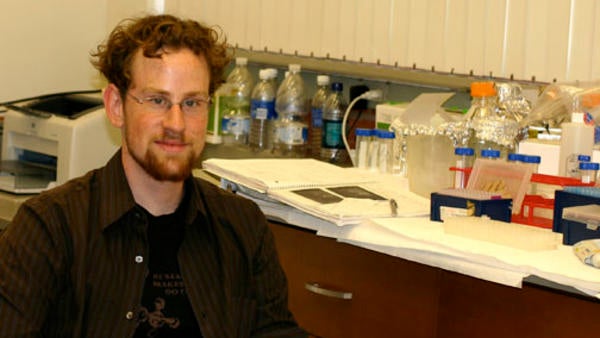
Benjamin Fulton
Skidmore College
(Jin Lab)
Small RNAs are important regulators of gene expression, including development, genome maintenance, and response to abiotic and biotic stress. Small RNA’s are generally 20-25 nucleotides long and can be divided into two categories based on their biogenesis: small interfering RNAs (siRNAs) and microRNAs (miRNAs). Small interfering RNAs are derived from double-stranded RNAs and microRNAs are processed from single-stranded hairpin RNA precursors. Recently, Dr. Jin’s lab demonstrated that nat-siRNAATGB2, an endogenous siRNA, is promoted in Arabidopsis thaliana by Pseudomonas syringae, which carries the effector avrRPT2. This nat-siRNAATGB2 appears to repress a negative regulator of the RPS2 resistance pathway and plays an important role in plant defense. Based on this previous research, the purpose of my research is to study a miRNA that is induced in response to the pathogen Pseudomonas syringae. This specific miRNA targets the coding region of the mRNAs encoding many different genes. We are currently investigating the roles of these genes in plant immunity to Pseudomonas syringae. To determine the function of these genes we are using T-DNA knockout mutant lines to see the difference in pathogen resistance. This analysis requires the use of DNA extraction to confirm the genotype of the mutants, RNA extraction and RT-PCR to determine the gene expression levels of these genes in the mutants, and pathogen assays on the mutant strains to determine their resistance to Pseudomonas syringae.
References:
Katiyar-Agarwal S, Morgan R, Dahlbeck D, Borsani, Villegas AJ, Zhu JK, Staskawicz BJ, and Jin H (2006) A pathogen-inducible endogenous siRNA in plant immunity. Proc Natl Acad Sci U S A 103: 18002-18007.
Katiyar-Agarwal S, Gao S, Vivian-Smith A, and Jin H (2007) A novel class of bacteria-induced small RNAs in Arabidopsis. Genes & Development 21: 3123-3134.

Robert Washington
Cal Poly Pomona
(Raikhel Lab)
Plant endocytic pathways have only recently been under investigation. Up until the last decade, the scientific community believed that the cell wall and the plant cell’s turgor pressure prevented endocytosis from occurring. The use of dyes, labeled sterols, and reporter-fusion markers revealed that plants do undergo endocytosis. To understand this highly active process, a chemical genomics approach was utilized. This method employs small molecules to disrupt protein function. This allows the researcher to eliminate the problems of redundancy of large gene families and the lethality of essential genes. In an initial chemical genomics screen of a 2,000 compound library, the Raikhel laboratory has discovered a novel compound that affects endocytosis in plants. The Raikhel laboratory now has expanded the screen to include an additional 59,000 compounds contained in the Center for Plant Cell Biology (CEPCEB) library.The performed primary and secondary screens usetobacco (Nicotiana tabacum) pollen as a model system of active endocytosis. Tobacco pollen requires minimal care, and is easily imaged for high-throughput format via confocal microscopy techniques. The primary screen assays for aberrant phenotype and/or inhibition of germination of the pollen tube. Derived from positive primary screening results, the secondary screen will assay pollen tube phenotype and the localization of a ROP GTPase-associated protein marker that localizes at the apical tip in pollen tube growth. The compounds exhibiting mis-localization of the protein marker phenotype will then be assayed on Arabidopsis thaliana seedlings.This summer I will be participating in the data analysis of 36,000 images from the primary screen, perform the actual screening on the last 12,000 compounds to be tested, and assist in the secondary screening of approximately 400 compounds.

Colin Murphree
Transylvania University
(Rao Lab)
Many positive-strand RNA viruses cause serious diseases of humans, animals and plants. Despite the fact that replication of RNA viruses occur in the same compartment where cellular RNAs also exist, assembled virions contain only viral progeny RNAs. Our knowledge concerning how viruses filter cellular RNA is still in its infancy.
Cucumber mosaic virus (CMV) is the type member of the genus Cucumovirus and is of substantial agricultural significance. CMV is typical of eukaryotic RNA viruses and its replication is entirely cytoplasmic. Purified virions of CMV package three genomic and a single subgenomic RNA. Some CMV strains also contain another small, single-stranded RNA species, known as a satellite RNA (Sat-RNA).
Sat-RNA is completely dependent on CMV for its replication and is efficiently encapsidated into CMV virions although it shares no significant sequence homology with CMV genomic RNA. Replication of Sat-RNA is species specific. Therefore, other members of Cucumovirus genus are incompetent to replicate the Sat-RNA of CMV and vice versa. Dr. Rao’s lab is employing a variety of molecular, cellular and biochemical approaches to address the following questions: (i) Does Sat-RNA replicate independent of its helper virus? (ii) Is packaging of Sat-RNA functionally coupled to replication? (iii) Is packaging of Sat-RNA sequence or structurally dependent? (iv) Can Sat-RNA package autonomously into virions or does it co-package with helper virus RNAs? To find some of the answers to above mentioned questions this summer, I will be using the Agrobacterium-mediated transient expression system (agroinfiltration) developed in Dr. Rao’ lab. The three genomic RNAs of TAV and its Sat-RNA will be subcloned into a binary vector (eg. pCASS-Rz) amenable for agroinfiltration. Following construction of the required agrotransformants, the biological activity of TAV genomic RNAs and its Sat-RNA will be tested by infiltrating desired sets of inocula into Nicotiana benthamiana plants. Northern and Western blot hybridization assays will be used respectively to monitor accumulation of progeny RNA and capsid protein. Encapsidation efficiency of Sat-RNA by transiently expressed virus replication derived capsid protein will be compared to evaluate the required forms of Sat-RNA and capsid protein. Virions assembled with transiently expressed coat protein will be compared to those of native with respect to the configuration of packaged RNAs. Information obtained from these studies is valuable in understanding how RNA viruses replicate and package their genomes, with an eventual aim of formulating novel methods of virus disease control.

Byron Doyle
Fort Valley State University
(Cutler Lab)
Glycosylation is a process by which saccharides link to one another to produce glycans, which can be independent or attached to proteins and lipids. Glycosylated molecules demonstrate the ability to modify the duration and intensity of biological activity and have been shown to modulate drug responses. Understanding how glycans affect specific biological processes can enhance the understanding of those biological processes. Previous experiments examining natural variation in Arabidopsis accessions have shown that the small molecule hypostatin is a prodrug that is activated by HYR1, a UDP glycosyltransferase (UGT), to form a bioactive glucoside. Glycosylated hypostatin modulates etiolated growth resulting in a shortened hypocotyl and an elongated root. The target of glycosylated hypostatin remains unknown. To identify the target of glycosylated hypostatin, we are employing a map based cloning approach. Hypostatin resistant mutants were obtained via a mutant screen. The identification of the mutated gene responsible for hypostatin resistance may lead to the discovery of the target site of glycosylated hypostatin. Currently, linkage mapping has placed the hypostatin-resistance gene on chromosome III. Identifying the target/pathway of glycosylated hypostatin will further our understanding of Arabidopsis growth and shed light on the regulation of glycosylation in general.

Ali Zanial
CSU Bakersfield
(Bailey-Serres Lab)
The Bailey-Serres’ lab is mainly concerned with the regulation of gene expression of an mRNA encoding a specific protein. These mRNAs are undergoing translation, but those who are not involved in translation, are sequestered into distinct mRNA/protein complexes that either preserve or destroy the transcripts. The lab’s long-term goal is to fully understand how the cell differentiates between mRNAs under stress conditions, more specifically under hypoxia (low oxygen). This goal involves a variety of cellular proteins that either bind mRNAs or are vital translational machinery compenents. My project this summer will examine the regulation of mRNA translation by focusing specifically on the role of plant ribosomes and ribosomal proteins in Arabidopsis thaliana. Ribosomes are essential cellular organelles that are composed of two subunits (large and small subunit) and consist of four rRNAs and 80 proteins. The purpose of my project is to develop key important tool which will be utilized to determine the role and the function of a set of four proteins, called “P-proteins,” of the large ribosomal subunit. The JBS lab is interested in studying the “P-proteins” for several reasons: 1) The majority of proteins are highly basic, whereas the “P-proteins” are highly acidic. 2) They form a flexible complex that assist in the translocation step of the polypeptide formation. 3) All four are phosphorylated. 4) All four are evolutionary distinct and form complexes. My project will utilize transgenic Arabidopsis lines that have been produced that contain an epitope-tag version of P1 and utilize the molecular technique of Co-immunoprecipitation of polyribosomes that posses a FLAG-tageed ribosomal protein with a-FLAG agarose beads to determine protein interactions. My second project, involves generating DNA constructs that will enable the production of more transgenic Arabidopsis lines that will produce an epitope-tagged versions of the P2a, P2b, and P3 proteins. Finally, my third project will involve in aiding a graduate student in performing experiments to evaluate mechanisms of translational regulation.

Rebekah Silva
Riverside Community College
(Walling Lab)
The Walling Lab is currently studying the signal transduction pathways in tomato (Solanum lycpersicum) that are triggered when the plants experience biotic and abiotic stress. Much of the focus is on the octadecanoid pathway activated by mechanical wounding and chewing insects which produce the potent elicitor jasmonic acid (JA). Recently, the Walling lab hs found a role for leucine aminopeptidase-A (LAP-A) in the late branch of the octadecanoid pathway, which regulates genes involved in insect deterrence. Transgenic lines developed in the Walling lab (35S:LapA silenced (LapA–SI) and 35S: LapA over-expressed (LapA–OX)) have shown that in the absence of LAP-A, the tomato plant’s ability to respond to herbivory significantly decreases in comparison to the wildtype (WT) control. In addition to the extensive plant damage, late gene RNA accumulation in the LapA-SI lines was considerably diminished. LapA-OX lines have also shown that increased levels of LAP-A decrease the amount of plant tissue damage caused by chewing insects, relative to WT tomato plants. These data suggest that LAP-A is a regulator of the late gene wound response. Many other signaling molecules have also been implicated in regulating the wound response. One such example is hydrogen peroxide (H2O2). Levels of H2O2 have been shown to increase in response to plant stress, and treatment with H2O2 is also known to induce expression of late response genes in unwounded plants. While the mechanism of action is unknown, both H2O2 and LAP-A only appear to function in the late wound response pathway. Therefore, LAP-A may regulate H2O2, which in turn regulates gene expression. In order to determine if LAP-A is a regulator of H2O2, LapA–SI, WT, and LapA–OX lines of tomato plants will be treated with H2O2 to determine if H2O2 can complement the absence of LAP-A in late wound response.
References:
Fowler JH, Aromdee DN, Pautot V, Holzer FM, Beckage N, and Walling LL (2007) Leucine aminopeptidase regulates wound and defense signaling in tomato (Solanum lycopersicum). (submitted).
Orozco-Cardenas ML, Narvaez-Vasquez J, and Ryan CA (2001) Hydrogen peroxide acts as a second messenger for the induction of defense genes in tomato plants in response to wounding, systemin, and methyl jasmonate. Plant Cell. 13, 179-191.
Walling LL (2000) The Myriad Plant Responses to Herbivores. J Plant Growth Regul. 19, 195-216.

Andrea Wheat
Univ. of North Texas
(Borkovich Lab)
The Borkovich lab is currently working with Neurospora crassa, a filamentous fungus and model organism. The genome for N. crassa has previously been sequenced and I will be working with 16 phosphatase mutants previously made in the lab by the throughput knockout procedure. Phosphatases aid in the regulation of dephosphorylation within the cell cycle. Each mutant has one of the phosphatase genes “knocked-out” by homologous recombination. A hygromycin resistance gene replaced the target gene and the mutants were then grown on hygromycin, leaving behind only true mutants. Now the mission is to use phenotypic analysis and determine the function of each of the phosphatase genes. I will be using microscopy to analyze vegetative growth, cell integrity, and sexual development.

Michael O’Leary
UC Riverside
(Chen Lab)
Gene expression can be, but is not necessarily, regulated at two levels – the transcriptional level by siRNA-mediated transcriptional gene silencing (referred to as TGS), and at the post-transcriptional level by microRNA-mediated post-transcriptional gene silencing (referred to as PTGS). My two research projects this summer are to 1) use a forward chemical screen to identify players involved in microRNA-mediated PTGS and/or microRNA biogenesis and 2) utilize map-based cloning to identify a mutant involved in TGS that was previously isolated by a post-doc in Dr. Chen’s lab. Dr. Chen has previously generated a 35S::luc-AP2 reporter line. This reporter construct is driven by a double 35S promoter that generates siRNAs leading to DNA methylation of the reporter gene. This reporter also contains a miRNA binding site (for miRNA172) of the AP2 gene, allowing us to potentially discover factors involved in microRNA-mediated PTGS. In the chemical screen I will use libraries available on campus to screen for players involved in TGS and microRNA-mediated PTGS. The plants will be grown in 96-well plates to the two leaf stage, at which point each well will be treated with a different chemical and then assayed for increased luciferase activity. Compounds that result in increased activity will undergo a secondary screen as well as DNA-methylation assays to confirm that the chemicals affect the TGS pathway.
The goal of the map-based cloning project is to pinpoint the position of a putative mutant defective in microRNA-mediated PTGS and clone the gene. This mutant was isolated from an EMS screen (EMS is a chemical agent that produces random point mutations) and has increased luciferase activity, as well as a PIN-like phenotype at the cotyledon stage. The mutant was backcrossed to Ler and the F2 progeny from this cross will be used for the map-based cloning. Preliminary mapping indicates that this gene may be located at the bottom of chromosome three.
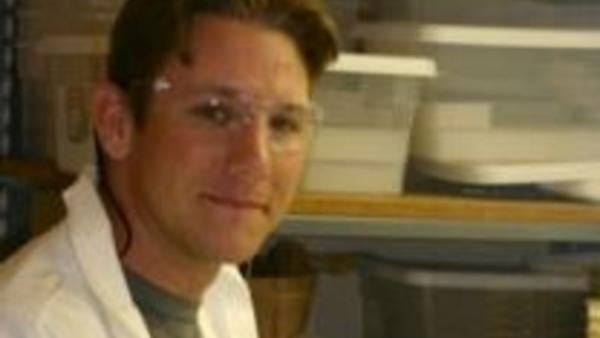
Joseph Manson
Riverside Community College
(Judelson Lab)
The Judelson lab is primarily focused on the oomycete Phytophthora infestans, specifically the structure, expression, and evolution of spore genes. Using various bioinformatic programs, gene database resources, and DNA cloning techniques paired with gene sequencing, I will be researching how P. infestans spores develop, germinate, and the evolutionary relationship to the proteomes of other flagellated organisms. In order to further understand P. infestans spore development, I will evaluate predicted gene structures, design primers for polymerase chain reactions, and amplify promoters from genomic DNA. These promoters will be cloned and tagged using GUS reporters and with the use of various microscopic techniques, we will locate where genes of interest are being expressed. Furthermore, we will be sequencing the plasmids to verify proper construction as well as a transformation procedure of utilized plasmids into P. infestans. The second half of this summer’s project will be analyzing the structure and evolution of the flagellar proteome. We will be using other organisms for direct comparison such as Trypanosoma brucei, Monosiga brevicollis, Homo sapiens, Batrochochytrium dendrobatidis, and Chlamydomonas gruberi. This comparison will give us a better understanding of the evolutionary changes that have occurred in P. infestans using web-based approaches, which include alignment studies and tree-building exercises.
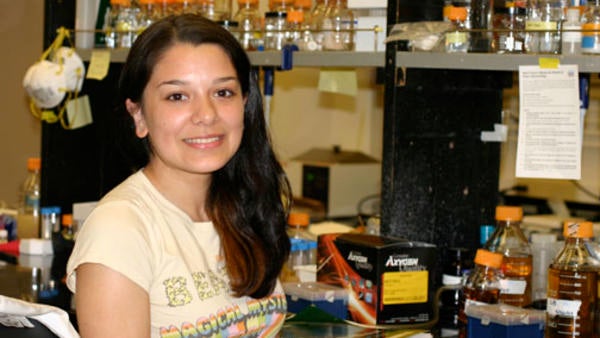
Maritza Duarte
Seattle University
(Reddy Lab)
The shoot apical meristem (SAM) of plants harbors a set of stem cells in the tip of the shoot apex. The above ground organs in plants are derived from these stem cells via differentiation. Genetic studies using the model plant Arabidopsis thalianarevealed the role of the homeodomain transcription factor WUSCHEL (WUS) in stem cell specification (Mayer et al., 1998). In addition, studies found that stem cells restrict their own size by secreting a peptide ligand CLV3, which interacts with CLV1-CLV2 receptor complex and negatively regulates the expression of WUS at the transcriptional level (Schoof et al., 2000). In a functional SAM, expression of WUS is confined to the organizing centre (OC) located underneath the stem cells. The disparity between the WUS expression domain and its functional requirement, led to the hypothesis that WUS acts non-cell autonomously in specifying the stem cells within the SAM. The studies thus far indicate a non-cell autonomous function for WUS. Dr. Reddy’s lab has designed antibodies against the WUS protein. With this new tool I will address the localization of the WUS protein. Therefore during my research project in Dr. Reddy’s lab I will use immunohistochemistry on sections of fixed plant tissue to visually localize the WUS protein in the SAM. In an alternate approach the WUS protein will be fused with GFP in order to visually follow in real time where the protein is localized. During this research I will learn protein localization in fixed plant tissue by using immunolocalization and live-imaging by confocal microscopy.
References:
Mayer KF, Schoof H, Haecker A, Lenhard M, Jurgens G, and Laux T (1998). Role of WUSCHEL in regulating stem cell fate in the Arabidopsis shoot meristem. Cell 95, 805-815.
Schoof H, Lenhard M, Haecker A, Mayer KF, Jurgens G, and Laux T (2000). The stem cell population of Arabidopsis shoot meristems in maintained by a regulatory loop between the CLAVATA and WUSCHEL genes. Cell 100, 635-644.
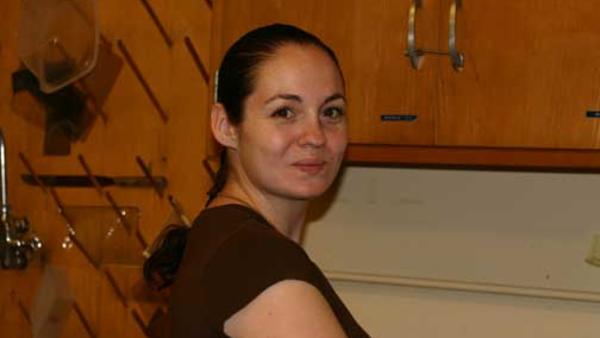
Tiffany Carmona
Riverside Community College
(Smith Lab)
The research goal in Dr. Smith’s lab is to understand the molecular mechanisms that regulate floral specification. To this end, we are focused on identifying transcriptional complexes that are involved in specifying floral cell fate. Previous studies in Dr. Smith’s laboratory have shown that PENNYWISE (PNY), a homeobox transcription factor, is part of a large transcriptional complex approximately 1 kD in size. The lab has also developed a purification technique to enrich for this complex from cauliflower meristem tissue. One of my research goals is to affinity purify antibodies raised against PNY andSHOOTMERISTEMLESS (STM) then characterize these antibodies by western blot analysis and immunolocalization experiments. After characterization of these antibodies, we will perform immunoprecipitation experiments to determine if we can immunopurify the 1 KD PNY transcriptional complex and determine the components of this complex using a proteomics approach. We will also utilize a tandem affinity purification procedure to purify the PNY-transcriptional complex(es) and determine if STM and PNY are part of a large regulatory complex in Arabidopsis.

Daniel Swank
Riverside Community College
(Bailey-Serres Lab)
The Bailey-Serres Lab is focused on the study of low oxygen (hypoxia) stress in plants. To this end, the lab is focusing on four ongoing projects: the evaluation of mechanisms of submergence tolerance in rice, the development of methods to analyze cell-type specific mRNAs to study cell type specific transcriptional regulation under hypoxia in Arabidopsis, the evaluation of hypoxia stress regulated proteins with no known biological function in Arabidopsis, and the project to which I have been assigned, the study of low-oxygen sensing and response mechanisms in plants.
Under the supervision of graduate student Charles Jang, I will be studying the role of the hypoxia-induced mitogen-activated protein (MAP) kinase, MAPK6, in Arabidopsis (AtMPK6). A purely classical genetic approach introduces complications as an AtMPK6 knockout produces no phenotype under hypoxia, most likely due to its partial functional redundancy with AtMPK3 and double knockouts of atmpk3/atmpk6 are embryo lethal. To avoid this complication and to more finely control the activity of AtMPK6, we will screen for a small molecule that specifically inhibits AtMPK6 kinase activity.
An in vitro assay was developed to monitor kinase activity. Kinase activity consumes ATP in order to phosphorylate a substrate. The assay will monitor the depletion of ATP in solution via luciferase, an enzyme that bioluminesces in the presence of ATP and luciferin. A small molecule screen will be conducted using the Spectrum bioactive library to look for inhibitors of kinase activity. A recombinant source of AtMPK6 will be used instead of native AtMPK6 due to the difficulty of obtaining sufficient quantities in sufficient concentration to be useful in a high throughput screen. We expect to see lower luminescence as the kinase consumes ATP and in the presence of the inhibitor, the kinase consumes less ATP and the final luminescence will be higher. Thus there is a direct correlation between inhibition of kinase activity and luminescence.
Once an inhibitory compound is isolated it will then be used in planta to determine the role of AtMPK6 in low oxygen stress signaling by treating three genotypes of Arabidopsis (Columbia, atmpk3 knockout, atmpk6 knockout) with the inhibitor and monitoring plant responses both in normoxic and hypoxic conditions.
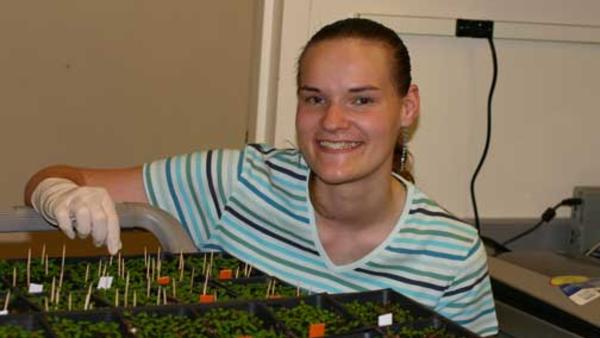
Rhonda Egidy
Pittsburg State University
(Chen Lab)
For my visit here in UC Riverside’s CEPCEB 9 week REU program I am gifted with the opportunity to work in Xuemei Chen’s lab under the tutelage of Theresa Dinh. The Chen lab is interested in cell fate in floral development and the biogenesis of micro RNAs. This lab uniquely merges the cutting edge dimension of chemical genomics with that of traditional genetics.
To identfy genes involved in miRNA biogenesis, the Chen lab first fused the reporter gene LUCIFERASE to a portion of the APETALA2 (AP2) gene, that contains a miRNA binding site. Translation of AP2 mRNA is normally inhibited by miRNA172, so in this line, miRNA172 is predicted to cause translational repression in the
LUC-AP2 reporter gene. The Luc-AP2 transgenic line was randomly mutagenized to produce point mutations. The seeds from these “random” mutants were then collected into seed pools. One of the three goals for my project is to sow many of these seed pools onto plates and image them live to determine their luciferase activity. Those seedlings with higher and lower luciferase activities will be retained and further characterized. They will represent putative mutations in genes that regulate miR172 production. Secondly, screens will be completed using chemical libraries to determine “hit” compounds that cause higher or lower luciferase activity. Luc-AP2 seeds will then be grown in 96-well plates in the presence of these various chemicals and images of the seedlings will be taken to determine luciferase activity. Once again those found to cause higher or lower activity will be retained and further characterized.
Finally I will take part in the mapping of a hen-1 like mutant; S6.3. HEN-1 or Hua Enhancer plays multiple roles in plant development such as in the biogenesis of micro RNAs and organ identity specification in the flower. It encodes for a novel protein that causes methylation of micro RNAs. Arabidopsis plants with hen-1 mutations exhibit pleiotropic effects, including infertility, late flowering, reduced organ and cell size, shortened internodes, and alterations in leaf number and morphology. This project will fully expose me to genetics in the forms of crossing and mapping and to the components of molecular biology: DNA, RNA, and proteins. It will also provide me with many of the necessary skills needed to successfully take part in the world of research as I one day hope to.
References:
Chen X, Liu J, Cheng Y, and Jia D (2002). HEN1 functions pleiotropically in Arabidopsis development and acts in C function in the flower. Development 129: 1085-1094.
Chen X. (2005). microRNA biogenesis and function in plants. FEBS Letters 579: 5923–593.

Shonnette Grant
Claflin University
(Jin Lab)
Small RNAs (smRNAs) are major players in regulating gene expression both in plants and animals [Baulcombe, 2004]. Deep sequencing of smRNAs revealed diverse species of endogenous small RNAs from Arabidopsis[Reinhart et. al., 2002]. One of the miRNAs was shown to be involved in basal defense against Bacteria by regulating auxin signaling [Navarro et. al., 2006]. Our lab identified, another class of endogenous small RNAs derived from the overlapping region of a pair of natural antisense transcripts (nat-siRNAs) that was induced by a bacterial pathogen Pseudomonas syringae (Ps) carrying an effector avrRpt2 [Katiyar-Agarwal et. al., 2006]. My work involves examining the effect of pathogen on RNA silencing pathway genes in A. thaliana. RNA silencing in Arabidopsis is accomplished by 4-DCLs, 10-AGOs and 6-RDRs. We are interested to examine the expression levels of these pathway genes by using RT-PCR and Northern blotting.
Techniques Involved:
Plant material preparation
Media preparation
Pathogen culture preparation and inoculation
Samples collection at various time points
RNA extraction
RT-PCR
Northern blot hybridization and Data analysis
References:
Baulcombe, D. 2004. RNA silencing in plants. Nature 431: 356-363.
Reinhart, B.J., E.G. Weinstein, M.W. Rhoades, B. Bartel, and D.P. Bartel. 2002. MicroRNAs in plants. Genes Dev. 16: 1616-1626.
Navarro, L., P. Dunoyer, F. Jay, B. Arnold, N. Dharmasiri, M. Estelle, O. Voinnet, and J.D. Jones. 2006. A plant miRNA contributes to antibacterial resistance by repressing auxin signaling. Science 312: 436-439.
Katiyar-Agarwal, S., R. Morgan, D. Dahlbeck, O. Borsani, A.J. Villegas, J.K. Zhu, B.J. Staskawicz, and H. Jin. 2006. A pathogen-inducible endogenous siRNA in plant immunity. Proc Natl Acad Sci U S A 103: 18002-18007.

Ugoeze Nwokedi
El Camino College
(Girke Lab)
Bioinformatics is a developing field of science that draws from the different disciplines of biology, computer science, and information technology to create databases to store and analyze biological information. The information could be specific sequences of regulatory DNA elements or amino acid sequences of proteins. The database also contains a description of the type of molecule and also the organism it was isolated from.
My project this summer involves working with the genome of the model plant Arabidopsis thaliana to discover regulatory elements by string enrichment analysis (SEA). First, the frequencies of the regulatory elements in the entire genome are found and serve as background noise levels. Then, these frequencies are compared to those found in a particular gene or group of genes. A regulator database will be constructed that contains all possible 6-8mer DNA motifs along with their frequency of occurring in each promoter sequence. Then, the promoter sequences with enriched motifs will be isolated with a hypergeometric test that assigns discrete values to the probability of the number of successes in identifying the same motif from a string of elements.
I will also learn to search databases for gene or promoter sequences and how to map the genome to define the function of unknown genes. Also, I will write computer scripts for large-scale data analysis using the R program for statistical computing and use different graphical procedures to depict and analyze data.
Bioinformatics is important because with information in databases and different computational approaches, a better understanding of cellular processes could be attained because a better idea of the function of a gene and possibly gene families are known. This offers scientists a wealth of information that can be resourced in their research. In the long run, this knowledge could be very important in pioneering advances in diagnosis, treatment, and prevention of genetic diseases.
References:
Horan, K., Girke, T. Genome-Scale Discovery of Regulatory Elements by String Enrichment Analysis (SEA).http://www.ncbi.nlm.nih.gov/About/primer/bioinformatics.html

Daniel Lin
UC Berkeley
(Reddy Lab)
The shoot tip of a plant is the location of the shoot apical meristem (SAM), part of which is a stem cell reservoir. The tip of the SAM is known as the central zone (CZ), and is where stem cells are located. Outside the CZ is the peripheral zone (PZ). Once progeny of CZ cells enter the PZ, they enter differentiation pathways and become the precursors of various organs. When CLAVATA genes are mutated, the CZ sees excess stem cell accumulation and CZ expansion. Mutation of the gene WUSCHEL results in deficient stem cell production. It has been determined that CLAVATA and WUSCHEL constitute a feedback network that functions in maintaining CZ size and stem cell production. The exact nature of how these genes interact is unknown, and it is likely that there are other players in this feedback network.
Through microarray analysis of stem and non-stem cells, novel Arabidopsis thaliana genes enriched in stem cells have been identified by the Reddy Lab. My project will be to create transgenic plants in which conditional misexpression of these genes is possible. This is done using a two-component transcription activation system. This system utilizes a transcription factor, LhG4, fused to a glucocorticoid receptor, GR. In the presence of Dexamethasone (DEX), GR-LhG4 migrates from the cytoplasm to the nucleus and binds to 6xOP, a multimerized LhG4 binding sequence, and activates transcription of the corresponding downstream gene. The project will involve placing novel stem cell genes downstream of 6xOP, and then transforming the 6xOP::novel gene construct into a 35S::GR-LhG4 ; pCLV3::GFP-ER background. This will allow for gene expression to be induced by DEX. Furthermore, because pCLV3::GFP-ER is only expressed in CZ cells, the effect of misexpression on CZ organization can be observed by special live imaging methods. This will help in the identification of genes involved in the CLAVATA-WUSCHEL
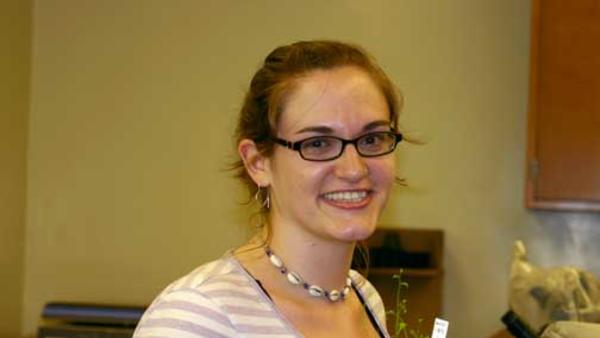
Maressa Bell-Deane
Mt. Holyoke
(Raikhel Lab)
While working in the Raikhel lab this summer, I will be researching the trafficking of proteins to the storage vacuole in Arabidopsis thaliana using the Landsberg ecotype. For that purpose we will perform screenings on a T-DNA mutagenized VAC2 population.
Wild type Landsberg plants have a small meristem and smooth looking siliques (seed pods) due to the function of CLAVATA3, which is secreted to the extracellular space. The VAC2 population used in the screening has a mutant form of the signaling protein CLAVATA-3 (clv3) and also has an active form of CLV3 fused with CTPP, a vacuolar-targeting signal. Neither clv3(which is inactive) nor CLV3-CTTP (which is targeted to the storage vacuole) is secreted, thus leading to a phenotype consisting of a large meristem and thick siliques in the VAC2 plants.
The VAC2 population has been mutagenized with T-DNA. If a T-DNA insertion disrupts the pathway required for targeting CLV3-CTPP to the storage vacuole, then CLV3-CTPP will be secreted from the cell, where it will be functional, thus rescuing the clv3mutant, resulting in the wild type phenotype. Once we identify VAC2 plants with wild type phenotypes, we will perform TAIL PCR on these mutants to locate the T-DNA insertion position in the genome and we will confirm the correlation between phenotype and genotype using allelism tests, backcrosses and complementation assays.
The lab has already looked at 40 T-DNA mutant pools (approximately 40,000 seeds) out of 164 pools available (which we received from Dr. Ray A. Bressan at Purdue University) and 10 mutants have been identified.
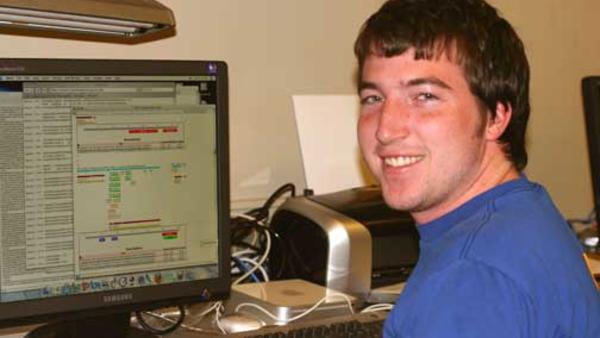
Tom Hirschauer
Univ. of Dayton
(Judelson Lab)
Phytophthora infestans is a fungus-like microbial eukaryote that causes late blight in potato. In addition to causing the “Irish Potato Famine” in the mid-1800’s, the disease is also a major problem that currently limits the production of potato crops worldwide. Since asexual spores are actively involved in the dispersal of P. infestans and its infection of the plant, it is important to understand how P. infestansproduces its spores, and how they might germinate. If genes and proteins important to spore function are identified, inhibitors might be developed that would be safe and effective fungicides. The Judelson lab is using current genetic tools and genomic resources to analyze and identify which genes are most upregulated during asexual and sexual sporogenesis.
My project this summer will be to learn more about the genes that are turned on in spores by studying the structure and the expression patterns of the protein kinases. Studying the structure of the kinases involves annotating genes from the Broad Institute database that contains the entire P. infestans genome. By using programs that find open reading frames with codon biases deviating from the norm, and comparing these sequences to genes from related species such as Phytophthora sojae and Phytophthora ramorum, accurate gene models can be created. Sequence comparisons are performed using BLAST (Basic Local Alignment Search Tool), and can be searched against other genome databases. In addition to computational techniques, I will also be purifying RNA from different developmental stages and performing reverse transcription-polymerase chain reaction (RT-PCR) assays to measure the concentration of kinase gene transcripts. This should validate the microarray expression data, and also obtain data for kinases not represented on the arrays. Another part of my experiments will be the analysis of “control” genes, which are needed to equalize RNA levels between different preparations.

Zhen Qin
UC Berkeley
(Borkovich Lab)
My project in Dr. Borkovich’s lab this summer revolves around the G-protein alpha subunit 3 (GNA-3), which is found in the fungus Neurospora crassa. G-proteins are a family of proteins that act to regulate cell processes. Using a previously constructed mutant strain of N. crassa that had its copy of the gna-3 gene deleted, we were able to compare the phenotypical changes of the fungus. Most notable was that the mutant strain would conidiate, or form spores, while submerged. Under the guidance of my mentor, James Kim, we will further investigate the specific role that GNA-3 plays in cell development. I will be screening the Spectrum Bioactive Compound Library for compounds that cause the wild-type strain to behave like the mutant strain (conidating under submerged conditions), and for compounds that cause the mutant strain to behave normally. During this time, I will also use the yeast two-hybrid model, a method for testing physical interactions between different proteins, to identify proteins that interact with GNA-3. At the end of my tenure here, I hope to find several compounds used to activate or deactivate GNA-3, and to utilize these compounds in probing the signaling pathway that involves GNA-3.
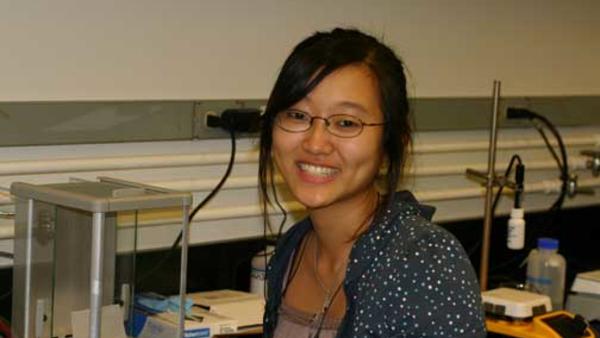
Sonia So
Univ. of Arizona
(Cutler Lab)
The field of chemical genetics has rapidly grown in recent years due to the ability to discover drug-like molecules with high-throughput screening (Kolb et al, 2004). The Cutler lab is focused on studying plant cell development and the pathways that control growth. In using the principle of chemical genetics, I will aid in the effort to screen a library of small molecules, which will be fluorescently-labeled. They will be screened and visualized using confocal microscopy to study the subcellular effects on cell expansion and growth in Arabidopsis. We will harness click chemistry to attach the small molecules onto a biotin group via an azide-alkyne cycloaddition reaction. As shown by Scheme 1 (Sharpless et al, 2003), catalytic amounts of Cu (I) are used to increase the rate of reaction, which can be accomplished in water. This is significant because the small molecules in our library have a low enough ClogP such that they can be introduced into the cell and then tagged, thus ensuring that the cellular processes have not been disrupted by our efforts to visualize them. The click library is composed of terminal acetylenes to ensure that the hit molecule can be tagged and introduced to the cell easily, relying on the fact that click chemistry reacts our acetylene and azide groups by a large thermodynamic force in a simple, specific, and high yielding manner. The click reaction is done under water, which allows us to perform the reaction in vivo. We are looking for a variety of phenotypes where, ultimately, the Arabidopsis seedlings have stunted growth in the hypocotyl, root, or cotyledon. Once the chemical screen yields a hit, a dose curve will be made to measure the concentrations at which the chemical is active. My project includes the screening and creation of dose curves of chemicals, the use of confocal microscopy, the organic synthesis of molecules as well as the synthesis of the fluorescent marker, Coumarin, and the use of a liquid handling robot programmed to make plates for biological and chemical screens.
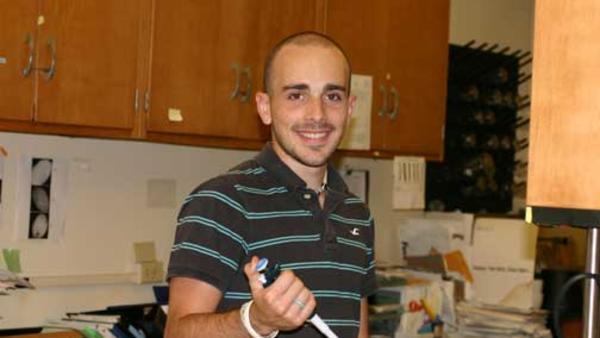
Alex Paya
Ohio Wesleyan
(Yang Lab)
Our summer research project, a part of the IGERT graduate study program, is focused mainly on re-examining chemicals that were screened from the UCR chemical Database and shown to inhibit a protein-protein interaction in Arabidopsis. The protein of interest, ROP2, is part of a large family of ROPs or Rho proteins in plants. These plant specific proteins are part of a larger family of proteins called G-proteins or GTPases. G-Proteins act as transducers of extracellular signals, which function by toggling between an inactive GDP-bound and active GTP-bound conformation. ROP proteins have been reported to be involved in polarized pollen tube growth, root hair development, negative regulation of abscisic acid flow, and a host of other important physiological processes in plants. For example, mutations in the ROP1protein that cause it to be constitutively active (CA) have been observed to cause depolarized pollen tube growth. A series of different reporters are being used to test the ability of synthetic chemicals to inhibit the interaction between ROP and REN (ROP enhancer). My part of the research involves a yeast-2-hybrid screen using yeast that contains the cloned CArop2 and REN plant genes along with the different reporters. The yeast-2-hybrid approach relies on functional protein interaction, in this case between two known proteins, so that the promoter region, made active by the CArop2 and REN interaction, can facilitate the binding of RNA polymerase, which transcribes genes coding for histidine production- an essential amino acid for cell growth. Once chemicals are introduced to the cell suspension (CArop2_REN3) the growth of the cells is measured qualitatively by observing growth and quantitatively by measuring the light absorbance of each culture before and after incubation with the chemical. If the introduced chemical inhibits cell growth by inhibiting the histidine production, which is regulated by the CArop2-REN3 interaction, then the chemical moves on for further study. In the last portion of the research we will introduce the screened chemicals to live plant tissue and observe the phenotypic characteristics.

Lauren Quezada
Loyola Marymount
(Ding Lab)
In the Ding lab, we are currently studying the interaction between RNA silencing and viral infection. RNAi is known as the viral innate immune pathway in insects that uses siRNAs to target viral RNAs for silencing. This in turn inhibits viral replication and transcription, rendering the virus harmless. However, to bypass RNAi, viruses have evolved various proteins that suppress RNAi, which collectively are called viral suppressors of RNAi, VSR for short. One such VSR is the NS1 protein encoded by Influenza A virus; more commonly known as Avian flu. NS1 has been shown to be active in suppressing RNAi and the interferon response in insect and mammalian cells respectively.
This summer I will attempt to find inhibitors of the NS1 protein by screening a small molecule library. To do so I will be performing a cell-based screening assay in Drosophila S2 cell culture to find chemical inhibitors of NS1. To do this the lab has constructed a chimeric plasmid that codes for an inducible viral amplicon (R1GFP) as well as a constitutively active promoter that drives NS1. We will transfect this plasmid into S2 cells and then the small molecules will be added. Normally cells that carry this plasmid will fluoresce green from the virally driven production of GFP. However if NS1 function is inhibited, GFP fluorescence will be lost due to silencing via RNAi. When this occurs, the dark wells will be marked as hits. We then will re-screen the hits and confirm down-regulation of viral RNA with Northern blot analysis. This technique will allow us to read the levels of RNA present in each of the wells not expressing GFP – thus affirming that the chemical “hits” found bound to and suppressed the expression of the VSR.
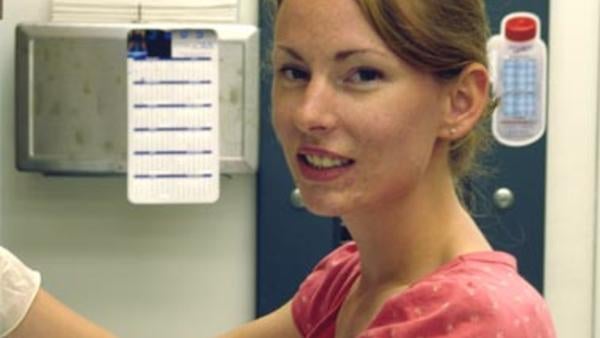
Angela Rowe
Ohio State University
(Jin Lab)
Pseudomonas syringae is a gram negative bacterial pathogen which attacks a wide range of commercial crops. The purpose of my research this summer will be to characterize the function of several candidate signaling genes in plant disease resistance and defense responses. We will use both loss-of-function and gain-of-function for this study. A PCR based screening method will be used to isolate homozygous Arabidopsis mutants for an intracellular nucleotide binding/ leucine rich repeat (TIR-NBS-LRR) gene and RRM protein. The western blot technique will be used to screen for the amount of expression of the desired protein in our over expression transgenic plants. These will be inoculated with P. syringae via agro bacterium infiltration. Pathogen growth assays and hypersensitive response assays will be performed to determine the effect of these proteins.
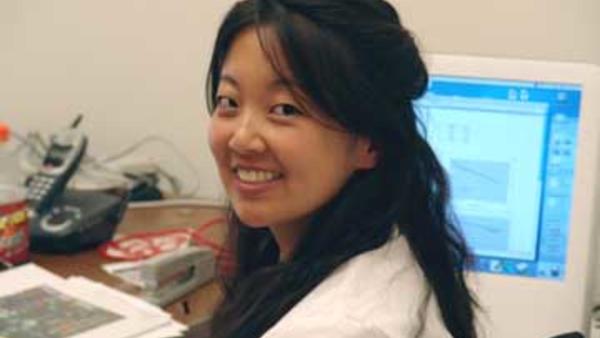
Carrie Wang
Univ. of Colorado
(Smith Lab)
In flowering plants, the transition from the vegetative to reproductive stage constitutes a major developmental phase change. However, the cellular and molecular mechanisms for floral specification are poorly understood. Our laboratory focuses on the mechanisms in the shoot apical meristem (SAM) that initiate flowers in response to floral inductive cues. In Arabidopsis thaliana, two paralogous BEL1-like (BELL) homeodomain transcription factors, PENNYWISE (PNY) and POUNDFOOLISH (PNF) are required for floral specification during reproductive growth. Double mutants of pny-pnf are not capable of transitioning from vegetative to reproductive development. However, the SAM still displays the physical and molecular modifications which occur after receiving floral inductive signals.
To understand the biochemical functions of PNY/PNF, I am developing a procedure to purify the PNY-transcriptional complex from isolated inflorescence SAMs. The goal is to identify the molecular mass of the complex and the components that constitute the complex. Cauliflower, a close relative of Arabidopsis, will be utilized as the source for inflorescence meristems due to its availability and ease of isolation. Techniques such as ion exchange, gel filtration, SDS-PAGE, and immuno-precipitation will be used in order to purify the PNY–transcriptional complex. Future research will focus on determining the function of these proteins during flowering, and the mechanisms of inflorescence development.

Jason Schoneman
Cal Poly Pomona
(Judelson Lab)
Phytophthora infestans is a highly destructive plant pathogen on potato. The resulting destruction creates an annual total of billions of dollars in damage to the crop worldwide. Around the mid-nineteenth century, a pandemic of this late blight disease on potatoes resulted in the death and displacement of the population of Ireland. Recently, localized, severe epidemics have occurred in Europe and Asia due to specific mating types of the pathogen on potato being sent to these locales from P. infestans’ presumed place of origin—Mexico. Accordingly, the Judelson lab is using current genetic tools and genomic resources to analyze and identify which genes are upregalated the most during asexual and sexual sporogenesis. Discovery of specific genes or gene groups regulating these processes may prove essential to developing successful control strategies against this tenaciously successful organism.
Asexual spores are extremely important in the pathogenesis of P. infestans. They are actively involved in the infection of the plant and the dispersal of inoculum. Asexual spores consist of sporangia and the zoospores formed within the sporangia. In P. infestans, sporangia can detach from the hyphal body and act as a dispersal agent. At cooler temperatures six or more biflagellate zoospores can exit the sporangia and further travel to find their host. Before the zoospore can infect the host, it has to encyst and germinate. Essentially, all the steps from hyphae to germination of encysted zoospores may involve the expression of important sporogenesis genes.
The Judelson lab has assembled an EST dataset consisting of genes upregulated greater than ten times during asexual sporulation. They produced this dataset from microarray (Affymetry Genechip) analysis studies. I will use the EST dataset to construct correlating promoter regions in closely related Phytophthora species with bioinformatics tools. Using the BLAST (Basic Local Alignment Search Tool) of an annotated database, I will find gene and promoter homologs in these closely related Phytophthora species. Also, I will BLAST the EST clones on a raw sequence dataset for P. infestans (an annotated database for this species is not yet developed). This will allow me to move or “walk” in the sequence database to find promoter regions. After compiling the promoter homologs of the closely related Phytophthora species, I hope to find conserved blocks within these promoters using programs such as CLUSTAL, GIBBS MOTIF, SAMPLER, and others. Using Polymerase Chain Reaction, the promoters will be amplified and then cloned into the pOGUS reporter plasmid. I will then transform the plasmid into P. infestans.

John Tracey
St. Norbert College
(Eulgem Lab)
Throughout the summer, I will be working in Dr. Thomas Eulgem’s lab under the supervision of graduate student Mercedes Schroeder. Dr. Eulgem’s lab focuses mainly on genetic regulation of the plant defense response. Plants are sessile and therefore have evolved complex immune systems and strategies of dealing with pathogens. Plants have what are known as incompatible and compatible defense reactions. My project involves looking at these response reactions in the model plant Arabidopsis thaliana to the fungus-like oomycete Hyaloperonospera parasitica (Peronospera). The main goal of the project is to use enhancer trapping methods to analyze the sequences of crucial enhancer and promoter elements used in regulation of the defense response.
We are screening over 11,000 Arabidopsis trap lines. The enhancer traps consist of a reporter gene fused to a minimal promoter, which were then inserted randomly into the genome. If the trap inserts near an enhancer, the reporter gene will be turned on. The reporter gene in the enhancer traps is known as the GUS gene and encodes for the enzyme β-glucoronidase. Since we are interested in the traps that are inserted near genes involved in the immune response, we “GUS-stain” the leaves and look for the staining of tissue near the Peronospera infection, along hyphae or next to a germinating spore. Individual leaves are examined using light microscopy and then tissue staining is verified with confocal microscopy. Once candidates are discovered, DNA will be isolated and amplified using TAIL-PCR (Thermal Asymmetric Interlaced), which amplifies DNA of unknown sequence upstream and downstream of the T-DNA insertion of the enhancer trap. We will then BLAST amplified sequences against the Arabidopsis genome and analyze them. Finally, a 5’deletion analysis will be initiated in order to examine the location and sequence of the enhancers used to regulate defense genes. A long term application of the research involves modifying these enhancers to help improve disease resistance in crops.
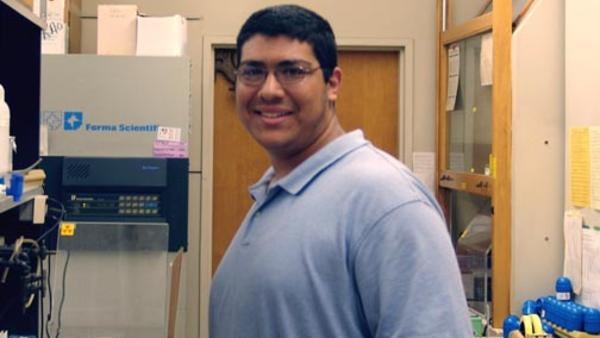
Fady Rofail
Cerritos Community College
(Rao Lab)
Positive-strand RNA viruses cause major diseases in humans, insects, animals and plants. Almost all viruses are disseminated to new hosts only in fully assembled form. Therefore it is imperative to understand how these viruses are assembled and mature. I work under the supervision of Dr. A. L. N. Rao, on a research project focusssing on how eukaryotic viruses package their RNA genomes into virions. Dr. Rao’s lab uses two single-strand, positive sense RNA viruses as model systems: a plant infecting multicomponent brome mosaic virus (BMV) and flock house virus (FHV) an insect virus with broad host range including plants. Dr. Rao’s lab developed a T-DNA based Agrobacterium-mediated transient expression system (agroinfiltration) that not only facilitates efficient transient expression of one or many combinations of a desired set of viral RNAs without having to replicate but also effectively uncouples replication from packaging.
The major focus of my project is to examine how FHV is transported between plant cells to achieve systemic movement. The genome of FHV is bipartite: RNA 1 (F1) codes for a non structural protein that is required for viral replication and another non structural protein B2 expressed as a subgenomic RNA3 (sgRNA3). Protein B2 has been identified as a suppressor of RNA silencing. RNA2 (F2) encodes the structural capsid protein gene which results in co-packaging of RNA1 and 2 into a single virion. The sgRNA3 is not encapsidated into virions. Although FHV replicates efficiently in plant cells, it can not spread from the point of initial entry to neighboring cells and to distal part of the plant due to the lack of genes that are involved in this process (referred to as movement protein). This defect however can be circumvented, by complementing with movement proteins of either tobacco mosaic virus (TMV) or red clover necrotic mosaic virus (RCNMV). In the absence of complementing movement proteins the spread of FHV remain subliminal. In addition to movement protein, some viral systems also require additional proteins such as capsid protein.
My research will focus in addressing the following questions: (1) Does spread of FHV require both movement protein and capsid protein? (2) To what extent does FHV coat protein contribute to cell-to-cell spread? (3) Does FHV spread in virion or non-virion form? To find answers to these questions I will use a FHV RNA2 derived defective interfering RNA (DI-634) as an experimental vehicle in combination with green fluorescent protein (GFP) as a tracer molecule. DI-634 replicates in the presence of F1 and is also encapsidated by the FHV capsid protein. After subcloning GFP ORF into DI-634, the resulting DI-634/GFP will be inserted into pCass4 binary vector amenable for agrotransforamtion. Following agrotransformation, DI-634/GFP will be co-infiltrated with F1 and F2 to Nicotiana benthamiana leaves. Infiltrated leaves will be harvested at regular time intervals and are subjected to confocal laser scanning microscopy for monitoring temporal expression and localization of GFP. For studying encapsiadtion, virion RNA profile will be compared to that of total RNA by Northern hybridization using riboprobes specific for FHV RNAs. The inherent nature of the research project will expose me to various recombinant DNA techniques such as PCR, cloning, gel electrophoresis, agrotransformation, infiltration, virus purification, RNA isolation, confocal laser scanning microscopy, Northern and Western blot hybridizations.

Abby Nitschke
Loyola University
(Yang Lab)
Plant cell shape is directly related to cell function. In Arabidopsis, the leaf epidermal cells (pavement cells) take on a jigsaw puzzle like appearance, which requires coordination between neighboring cells to form lobes and neck regions. In Dr. Yang’s lab, we study the mechanisms governing cell shape formation, using Arabidopsis pavement cells as a model system. Previous studies have already determined that cell shape formation is controlled by a ROP GTPase network involving several ROP GTPase downstream target proteins including RIC1. RIC1 is a novel microtubule associate protein (MAP). The over expression of RIC1 suppresses cell lobe formation and expansion. In order to understand this mechanism, we need to identify other proteins that interact with RIC1. Our approach is to search for genetic mutations that affect the RIC1 over expression phenotype. As my project for the summer, I will be screening for RIC1 suppressors in mutant lines that have already been created using chemical ( EMS ) induced mutagenesis. The phenotype of the epidermal cells will be used to identify possible useful mutations. Taking advantage of the unusual shape of epidermal cells from plants overexpressing RIC1, I will be able to determine whether or not a particular mutation can counteract the effect of RIC1 overexpression. I will also create new mutants using T-DNA tagging under a ric1 knockout background as well as a RIC1 overexpression (low level) background. These lines will be used to screen both enhancers and suppressors in the future. Continuing investigation on these enhancers and suppressors will lead to a thorough understanding of the mechanisms behind the cell morphogenesis.
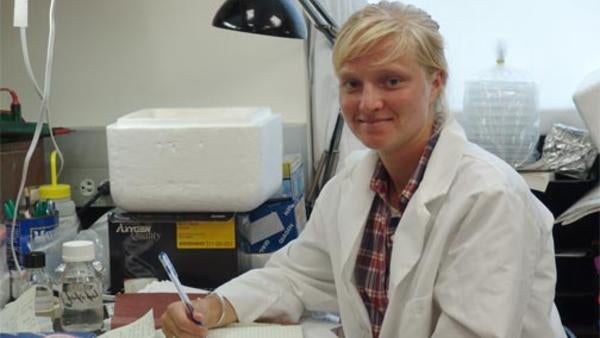
McKell Dilg
Brigham Young University
(Zhu Lab)
My project involves the characterization of ABA-binding proteins. ABA is a plant hormone that affects many processes in plants. These affects are mainly related to plant stresses caused by reduced water availability. Some of the processes affected are, seed drought tolerance, dormancy and protein synthesis. (Razem, et. al., 2006) On a molecular level, the pathways for ABA perception and signaling are not fully understood, namely a receptor for ABA had not been discovered. Recently, Razem, et. al., determined that an RNA binding protein FCA, which is involved in flowering, is an ABA receptor.
In order to study more in depth FCA as an ABA receptor we will attempt to construct a fluorescent ABA sensor using a portion of the FCA protein. Fluorescence can be observed as an absorption of light at a given wavelength and then subsequent emission at a lower wavelength. We will be using two specific fluorescent indicators, CFP and YFP. CFP is a cyan fluorescent protein, and YFP is a yellow fluorescent protein. The special thing about these two fluorescence proteins is that together they create what is called FRET: fluorescence resonance energy transfer. Light is first absorbed by one fluorescent molecule (CFP), and then the energy is transferred to a different molecule (YFP) and finally emitted. The larger the FRET, the closer together CFP and YFP are.
In my experiments I will construct a fusion protein where CFP and YFP are attached to opposite ends of a portion of the FCA protein. We will look for changes in CFP-YFP FRET upon ABA binding in in-vitro ways. Preliminary experiments have shown a change in FRET upon ABA binding with this fusion protein. We will attempt to first, maximize the ABA binding dependent change in FRET by modifying the linkers between the CFP-FCA-YFP fusion protein and second, further define the ABA binding site by making additional truncated versions of FCA.
Protein expression and ABA binding assays with other potential ABA binding proteins are also underway.
References: Razem, A. Fawzi, et. al. The RNA-binding protein FCA is an abscisic acid receptor. Nature, 439, 290-294 (2006).
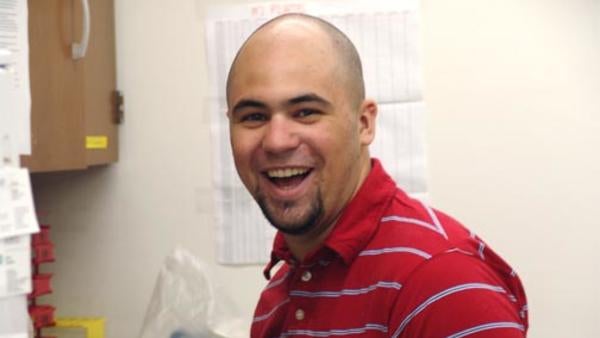
Caleb Jones
Eastern Oregon University
(Borkovich Lab)
The Borkovich Lab is working on a five year project with Dartmouth Medical School and UCLA to learn the function of the Neurospora crassagenome. N. crassa is a filamentous fungus that is a model organism in which plays an important role in numerous accounts of research and discoveries. N. crassa has already been completely sequenced (there are 10,620 genes), but now the goal is to learn the function of each of the genes. In order to figure this out, knockout mutants have been created.
My project this summer will be analyzing at about twenty knockout mutants and phenotyping them. To analyze them I will be growing them on different types of medium, watching their growth, and keeping a photo record, using several forms of microscopy. The genes that will be “knocked out” in these mutants are protein phosphatases. Not much is known about the phophatases in N. crassa; they have been studied more in other organisms such as Saccharomyces cerevisae. Phosphatases are dephosphorylating negative regulators in several cell pathways. They regulate physiological responses to extracellular signals. My goal for the end of the summer will be to successfully phenotype the protein phosphatase genes to see what purpose they serve in N. crassa.

Cheri Tilburg
Rochester Institute of Technology
(Chen Lab)
First, a little background: MicroRNA (miRNA) and small interfering RNA (siRNA) have recently been identified as important in specific gene regulation in plants and animals. These small RNA molecules are highly conserved, between 20-24 nucleotides in length and are thought to be involved in early development, cell proliferation and cell death, apoptosis and fat metabolism, and cell differentiation. Both miRNA and siRNA bind to mRNA and lead to the destruction, modification, or inhibition of the specifically targeted base pair sequence of an mRNA. In plants, methylation at the 2′ OH on 3′ terminal nucleotide protects from enzymes that target the 3′ OH at the 3′ terminus. The Chen lab has previously proven that the methylation is done by the HEN1 protein, which works as a methyltransferase in vitro. HEN1 acts with other unknown proteins, and the next step is using the yeast two-hybrid system to find associated proteins.
The yeast two-hybrid system was developed using the GAL4 gene in E.coli to study protein interactions in all organisms. First we will attach the known gene of protein, X, to the binding domain (BD) of GAL4, creating the “bait”. Next, we will attach each gene of the Arabidopsisthaliana cDNA library to an activating domain (AD), which creates the “hunters”. When both of these plasmids are transformed into yeast the proteins in the cDNA library that interact with HEN1 will bring the BD and AD close together thus activating the GAL4 reporter gene. The GAL4 gene encodes for B-galactosidase activity, and when a lift filter assay is performed the colonies that are blue show the positive result of a protein’s interaction with HEN1. The goal of this summer’s REU project is to use the yeast two-hybrid system to identify the proteins that interact with HEN1 to methylate the siRNA in plants. For more information on the yeast two-hybrid system please visit http://www.biochem.arizona.edu/classes/bioc568/two-hybrid_system.htm

Larry Page
Univ. of Missouri
(Ozkan (M) Lab)
Atomic Force microscopy (AFM) is a powerful technique for visualization of biological systems up to a resolution of 10 nanometers. Some of the advantages of this microscope are that the sample does not have to be fixed in order to view it, it can accurately view soft biological membranes, and it has a high enough resolution to distinguish some of the surface topography of cells and virus particles. Using this microscope, I will be visualizing Cow Pea Mosaic Viruses (CPMV) attached to Iron Oxide Nanoparticles (IONs). CPMV-ION hybrids offer a possible mechanism for new types of dyes to be used in therapeutics. It is possible to mutate virions to target specific types of cells (i.e. cancerous cells) and the IONs will allow for visualization using magnetic resonance imaging. IONs offer an advantage over typical cancer detection methods because they allow the visualization of much smaller tumors. This is important because detecting cancers before they are large enough to spread throughout the body makes them much easier to treat and remove. I will be creating the CPMV-ION hybrids, visualizing them using AFM, and analyzing their interaction with living human breast carcinoma and non tumerogenic epithelial cells.

Noelle Oas
Saint Mary’s University
(Eulgem Lab)
One of the largest threats to the agricultural industry is disease susceptibility of many crop species. Over the past decades, a comprehensive research effort has been conducted to understand the means by which plants defend themselves against pathogens. Major advancements have been made in this area, such as the identification of resistance genes (R-genes) and components of defense signaling pathways. However, mechanisms of transcriptional regulation associated with these pathways are not well understood. The Eulgem lab is interested in the molecular mechanisms which control transcriptional reprogramming triggered during the immune response of plants. For this purpose the model system Arabidopsis thaliana Peronospora parasitica is used.
This summer, I will be working with several short-conserved promoter motifs of co-regulated defense genes previously identified in the lab. These conserved motifs may constitute cis-elements important to coordinate expression of defense genes. The ability of these motifs to bind with nuclear proteins present in Arabidopsis thaliana will be tested using Electrophoretic Mobility Shift Assays (EMSA). For the EMSA, the motifs will be labeled with radioactive phosphate (32P) and incubated with nuclear protein extracts before being subjected to gel electrophoresis. If the motif is able to bind to the nuclear proteins, the migration of the complex will be slowed during electrophoresis, and there will be a shift in the position of the band. If a shift in band location is observed, a yeast one-hybrid system can be used to identify cDNAs encoding transcription factors that interact with the respective conserved promoter motif.
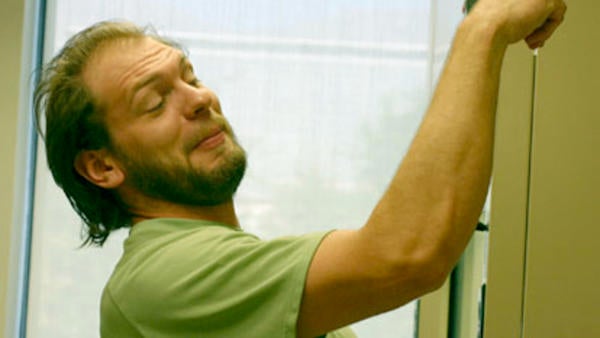
Robert Dick
Iowa State University
(Zhu Lab)
I’m working in Jian-Kang Zhu’s lab to understand how plants respond to environmental stress. By identifying mutant phenotypes in Arabidopsis and what genes are responsible for the observed mutant phenotypes we can generate hypotheses about what roles these genes play in the plant stress response. The Zhu lab has isolated mutants with altered expression of the NCED3 gene, which encodes a key enzyme in abscisic acid (ABA) synthesis. I am working with the NCED3 deregulated1 (ced1) mutant, which has increased ABA accumulation and reduced growth under stress conditions. By constructing a double mutant of ced1 with the ABA-deficient mutant (aba2-1), I will assess whether the increased ABA content of ced1 is required for the stress-sensitive phenotype. I will also undertake additional physiological characterization of the ced1 mutant.
I am also working to identify the mutated gene in the repression of silencing2 (ros2) mutant. In ros2, a normally active RD:29A:LUC transgene construct as well as the endogenous RD29A gene are silenced. Mapping of ros2 has narrowed the location of the mutation to a defined interval. I will sequence ros2 candidate genes in this interval in order to locate the mutation. My work this summer will be under the direction of Dr. Verslues in Dr. Zhu’s lab.

Naa-Darkua Wellington
Xavier University
(Gallie Lab)
Excessive light in plants leads to the augmented production of reactive oxygen species. This activity results in oxidative stress and the damage of many of the cellular components in plants. Plants are able to deal with the stress through an oxygen radical scavenging system in which ascorbic acid plays a key role. Asc is also known as vitamin c and it is the most abundant antioxidant found in plant chloroplasts. Asc works by reducing hydrogen peroxide either directly or through ascorbate peroxidase (APX). The product monodehydroascorbate (MDHA), a very unstable molecule then dissociates instantly to either Asc and dehydroascorbate (DHA) or is reduced to Asc by the enzyme MDHAR. DHA is either reduced to Asc by the enzyme dehydroascorbate reductase (DHAR) or undergoes irreversible hydrolysis to 2,3-diketogulonic acid. Plants with increased expression of DHAR have more Asc and are resistant to oxidative stress.
For this project I will be determining the functions Asc plays in plant photosynthesis and photoprotection using transgenic tobacco plants that have altered DHAR expression. The western-blot method will be used to screen DHAR overexpression and DHAR RNAi plants. I will analyze the photosynthetic performance such as carbon dioxide assimilation rate and transpiration rate of control, DHAR overexpression and DHAR RNAi plants using Li-Cor Gas Analyzer. Finally I will study the light and carbon dioxide response combined with chlorophyll fluorescence measurements to investigate the efficiency of light and CO2 of these transgenic plants.

Amy Sainski
Univ. of Wisconsin
(Raikhel Lab)
This summer I am privileged to be working in Dr. Raikhel’s lab using chemical genomics to study vacuolar biogenesis of Arabidopsis cells. There are three main experiments I will be contributing to this summer, all involving chemicals previously screened and found to have varying effects on the Arabidopsis endomembrane system. The first experiment involves isolating mutant plants based on their sensitivity to the chemicals. I will be screening an EMS-mutagenized population to identify plants that are hypersensitive to the chemical 247 (ID number from Chem Library 5850247). Once hypersensitive mutants have been identified, the lab can use map-based cloning to discover where the mutation exists and what pathways the chemical affects. The second experiment also tries to find what pathways are influenced by the chemicals. Here we will be treating wild type seedlings with chemicals for short periods of time. We will then extract RNA and analyze the accumulation levels of different transcripts using RT-PCR. The genes to be monitored were chosen from previous micro array experiments. Finally, the goal of the third experiment involves the characterization of the effects of the chemical on several florescent markers using a confocal microscope. The markers will label plant proteins that, under normal conditions, are targeted to specific organelles, such as the nucleus, ER, golgi body, and tonoplast.

Quynh Vu
Univ. of Houston
(Borkovich Lab)
Dr. Borkovich’s lab is part of an NIH-funded project along with labs from UCLA and Dartmouth to understand more about functional genomics in Neurospora crassa. Approximately 10,600 N. crassa genes are present in the genome, but their functions have yet been studied. My objective for this summer project is to find putative transcription factor(s) that can be regulated by G proteins and other upstream factors. This will be done by analysis of phenotypes exhibited by G protein mutants, and genetic and molecular analysis to verify their epistatic relationships. Under my mentor, Gyungsoon, I will test the phenotypes of 99 transcription factors and G-protein mutants for growth, female fertility, and conidiation. For this, several tests will be conducted. First, fresh transcription factor mutants will be grown in various types of media for analysis. Then, phenotypes of each will be studied and compared. Thirdly, candidates from 99 transcription mutants will be screened and further examined against G-protein mutants. Lastly, epistatic relationships will be determined using data gathered from above experiments as well as molecular data taken from Northern analysis or RT-PCR. By the end of this project my goal is to find the downstream transcription factor(s) of G-protein signaling in Neurospora crassa.
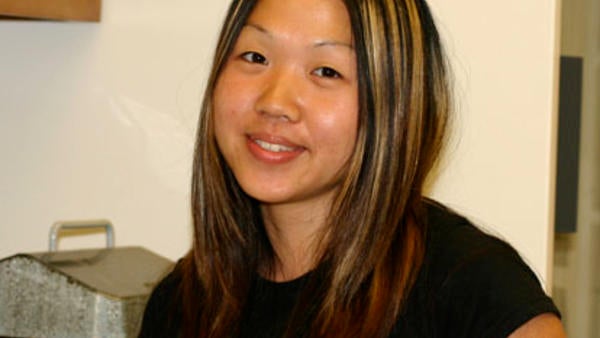
Janet Lee
UCLA
(Jin Lab)
Dr. Jin’s lab is interested in the mechanisms of plant pathogen resistance. Plant diseases cause significant crop losses each year. The pathogen P. infestanscauses late blight, a disease affecting potato and other Solanaceous plants. The RB gene provides a broad-spectrum resistance to late blight and has recently been isolated. EDS1, NDR1, SIPK, and WIPK are genes that are important signaling components in the R gene-mediated disease resistance pathways. In order to determine if these four genes also play important roles in the RB resistance pathway, my project this summer is to study these genes using virus-induced gene silencing. The silencing construct containing the gene of interest is first transformed into A. tumefaciens. I will then inoculate N. benthamiana with the agroinoculum. The virus carrying the silencing gene fragment is extracted from the infiltrated leaves after eight days post silence induction. The extract sap is then used to inoculate wild potato plants that carry the RB resistance genes. After the gene of interest has been silenced, I will use a detached leaf assay to test for resistance. My project will contribute to a better understanding of the RB-mediated resistance signaling pathway, which will hopefully one day lead to crops with improved pathogen resistance traits.
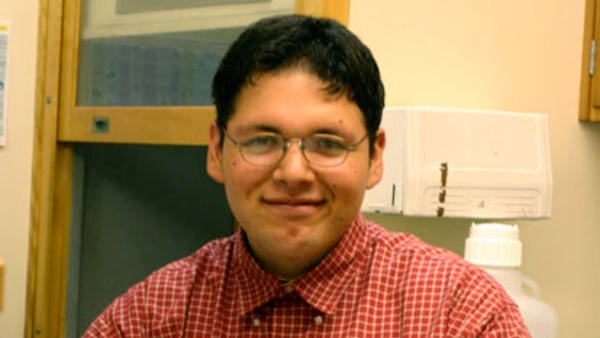
Benjamin Becerra
Cal Poly Pomona
(Smith Lab)
Dr. Smith’s laboratory is focused on understanding the molecular mechanisms that control the specification of flowers during inflorescence development in the shoot apical meristem (SAM) of Arabidopsis plants. As simple as it may sound, flowering is actually one of the most dramatic and important developmental events that occurs during the lifetime of a flowering plant. However, very little is known about the cellular and molecular events associated with flowering. Previous research by Dr. Smith and his colleagues has demonstrated that the two BEL1-like (BELL) homeodomain transcription factors PENNYWISE (PNY) and POUNDFOOLISH (PNF) interact with another transcription factor SHOOTMERISTEMLESS (STM) to form a heterodimer. Genetic studies suggest that inflorescence development requires the redundant activities of PNY-STM and PNF-STM heterodimers, which function to specify flowers, regulate early internode patterning events and maintain the boundary between initiating floral primordia and the inflorescence meristem. Currently, Dr. Smith’s laboratory is focused on understanding the molecular mechanisms by which these homeobox transcription factors specify floral cell fate in response to environmental and endogenous cues.
My goal as an REU student is to characterize the expression patterns of genes regulated by PNY-STM and PNF-STM heterodimers, identify and characterize mutations in pny pnf plants to suppress the non-flowering phenotype and map the genomic positions of these mutants. The laboratory methods I will be utilizing throughout this summer include molecular techniques such as activation tagging, DNA extraction, PCR, gel electrophoresis, and DNA sequencing. I will use histological approaches to localize promoter GUS expression patterns in the SAM and quantitate developmental phenotypes that disrupt flowering and inflorescence architecture in Arabidopsis.
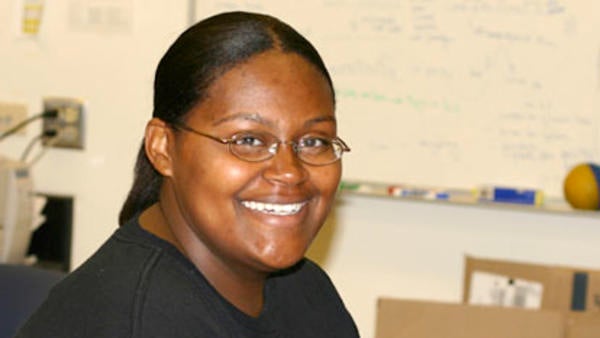
Candida Fielding
Fort Valley State University
(Bachant Lab)
In the Bachant lab, I am trying to understand a possible role for SUMO modification in histone acetylation, DNA replication, and genome stability. SUMO is a small protein belonging to the ubiquitin family of protein modifiers. The addition of SUMO can modulate the ability of proteins to interact with their partners, alter their patterns of subcellular localization and control their stability. SUMO is synthesized as a precursor and processed by hydrolases to make the carboxy-terminal diglycine motif available for conjugation. It is then conjugated to proteins by means of E1 activating, E2 conjugating, and E3 ligating enzymes. Yet after conjugation, SUMO can be removed by a class of enzymes known as SUMO isopeptidases. The main isopeptidase in budding yeast is Smt4. Smt4 is required for budding yeast cells to be able to withstand conditions where hydroxyurea, an inhibitor of DNA replication, is present. This observation suggests that when SUMO modification is misregulated, DNA replication errors arise at a high frequency and must be appropriately processed by the repair machinery in order for the cell to survive. A dosage suppressor screen performed on a Δsmt4 strain has shown that elevated levels of HOS3, which is a gene encoding histone deacetylase, has the ability to suppress smt4 mutant’s sensitivity to hydroxyurea. Histone acetylation itself is very important to the experiment being conducted because this process correlates with transcriptional activity in many genes, including those involved in origin of replication firing. The knowledge of the relationship between SUMO modification, and histone acetylation/chromatin structure brings us to the project of understanding how HOS3 suppresses the hydroxyurea sensitivity of smt4 mutants. The questions that we are addressing to help us further our understanding are as follows: Does HOS3 suppress other smt4 mutant phenotypes, are acetylated histone levels affected by the loss of Smt4 function, and is origin firing altered in smt4 mutants.
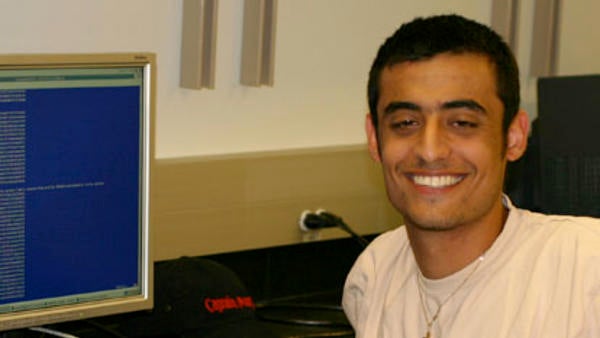
Ricardo Sayegh
Chaffey Community College
(Girke Lab)
The Girke lab is interested in improving the current models of genes with unknown function that are encoded in entirely sequenced plant genomes. Those annotation improvements can often provide important leads for the functional identification of unknown genes on the molecular and biological levels. In this project I will use a comparative genome analysis approach to identify incomplete and new genes in the genome sequences from Arabidopsis and rice. The following three approaches will be used to achieve this goal:
- Assuming there is a low degree of gene order similarity between rice and Arabidopsis (synteny), the identification of identical gene pairs can indicate that the current genome annotation has falsely annotated one longer gene as two separate ones. In those instances the two truncated genes will be merged into one and the correctness of the resulting protein sequence will be confirmed by comparisons against the UniProt databases.
- Completely unidentified genes will be detected by searching for similarities between the intergenic regions and the UniProt databases. Significant similarities in this analysis will result in the discovery of new genes in the annotations of the two genomes.
- Incomplete genes will be identified by comparing the similarities of the intergenic and protein coding regions from the two organisms with the UniProt database. If intergenic and coding segments of the same gene show similarity to one protein then this indicates a truncated gene model that may be correctable with the generated similarity information.
The following computational tools will be used to automate the required searches and analysis steps for this project. Large scale sequence similarity searches of ten thousands of sequences will be performed with the BLAST program on the command-line. Perl scripts will be written to parse and analyze the results. Statistical analysis will be performed with the R program and the final results will be uploaded into an existing web-based database.

Hilary Christensen
Carleton College
(Pirrung Lab)
Small RNAs in Arabidopsis play important roles in gene expression regulation. They consist of two main classification groups: Micro RNAs, which originate from RNA hairpins, and Short Interfering RNAs, which are cut from longer sections of double-stranded RNA. Current methods for detecting these small RNAs are not very effective, so the goal of this study is to develop a method of small RNA detection using a microarray analysis. Consisting of complementary surface-bound primers that fluoresce when they hybridize to their target RNAs (or cDNAs), microarrays are already widely used. However, the small size in the case of microRNAs or siRNAs (20-23 nucleotides) can result in problems such as weaker hybridization between primer and target. The Pirrung lab has developed a technique called APEX (Arrayed Primer EXtension) to specifically analyze RNAs. The microarrays are prepared with complementary primers that hybridize to the RNAs of interest, after which reverse transcriptase adds a fluorescent dideoxy nucleotide. Previous studies have shown that chemically modified primers have a higher affinity for RNA, specifically a 2′ O-Methyl group or a 2′ Fluorine. 2’F is more suitable for high-density microarrays since the extra methyl group on the primer renders it unrecognizable by the enzymes. Due to the fact that only the pyrimidines (C and U) are available commercially in fluorinated forms, our targed RNAs will be A and G rich in order to allow the presence of as many fluorinated bases in the complementary primer as possible.
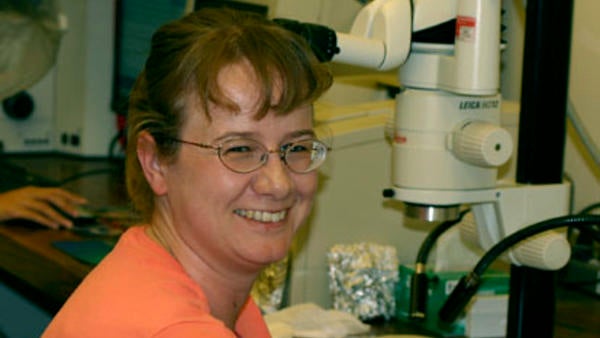
Michelle Brown
Mt. San Jacinto Community College
(Springer Lab)
The summer project in the Springer lab is to investigate whether there is a connection between the LATERAL ORGAN BOUNDARIES (LOB) gene and brassinosteroid signaling in Arabidopsis thaliana. The LOB gene is expressed in the boundary between the meristem and the lateral organs. While the exact function of the LOB gene is unknown, LOB is known to interact with a subset of transcription factors. Some of these transcription factors are regulated by brassinosteroids (BR). Brassinosteroid signaling is associated with many developmental and physiological processes, such as germination, hypocotyl elongation, and wound response.
Interestingly, when LOB is over expressed, the dwarf phenotype that results is very similar to the phenotype of an Arabidopsis thaliana plant that is brassinosteroid deficient. Since root and hypocotyl elongation are indicators of the BR response, precise measurements of both will be taken when plants that over express LOB are exposed to varying concentrations of brassinolide (BL), the most biologically active of the brassinosteroids. In addition, assays to examine molecular responses to BR will be done following BL application in over expressed LOB plants and in wild type plants. These experiments will help to clarify the connection between the LOB gene and brassinosteroid signaling.
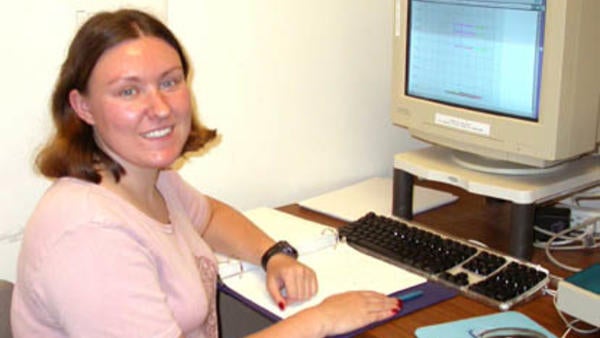
Carrie Thurber
Framingham State College
(Judelson Lab)
Dr. Judelson’s lab studies the genetics of the spore-producing oomycete Phytophthora infestans. P. infestans is a fungus-like organism that produces spores (sporangia) that are uncharacteristic of most true fungi. For example, the Phytophthora sporangia are undesiccated and release zoospores. These zoospores are the main mechanism by which P. infestans spreads disease among plants. Potatoes infected with P. infestans, a condition termed potato late blight, die quickly and spread the disease across large regions in a short period of time. This disease was the major cause of the 1845 potato famine in Ireland and has since resurfaced in potato crops worldwide. I will initially use bioinformatic tools to study genes previously found to be up-regulated during sporulation in this oomycete. These genes include P. infestans cleavage genes, termed Pic genes, and P. infestans sporangia genes, termed Pisp genes. BLAST, or Basic Local Alignment Search Tool, will be used to compare the P. infestans genes to those of related Phytophthora species; P. sojae, the cause of soybean root rot, and P. ramorum, the cause of sudden oak death. By comparison of the conserved regions of these genes it is my goal to determine the functionally important regions of promoters of selected genes. These regions will be amplified using PCR and clone into a plasmid vector. If time permits, this vector will be attached to a GUS reporter gene and tested in P. infestans.
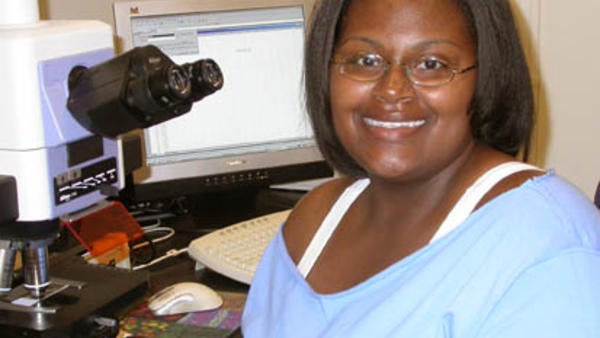
Candida S. Fielding
Fort Valley State University
(Bachant Lab)
In the Bachant lab, I am testing the idea that mutant strains of S. cerevisiae, that lack both the S phase and spindle assembly checkpoints, will be able to initiate and complete mitosis. RAD53 is a protein kinase that is the key regulator of the S phase checkpoint, which prevents mitosis when DNA synthesis is perturbed. rad53 mutants lack the arrest of mitosis, and the mutants move on through the cell cycle with unreplicated DNA. Our lab has observed that although rad53mutants initiate mitosis, they do not complete it. Our hypothesis to explain this observation is that another checkpoint, the spindle assembly checkpoint, compensates for the loss of the S phase checkpoint. If so, we predict that cells containing mutations that cause both checkpoints to malfunction will start and complete mitosis even though DNA is not replicated. To test this I will generate and test two different mutant strains. (1) The first is a rad53 ipl1 mutant. IPL1 (Increase in PLoidy) is a protein kinase that is responsible for preventing chromosome segregation at the spindle assembly checkpoint in the event that the kinetochores are not properly attached to spindle poles. An ipl1 mutant is defective for this checkpoint and is thus unable to prevent chromosome segregation following spindle damage. (2) The second is a rad53 mad2 mutant. MAD2 (Mitotic-Arrest-Deficient) protein detects unoccupied kinetochores and arrests chromosome segregation if microtubules are not properly attached to the kinetochores. mad2 mutants are defective for this response, allowing chromosome segregation to continue even if chromosomes are not properly attached to the spindle. I will test these two double mutants to determine if they initiate and complete mitosis when DNA replication is perturbed.

Marietta P. Boisdore
Southern Univ. at New Orleans
(Raikhel Lab)
The Raikhel laboratory is interested in understanding the role of vacuoles and the endomembrane system in plant growth and development. Mutations leading to a loss of function of genes encoding many of these components are either lethal because the genes are essential, or they have no effect on plant phenotype due to the presence of multiple genes with overlapping function. One new approach to identifying genes involved in endomembrane biogenesis is chemical genomics, in which a library of diverse chemicals is screened for compounds causing specific phenotypes. Using this approach the Raikhel laboratory has identified several novel drugs, namely Sortins 1 and 2, which affect vacuole biogenesis and root development of the weedy flowering plant Arabidopsis thaliana. My participation in this on-going research is to conduct experiments to identify the molecular targets of Sortin 1 using genetics. I will screen approximately 100,000 seedlings for those that are either resistant or hypersensitive to Sortin 1. As a convenient phenotype to detect mutants, I am working with a dose of Sortin 1 that inhibits root development. Thus, resistant mutants will have normal length roots in the presence of a high dose of Sortin 1, whereas hypersensitive mutants will have short roots in the presence of a non-inhibitory low dose of Sortin 1. Putative mutants will be confirmed in two ways: 1) Seeds will be germinated with and without Sortin 1 to confirm that the root phenotype is drug dependent; 2) Seedlings will be viewed by confocal microscopy to examine directly their vacuole morphologies. This is possible because the mutagenized plants also express a marker protein (δTIP-GFP) that allows us to visualize the tonoplast in living cells. Mutants that are confirmed will be backcrossed by the Raikhel team in order to map and clone the genes responsible for resistance or hypersensitivity.
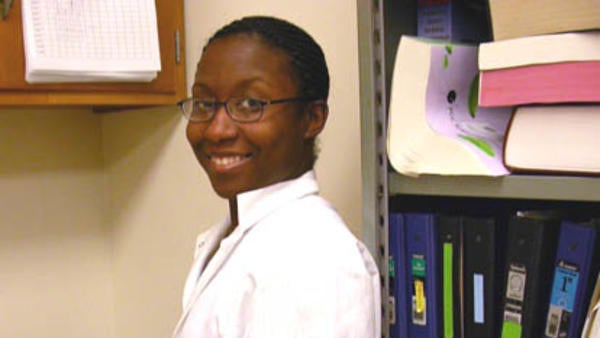
Veronique Matthews
Fort Valley State University
(Yang Lab)
Our lab focuses on the role of Rop GTPase signaling networks in the establishment of cell polarity. I will investigate mechanisms for cell morphogenesis in the epidermal cells of the Arabidopsis thaliana leaf. These epidermis cells have a puzzle-like shape. The formation of the epidermis cells requires coordination and communication between adjoining cells. For this reason, Arabidopsis leaf cells serve as a model system to investigate the mechanism of interdigitated cell formation in a multicellular organ. Dr. Yang’s lab identified 11 Arabidopsis genes that belong to the RIC family (Rop-interacting CRIB-motif containing proteins) that interact with ROP GTPase in the process that interconnects epidermal cells. ROP activates RIC4, which promotes cortical fine F-actin required for outgrowth of lobes. At the same time ROP inactivates RIC1, which promotes transverse microtubules that inhibit outgrowth in the indentation region of the cell. The goal is to figure out how RIC1 proteins promote microtubule assembly. To investigate which domains of the protein are important for microtubule binding and promoting activity, I will perform the polymerase chain reaction (PCR) and plasmid cloning to generate deletion mutants. Next, I will use the gene-gun method to transfer the plasmid DNA into the leaf cells. Then, I will use confocal microscopy to observe how the protein localizes within the cell and function in microtubule assembly. These along with other techniques of molecular biology, biochemistry, and cell biology will be involved in this investigation.
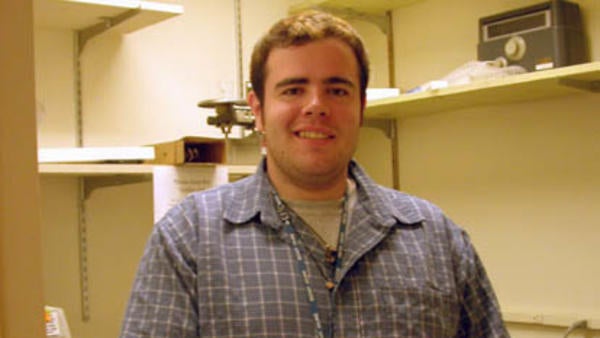
Jonathan Ringler
Aquinas College
(Eulgem Lab)
My lab project involves one of the largest factors in natural selection, the ability of a species to overcome pathogens. Plants are no exception to this rule, though it may seem as if they are at a disadvantage. The immunities of the plant cell ultimately work off of two basic principles. The first recognizes that a pathogen that cannot enter cannot infect; ergo the utilization of complex cell walls and membranes. The second maintains that a pathogen cannot grow in a toxic habitat. When a plant cell senses a pathogenic breech, it initiates a doomsday sequence; the cell becomes poisoned and cannot support the invading threat.
The genetic mechanisms controlling the suicide are currently the subject of research in the Eulgem lab. Two genetic families have been targeted for investigation. One consists of genes that code for calcium-binding proteins (CaBPs) and appear to be thrown into full gear during invasions. The other, known as the WRKY group, seems to be integral in many functions, including immunities. Examining members of both families may expose an individual cell death sequence. The investigation of these functions involves inserting a piece of foreign “T-DNA” by a plant infecting bacterium into a targeted gene sequences, thereby nullifying previous wild-type functions. Another method involves reporter genes, specialized sequences that are inserted at the end of particular gene codes and made manifest when the gene is transcribed. My mentor and I are using these tools to observe the functions of the aforementioned gene families, which may be involved in the plant immune system.

Judy Ann Melendez
Universidad Metropolitana
(Walling Lab)
In Dr. Linda Walling’s lab I am screening a combinatorial chemical library to identify molecules that specifically inhibit or activate leucine aminopeptidases (LAPs), which catalyze the hydrolysis of amino acid residues from the amino terminus of proteins. LAPs are hexameric metallopeptidases that have alkaline pH optima and are inhibited by the potent aminopeptidase inhibitors amastatin and bestatin. The tomato LAP-A is the best biochemically characterized aminopeptidase in plants. LAP-A is highly expressed at the RNA and protein level in response to wounding, various biotic and abiotic stresses and during both floral and fruit development. The plant model organism, Arabidopsis thaliana, has three LAP enzymes, but the roles of these enzymes are unknown. Last summer an NSF-REU student developed a chemical genetics procedure to identify small molecules that inhibit or enhance the activity of tomato LAP-A and Arabidopsis LAP-1. This summer I hope to further characterize tomato LAP-A and Arabidopsis LAP inhibitors and continue to screen the chemical library for new inhibitors and activators. The goal is to find small molecules that specifically inhibit and activate LAPs and not other classes of aminopeptidases. This will provide the Walling lab with tools to better understand the function and importance of LAPs in plants.

Justin D. Wood
San Bernardino Valley College
(Springer Lab)
The LATERAL ORGAN BOUNDARIES (LOB) gene is expressed in the boundary found between lateral organs and shoot apical meristems of plants. LOB is a member of a large gene family called the LATERAL ORGAN BOUNDARIES DOMAIN (LBD), which consists of forty-three similar genes that are found only in plant species. My research will focus on the functional analysis of members of the LBD gene family in Arabidopsis thaliana. To understand the function of these genes, three approaches will be used. (1) The expression pattern of LBD25, one member of the LBD gene family, will be studied. I will analyze transgenic plants that contain a GUS reporter gene under the control of the LBD25 promoter to determine the developmental expression pattern of LBD25 in plants and plant tissue sections. (2) Loss-of-function mutants will be analyzed. We already know that the lbd25 single mutant displays no visible phenotype. This suggests that the function of LBD25 may be redundant to other LBD genes. To test this, plants are mutant for both lbd25 and the related gene ASYMMETRIC LEAVES2 (as2) will be examined. I will use PCR to identify the double mutant plants (lbd25, as2) from a segregating population. The double homozygotes will be examined for phenotypes not present in either single mutant. (3) Publicly-available microarray data will be analyzed to obtain information about LBD gene expression and the processes in which LBD genes may control.

Ivann Martinez
CSU Long Beach
(Bailey-Serres Lab)
This summer I will participate in a project to determine the roles of four genes that each encode a protein of no known function that is highly up-regulated in response to low oxygen stress (hypoxia) in Arabidopsis thaliana seedlings. I will be learn how to grow Arabidopsis, perform stress treatments, extract and analyze DNA and mRNA, and evaluate data available from a number of web-based resources. Previous DNA microarray experiments in the JBS lab that compared wild type control and hypoxia treated Arabidopsis seedlings led to the identification of a group of gene transcripts that have increased abundance under hypoxia stress. Clustering of the DNA microarray data revealed a group of 216 genes that are induced under hypoxia stress; 109 of these genes encode proteins of unknown function. My project aims to identify the importance of four of these genes. My objectives involve: (1) The confirmation of data obtained by the DNA microarray experiment, by studying the changes in mRNA levels and their ribosome association after several time points of hypoxia treatment; (2) The identification of Salk T-DNA insertion alleles for each of these genes, to study whether a loss of each of these genes affects survival of the stress. This will involve the identification of individual plants that are homozygous for the T-DNA insertion allele, from a family of plants that are segregating for the insertion mutation. Screening and genotyping will be done by use of PCR; (3) The compilation of publicly available data on these four genes. Hypoxia stress treatments on wild type and mutant lines will be used in order to compare their response phenotypes.

B. Walter Evans
Univ. of Alabama
(Ding Lab)
It has been my good fortune to be able to work in the Ding lab for the summer. The focus for this lab is on RNA interference (RNAi). RNAi is a conserved mechanism in which genes are silenced by mRNA degradation in a sequence specific manner. RNAi has been found to contribute to antiviral responses, development, and chromatin regulation in many different types of organisms. RNAi has also proven to be an important experimental tool for selected inhibition of expression of genes. My project is to determine if certain factors of a known mRNA degradation mechanism contribute to RNAi in fruit fly (Drosophila melanogaster) cells. For this project, I have been able to learn many knew ideas and techniques due to, in large part, the patience and kindness of my postdoctoral mentor, Dr. Saba Aliyari. I am very grateful for the chance to have these experiences and friendships received in this lab.

Michelle Brown
Mt. San Jacinto Community College
(Borkovich Lab)
My project in Dr. Borkovich’s laboratory involves the mutational analysis of two of the eleven putative hybrid histidine kinase genes of the ascomycete fungus, Neurospora crassa. Dr. Borkovich is conducting an on-going project to study the role of two-component regulatory systems in this multicellular fungus. These cascades regulate a diverse array of functions, ranging from responses to nutritional stress or chemical signals to multicellular development, chemotaxis and light sensing. Two-component systems consist of proteins containing histidine kinase and/or response regulator domains. The “knockout” gene constructs that I am using have already been made by Dr. Borkovich’s team. My goal is to transform these constructs into the yeast, Saccharomyces cerevisiae, then into the bactierum Escherichia coli, and finally, into Neurospora crassa. As these transformations progress through a series of electroporations and analyses using PCR and Southern hybridization, my job is to identify and isolate the mutants for the putative histidine kinases, NCU 01823.1 and NCU 048341.1. By the end of the summer I hope to analyze the fungal mutants for cellular and developmental phenotypes, and their defects compared to those of the response regulator and histidine phosphotransferase protein.

Jacob Vasquez
San Bernardino Valley College
(Raikhel Lab)
My summer research project in Dr. Raikhel’s lab will address the question of how plants sense gravity. Plants can sense gravity, and consequentially roots grow down and shoots grow up. To further our understanding of this I will perform experiments on Arabidopsis, a model plant. We know that the endomembrane system is likely involved in the process of gravity sensing because mutations in proteins that are involved in vesicle transport and vacuole biogenesis (e.g. SGR3 and ZIG) alter gravitropic responses. We will use a genetic approach to find genes and proteins that are involved in the response to gravity. But instead of a “classical” genetic assay where changes in DNA are used to obtain mutants, we will employ a “chemical” approach. Chemical genetics uses small molecules to perturb, study and control cellular and physiological functions of proteins. When we find a “hit,” that is, a chemical that does not allow a plant to respond to gravity, we can get the structure of the chemical that causes the agravitrophic phenotype. The long-term goal is to find the actual protein that is a target for the chemical compound; unfortunately, this question cannot be fully answered this summer.

Rebecca (Beki) Martin
New College of Florida
(Ozkan Lab)
My project in Cengiz Ozkan’s lab combines nanotechnology and plant biology. I am working with engineers to produce bio-conjugated fluorescent quantum dots to a lily flower stylar/stigma cysteine rich adhesion protein (SCA). Quantum dots are nano-sized semiconductor crystals made of cadmium and selenium. They fluoresce a variety of colors ranging from red to blue depending on their size. They are much more resistant to photobleaching than conventional fluorescent markers and their small size make them ideal for visualizing small proteins like SCA. SCA is important in the growth of lily pollen tubes within the style. Using quantum dots as fluorescent markers, it may be possible to localize SCA along a growing lily pollen tube and determine whether it is being taken up endocytosis or if it binds only to surface of a tube. Currently, we are working on stabilizing quantum dots in water and growing lily pollen tubes in vitro. Later, we will put them together with quantum dot labeled SCA in order visualize what happens. I am having a fantastic time learning about nano-technology and lily reproduction. I have been able to use and learn about, state of the art equipment, watch carbon nano-tubes being made and use Scanning Electron Microscopy to visualize things 10 µm and smaller. It is an amazing opportunity to integrate such different fields into an interesting and exciting project.
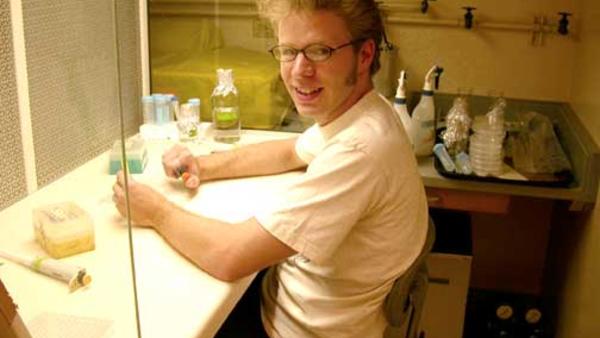
Fredrick (Fred) Larabee
Pacific Lutheran University
(Yang Lab)
In Dr. Yang’s lab, we have been studying the role of Rop (RHO-like GTPase of plants) in cellular signaling. Rop is a small G-protein that acts as a molecular switch in many plant signal transduction pathways. We have been using the emerging technique of chemical genetics in order to discover previously unknown pathways that might involve Rop signaling. Chemical genetics uses small molecules to alter protein functions and is similar to traditional genetic approaches. The advantage to chemical genetics, however, is that genes whose mutation would normal kill the plant and hinder further study, can be altered without being lethal to the plant. In my project, we have been using a mutant of Arabidopsis that possesses a constitutive active (CA) form of Rop2, one of the eleven Rops in this plant. The constitutive active mutant has high levels of Rop2 in its active form, Rop-GTP. These CA-Rop2 plants have a characteristic cotyledon shape, different from the wild type, which can be used as a screen in the chemical genetic assays. By subjecting seedlings to a large library of chemicals and screening for chemicals that change the cotyledon shape back to the wild type, we hope to find chemicals that are involved in Rop pathways. Further study of these chemicals and their interaction with biological molecules will possibly help researchers uncover other Rop mediated signaling pathways.
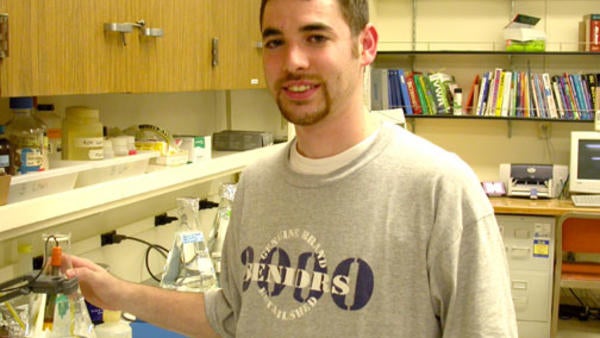
James (Jim) Buchino
Transylvania University
(Walling Lab)
My goal in Dr. Walling’s Lab is to utilize a combinatorial chemical library to find inhibitors and activators of the leucine amino peptidase (LAP) of the model plant Arabidopsis. This project involves a “Chemical Genetics” approach: the use of small molecules to disrupt proteins to obtain a phenotype, which has similarities to classical genetic methods. A “forward chemical genetics approach” would be to use chemicals to cause a phenotypic change in the organism, allowing a protein target to be determined. I will be using a “reverse chemical genetics approach” to find molecules that influence the protein, which can disrupt or enhance the function of a specific protein within an organism or in an in vitro assay. This method can be advantageous over classical genetics because it is reversible, can be applied at any point during development, and can be used at varying concentrations to modulate a phenotype, to avoid classical lethal mutations.
LAP cleaves the amino acid at the terminal end of a polypeptide. Its production seems to be connected to response to water deficit and wound plants. To study this protein I will perform in vitro enzyme assays with substrate leucine 7-amino-4-methylcoumarin, produces a fluorescent product that is measured to quantify LAP activity. It is anticipated that some of the 10,000 molecules in CEPCEB’s chemical genetics library will inhibit or increase the activity of LAP. This has been an excellent summer experience and helped me to make decisions concerning graduate school. I want to thank Dr. Bray, Dr. Bailey-Serres, Dr. Walling, and everyone else involved for giving me such a great opportunity.

Luis Torner
UC Riverside
(Walling Lab)
I am working in Dr. Linda Walling’s Lab under the guidance of Virginia Alonzo. We are currently studying the role of proteins that stimulate prenylation reactions in Arabidopsis thaliana. These prenylation reactions lead to the biosyntheis of isoprenoids. Isoprenoids are compounds involved in plant growth and development. My project has three main goals that will partly be completed over the course of this summer and will be continued throughout the next academic year. I plan on aiding in the characterization of T-DNA insertion lines through the use of PCR. Once I characterize an insertion line that is homozygous, I will look for phenotypic variances. I will also attempt to determine the subcellular localization of prenylation stimulating proteins. In order to complete this part of the project I will need to make my own chimeric construct in which will contain a “reporter” gene such as GFP, YFP, or CFP. With the chimeric construct transformed into the plants, I will be able to see where the plant stores this protein at a subcellular level. Not only will I attempt to determine the protein localization subcellularly but I will attempt to determine tissue specific expression patterns of the proteins. This part of the project is very similar to the previously mentioned part, the only difference being that transgenic plants expressing promoter reporter genes will be evaluated. This summer I will construct promoter:GUS and promoter:GFP transgenes. With the identification of the subcellular localization as well as the tissue specific patterns and the information obtained by growing homozygous mutant lines, I will hopefully be able to contribute to the further understanding of these novel proteins.

Hsiang-I (Jenny) Lee
CSU Long Beach
(Springer Lab)
My research in the Springer lab focuses on the shoot apical meristem (SAM). The SAM plays a vital role in plant development, which determines the shape and position of organs in plants. Unlike animals, plants form organs throughout their life. And it is this exciting difference that brings my attention to the study of genes that have impacts on plants. The Springer lab has been examining the LATERAL ORGAN BOUNDARIES DOMAIN (LBD) gene family specifically for its effects in the development of leaf formation. During the course of research, my goal is to functionally characterize LATERAL ORGAN BOUNDARIES DOMAIN36 (LBD36), which is closely related to LATERAL ORGAN BOUNDARIES (LOB) and ASYMMETRIC LEAVES2 (AS2), genes that are important for leaf development. The objectives of my project are to examine the expression pattern of LBD36 using promoter-GUS fusions, to analyze the phenotype of plants that gain and loss LBD36 function, and also to identify LBD genes in rice genome by using bioinformatics. The initiation of my project is to select the single copy T-DNA insertion of promoter LBD36:GUS fusion and to observe the phenotype of as2 and lbd36 EMS-mutants. Once the promoter LBD36:GUS fusion plants are collected, I will then apply the methods of GUS stain, histology analysis to analyze the expression pattern of LBD36. I will also look into ET1392, which is an enhancer trap line that has an insertion in LBD36 coding region. The dissection of the expression region will be done to verify expression pattern of ET1392. Besides the laboratory techniques that I will acquire, the use of bioinformatics will also be introduced, which allows me to inspect similarities of LOB domain genes between the Arabidopsis genome and the rice genome.
My overall research experience in the Springer Lab has further enhanced my ability in studying plant science. I appreciate the support from the members of the Springer Lab, and special thanks to Dr. Patty Springer for her patience and professional knowledge throughout the course.
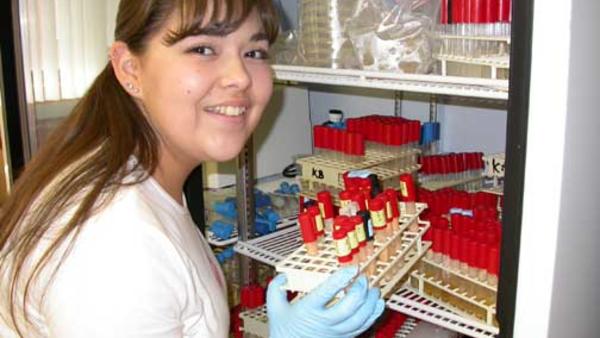
Catrina Romero
CSU San Bernardino
(Borkovich Lab)
While in Dr. Borkovich’s lab this summer I will be studying heterotrimeric G-proteins in Neurospora crassa. G-proteins are components of the signal transduction pathways for most developmental processes in this filamentous fungus. Our main interest in N. crassaheterotrimeric G-proteins is to study the Gβ subunit and Gγ subunit and to verify their interaction with one another. We will also study the interactions of Gβ and Gα subunits. The methods used for this study are the yeast two-hybrid assay and co-immunoprecipitation. For the yeast two-hybrid assay, we designed Gβ and Gγ primers based on cDNA sequences for these genes for N. crassa. We also designed vectors to transform yeast in order to study Gβ and Gγ binding. To study the Gβ and Gα relationship using the yeast two-hybrid assay, we used existing yeast strains and tested interactions using a filter assay for β-galctosidase. For co-immunoprecipitation we began by cloning FLAG, MYC, and HA tag sequences into an E. coli vector. The DNA was then purified from two transformants for each tag and the sent to the Genomics laboratory for DNA sequencing. The results showed the tags had been correctly cloned. The tag sequences are then going to be amplified using PCR, so that they can be cloned in large amounts into the caboxy terminus of the Gβ and Gγ genes. If time permits, we may be able to introduce another tag sequence, GFP, which will allow us to use fluorescence imaging to show the location of the Gβ and Gγ subunits in N. crassa.

Marissa Faeidan
UC Riverside
(Ding Lab)
I am working for Shou-Wei Ding’s lab on a project about programmed cell death and viral suppression of RNA silencing on the experimental plant organism, N. benthamiana. RNA silencing is an extraordinary phenomenon that has rather recently become a resource for studying a vast array of viral diseases in both the plant and animal kingdoms. RNA silencing is used as a host defense mechanism and is thought to be one of the first and foremost steps in determining whether or not RNA or DNA will be eventually expressed. Suppression of gene silencing could be one major way by which plants and even animals are conquered by certain viruses, including HIV. If gene-silencing is suppressed by a viral suppressor protein the outcome is expression of the viral genes and as a result, rapid necrosis.
My project deals with determining if the occurrence of cell death is absolutely necessary in the presence of a gene-silencing suppressor, the 2b protein of cucumber mosaic virus (CMV). When GFP105, a gene that encodes proteins that allow green fluorescence to illuminate, is over expressed by infiltration into a GFP transgenic plant, gene silencing is triggered under normal conditions. Degradation of GFP RNA is thought to occur as indicated by a reddish hue under fluorescent lighting. When CMV 2b is present, gene silencing is prevented, and cell death is inevitable. What we would like to see is if 2b can suppress silencing of GFP without the consequence of cell death. This will be done by concurrently introducing a cell death suppressor gene called AvrPtoB. The effect of AvrPtoB will be compared with a gene Ptoy207D, a mutant strain that triggers cell death upon over-expression of a particular gene (GFP). Other suppressors will also be examined against a control. We will compare the results to those obtained with resistant genes to determine if there is a difference between viral suppression and viral resistance mechanisms that are thought to be very similar or even the same by some investigators. However, we predict that the cell death pathway does not affect the gene-silencing pathway. We hope to see a fascinating outcome that supports the presented predictions.
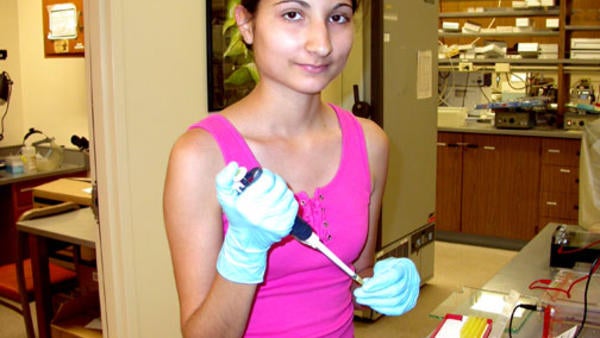
Linda Morales
UC Riverside
(Bailey-Serres Lab)
My research in the Bailey-Serres laboratory focuses on the development of new techniques for the analysis of gene expression. Gene regulation in plant cells occurs at the transcriptional level, as well as post-transcriptional levels, in individual cells and tissues. Most cells are interconnected by plasmodesmata that permit intracellular communication. Current methods for isolation of mRNA do not allow for purification on mRNA from individual cell types.. The goal of the NSF-sponsored project that I am participating in is to develop methods for purification of mRNA from specific cell types of plants. My goal is to construct a ribosomal protein P1 that has an additional His-FLAG tag (epitope tag) at either the amino or carboxy terminus. This gene will be driven by a CaMV (cauliflower mosaic virus) promoter in transgenic Arabidopsis thaliana. We will determine if this epitope tag permits affinity purification of ribosomes. My mentor, Eugenia Zanetti has already tagged several ribosomal proteins from the large and small subunit. I will assist here in the biochemical studies (purification of ribosomes) as well as examination of the effects of the tagged protein on plant phenotype. Tagged protein accumulation and incorporation into ribosomes will be assayed. If the tagged protein is assembled into ribosome, then ribosomes and/or polysomes with the tagged protein along with the associated mRNA will be extracted. Purification of the mRNA and use of microarray will be used as a tool to examine gene expression. If cell or tissue specific promoters are used gene expression in cell or tissue expression can be analyzed without disturbing intracellular communication.

Kim Carpenter
Western Washington University
(Bailey-Serres Lab)
This summer in Dr. Bailey-Serres’ Lab I will be utilizing four genetic stocks of Arabidopsis thaliana in order to better understand the second messengers that may be involved in the induction of alcohol dehydrogenase (ADH) gene expression. I will be working with wild-type Columbia, and the transgenic lines, ADH:GUS, ROPGAP4::DsGUS, DR5:GUS, DR5:GUS: 35S:CA-rop2. The ADH:GUS line contains the Arabidopsis ADHpromoter and 5′ untranslated region linked to the open reading frame of beta-glucuronidase (GUS), a reporter gene. The ROPGAP4::DsGUSline possesses a transposon insertion into the RopGAP4 gene, a negative regulator of ADH gene expression. DR5 is a synthetic auxin-responsive promoter. This promoter is linked to GUS is in the Columbia background (DR5:GUS) and in a line that expresses a constitutive-active form of the GTPase Rop2 (DR5:GUS; 35S:CA-rop2).
Signal transduction through Rop2 is required for the induction of ADH mRNA accumulation in response to oxygen deprivation. In the ROPGAP4::DsGUS line the signaling pathway cannot be effectively turned off once it is activated. Rop2 is also important in the auxin-mediated formation of lateral roots. Lateral roots form in response to oxygen deprivation, presumably through an auxin-dependent pathway. Changes in hydrogen peroxide are important in the low oxygen induction of ADH expression. It has also been shown by other researchers that auxin can result in the induction of ADH specific activity. I will use these lines to determine if, oxygen deprivation for 0, 6, 12 and 24 hours stimulates the expression of DR5:GUS in lateral root meristems, and if this is altered in any way in the CA:Rop2 background. I will also determine if auxin, 2,4-dichlorophenoxyacetic acid, treatment (10, 20, 30 and 40 µg/ml for 3 hours) stimulates the expression of ADH:GUS or ROPGAP4::DsGUS. Our lab has shown that hydrogen peroxide, generated by treatment with glucose and glucose oxidase (G/GO), stimulates ADH induction in a Rop-dependent manner. Thus, I will determine if G/GO treatment, (0, 0.8, 1.6, 2.4 units/ml for 3 h), stimulates GUS production in the ADH:GUS and DR5:GUS lines, and if this is altered in any way in the CA:Rop2 background. Finally, there is evidence of cross-talk between signaling mediated by hydrogen peroxide and another second messenger, nitric oxide (NO). I will also test whether NO affects reporter gene activity in these lines. To do so, I will treat seedlings with a NO-generator, S-nitroso-N-acetyl-D, L-penicillamine, (SNAP), and with a NO-scavenger, 2-(4-carboxyphenyl)-4,4,5,5-tetramethylimidazoline-1oxyl-3-oxide potassium salt, (cPTIO) (2 mM for 0, 3, 6, 9 and 24 h). In summary, my goal for this summer is to look at the relationship between auxin, hydrogen peroxide, nitric oxide and Rop signaling pathway in plant responses to oxygen deprivation.
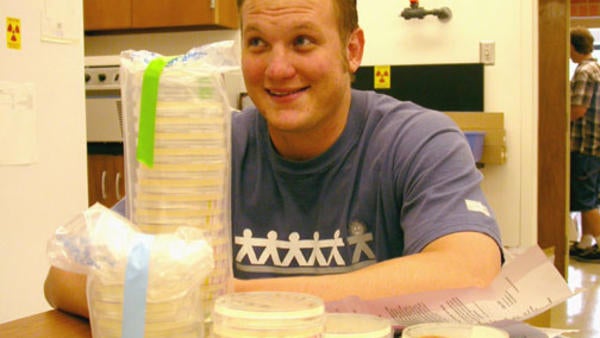
Thomas Laughrey
San Bernardino Valley College
(Nugent Lab)
My summer project in Dr. Nugent’s lab involves the analysis of the TEN1 gene in the yeast, S. cerevisiae. Ten1p, Cdc13p, and Stn1p are an essential set of proteins the physically interact with one another and are critical for maintaining telomere integrity. The telomere is the end region of a eukaryotic chromosome. It aids in chromosome integrity and maintenance. A telemore’s main function is to counteract the tendency of a chromosome to be shortened during replication. This summer I will attempt to isolate TEN1 mutant alleles and test them for temperature sensitivity. Having mutant TEN1 alleles that appear normal at permissive temperatures, but appear to be null-alleles at restrictive temperatures would present the opportunity for direct experimentation. Characterizing these mutant alleles will aid in the understanding of the TEN1 function. Also, it is known that Ten1p interacts with Stn1p and Cdc13p. This summer I intend to identify additional proteins that physically interact with Ten1p. This will be accomplished by use of the yeast-two hybrid assay and co-immunopreciptiation studies. I hope that my work will aid in understanding the molecular function of TEN1.
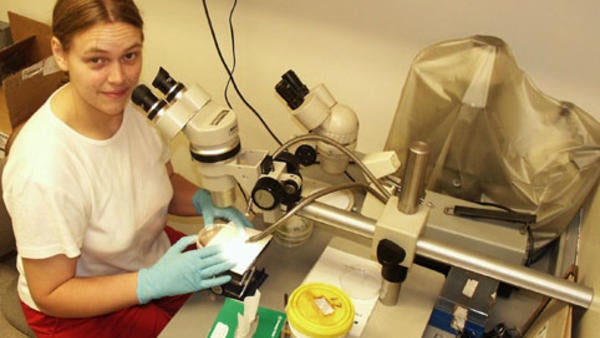
Jennifer Jones
(Julia Bailey-Serres Lab)
The objective of my project in the Bailey-Serres lab is to determine whether Arabidopsis thaliana RopGAP genes (encoding Rho like protein of plants, GTPase Activating Proteins) are differentially expressed in response to stress induced by hypoxia, cold and DCMU (3-(3,4-dichlorophenyl)-1,1-dimethylurea, an inhibitor of photosynthetic electron transport).
Airica Baxter-Burrel, a graduate student in Dr. Bailey-Serres’ lab, has demonstrated that RopGTPases participate in transduction of signals that regulate gene expression in response to hypoxia (Baxter-Burrel et al. 2002). Part of this includes the differential regulation of one RopGAP gene (RopGAP4) in response to oxygen deprivation. However, it is not known whether any other Arabidopsis RopGAP genes (RopGAP 1,2,3,5 or 6) are involved in the hypoxic response or whether RopGAP genes are involved in other plant stress responses. This is being tested using Reverse Transcriptase-Polymerase Chain Reaction (RT-PCR, a method used to determine the abundance of an mRNA transcript).
Another question being addressed is whether DCMU causes oxidative stress that induces the same Rop signaling pathway involved in transduction of hypoxia signals. This can be determined by probing differential regulation of other components of the Rop signaling pathway: ADH (Alcohol Dehydrogenase), GUS (β-glucuronidase) and H2O2, in addition to the RopGAP4 gene. To do this, RT-PCR, ADH activity assays, GUS activity assays and H2O2 measurements are being performed using both, tissue from wild-type Arabidopsis and tissue from a mutant in which the RopGAP4 gene is disrupted with a GUS reporter gene.
At the time I came to the REU program the Bailey-Serres lab had protocols for hypoxia and cold stress induction in Arabidopsis, but not for DCMU stress induction. One of my tasks was to develop a protocol for treating Arabidopsis seedlings with DCMU and determining the degree of DCMU inhibition of photosynthetic electron transport in Arabidopsis seedlings using a fluorescence induction assay. This employed my previous experience using fluorescence assays to screen cyanobacterial mutants for perturbed oxygen evolving complexes.
I am appreciative of Dr. Bailey-Serres’ sensitivity to my interests in allowing me to integrate my previous work using fluorescence assays with this project by allowing me to investigate the effect of DCMU on gene expression. She and other members of her lab have done a fine job teaching and answering my questions. This and the wide applicability of the techniques I am learning in this project make this an experience extremely worthwhile.
Baxter-Burrell AY, Yang Z, Springer PS, and Bailey-Serres J (2002) RopGAP4-Dependent Rop GTPase Rheostat Control of Arabidopsis Oxygen Deprivation Tolerance. Science 296: 2026-2028
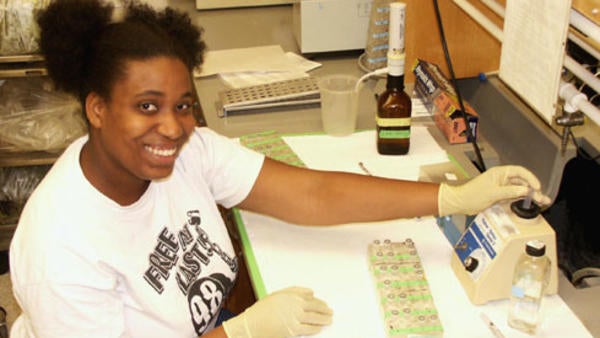
Marjannie Eloi
(Elizabeth Bray Lab)
I am currently working in Dr. Elizabeth Bray’s laboratory at UC Riverside. The focus of study in this laboratory is on the effects of plants under water-deficit stress. An important response of plants to this stress is the accumulation of the plant hormone, abscisic acid (ABA). The goal of my project this summer is to determine how other plant hormones interact with the accumulation of ABA under water-deficit stress. Two plant hormones, ethylene and auxin, are being examined to determine if there is any significant interaction. I am growing Columbia wild-type Arabidopsis seedlings on plates containing precursors of ethylene and auxin. After three days of incubation, I am exposing these seedlings to different water-deficit stress levels. I am measuring ABA and proline levels using an ABA radioimmuniassay and proline assay. I will determine if any of these hormones affect the accumulations of ABA or proline under water-deficit stress.
This is my first research experience. I am enjoying my time and learning a lot of valuable information. I really enjoy the hands-on experience of working on and running my own experiments. I really like this program because I have my own project to work on. I now have a much clearer view of what research is really like. The program is great and I am very happy and thankful that I was selected to be one of the eight students in this program. I feel my experience here will stay with me for a lifetime.
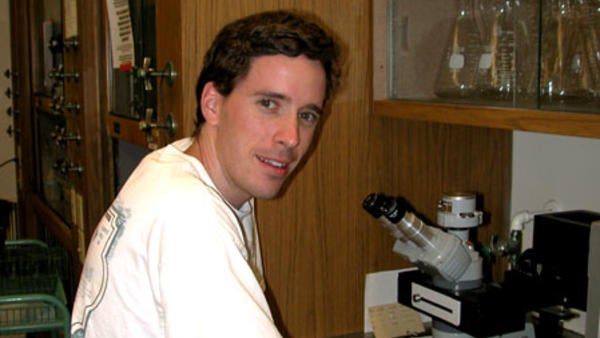
Derrick Sergeant
(Eugene Nothnagel Lab)
My ultimate goal is to become a college or university science professor. I already knew that I enjoyed teaching, having had a lot of experience in that area. But a science professor must also do research. I had very little experience doing full-time work in research before entering this program. I am happy to say that the experience has been extremely valuable and enjoyable. The instruction I have received on laboratory and research techniques are sure to serve me well in the future. My research focused on some of the components of plant cell walls and what happens when their normal function is interrupted. I had a wonderful time investigating this question. What I enjoyed most of all was the freedom to be able to eventually set up my own experiments and be responsible for my own data collection and results evaluation. I have only good things to say about the ten weeks I spent here.

Eduardo Cen
(Zhenbiao Yang Lab)
I have been working with pollen tubes from transgenic Arabidopsis thaliana plants as a model to study a G protein-mediated signaling pathway that acts as a switch for an array of physiological effects in the cell. The genetic transformation technology and molecular techniques I have been learning are valuable information and will most likely prove very useful in my goals as a research scientist. The experience of working in Plant Cell Biology has shown me that good science can be applied to a variety of systems and models; and conversely, one model can be used in a variety of applications of good science.
Overall, my experience here has been very rewarding.
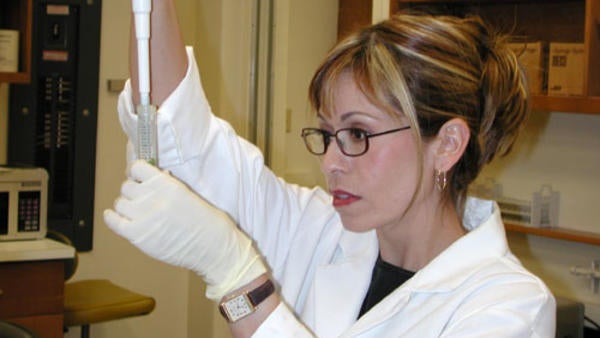
Mattie Irion
(Shou-Wei Ding Lab)
In the seven weeks doing research in the Ding lab, I have had the opportunity to participate in extensive laboratory procedures directly correlated with the cutting-edge research presently being studied involving RNA silencing and the involvement of miRNAs in gene regulation. It was a privilege to be involved in the review process of several papers submitted for possible publication in this growing area of genomics — a responsibility that Dr. Ding normally reserves for graduate and post doctorate participants. I feel blessed to have been mentored by Hong Wei Li, a post doctorate participant in the lab. He was incredibly patient and determined to expose me to the most valuable lab techniques and indispensable information in genomics that I am certain to be ahead of my peers and that I am certain to carry over into medical school. This type of experience and exposure is an “invaluable opportunity” for any undergraduate, which many must wait to get once in graduate school. I am honored to have been selected as one of the first eight participants of this NSF-funded research program, and I would like to recognize and thank all those that participated from CEPCEB.

Susan Garity
(Linda Walling Lab)
The project that I am working on is to identify genes regulated by a phloem-feeding insect, the silverleaf whitefly (Bernisia argentifolii) using gene trap/enhancer trap technology. The project is two-fold. Objective 1 required us to grow wild-type Arabidopsis plants in insecticide-free soil and infest them with silverleaf whiteflies. We then collected tissue from these plants and also our controls at 6 different time points over a course of 36 days. After all 6 time point tissues have been collected, we then can extract RNA from both our control and infested leaves and run an agarose gel. After this is completed, we need to transfer the RNA to a membrane and hybridize it with two different gene probes; PDF1.2 defensin and BGL2, β-glucanase. These genes are known to act exclusively in one of two defense-response pathways; the jasmonic acid-dependent and salicylic acid-dependent. The last part of this objective would be to autoradiograph signals to see the increases in RNAs during infestation. This experiment will identify if WF feeding induces any of the known defense-signaling pathways. The second objective of my project is screening a part of the Arabidopsis gene-trap (GT) and enhancer trap (ET) line available here at UCR. After growing these lines in insecticide-free soil under long-day conditions, we infested each flat with 750 wilverleaf whiteflies and changed them to short-day conditions. Non-infested controls of the Arabidopsis lines were also grown. After 21 days of infestation, we then harvested the developmentally-matched tissue from both the infested plants and our controls. After taking down the screen, the leaves were histochemically stained to identify any GUS activity. Microscopy was done to determine any GUS staining patterns, which were recorded in a GT/ET datasheet. After selecting two lines that I thought were good candidates based on their staining patterns, I then re-grew the two lines and extracted Genomic DNA from two-week old seedlings. TAIL PCR will be done to identify the gene driving reporter gene expression. A database search will let me know if the gene I have isolated is novel or has been previously characterized. Both objectives will help in determining how plants respond to phloem-feeding insects.
Over the course of this internship I have been able to gain knowledge of many different lab methods and techniques. I have been able to see for myself what goes on in a research laboratory and have the opportunity to do hands-on experiments on my own project. The skills and knowledge that I have acquired over the past weeks are priceless. I have learned so much from my PI, Dr. Linda Walling; mentor, Sonia Zarate; and other lab members. It has been an awesome experience and the guidance, instruction and encouragement have been amazing. This truly will be a summer that I will never forget, and the skills and techniques that I have learned over the past few weeks will surely be put to use in the future. I am very thankful for being able to participate in such a great internship as an undergraduate.

Isha Wallace
(Natasha Raikhel Lab)
I’ve been researching genes involved in the biosynthesis of plant cell walls. I use molecular techniques to study the expression of two genes that seem to be related. I also use computer analysis programs to compare homologues of the two genes in other organisms.
Working in a research laboratory has been a great experience. I get to do most of my research on my own and there is always some one to ask for help when I need. it. This experience is not intimidating, as I initially thought. Everyone in the lab is friendly and very supportive.
I enjoyed the experience so much that now I realize more than ever that I really want a career in research. (I also realized that I like working with plants.) I learned a lot about scientific research this summer. I don’t think I could have learned so much anywhere else.
I thank Dr. Raikhel for an opportunity that I will never forget.
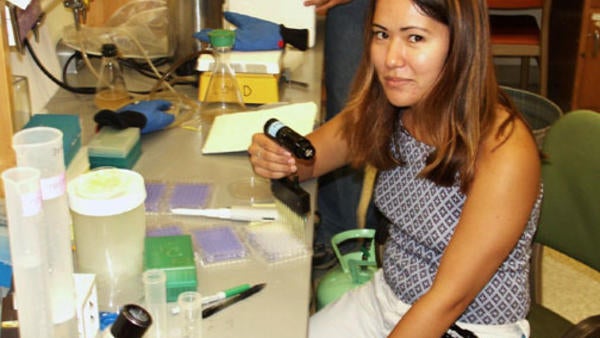
Courtney Hamada
(Elizabeth Lord Lab)
This summer I have been working on determining which chemicals disrupt pollen tube adhesion. The chemical genetics experiment consists of creating an artifical matrix of pectin and SCA and adding to it chemicals as well as pre-germinated pollen tubes, and seeing the effect it has on the adhesion of the pollen tubes to the matrix. Before this summer, I had never worked in a lab before. I was a little intimidated at first; however, that disappeared once my time in the lab began. Every day I learn new and interesting information. My time here always seems to just fly by. I also could not ask for a better enrionment to work in. My mentor, Jean-Claude Mollet, has to be the most patient and understanding person I have ever encountered. If I do not understand something at first, he has at least five other ways he can explain it to me. Also, the graduate students (Sunran Kim and Juan Dong), Kathie Eckard, the other undergraduate student (Kimberly Tan), and of course, Dr. Lord, have all helped me immensely. The experience I have gained working in Dr. Lord’s lab is invaluable. I know it will be extremely useful, not only in the rest of my studies, but also in my future plans. I want to go to medical school and possibly be involved in research. I am very grateful for having this opportunity made available to me.
